Siri Stafford/Getty Images
Advertiser Disclosure

What to know about prepaid travel credit cards
Prepaid travel cards are one more way to access cash while traveling the globe
Published: December 15, 2022

Author: Allie Johnson

Author: Dan Rafter

Editor: Brady Porche

Reviewer: Kaitlyn Tang
How we Choose
Prepaid travel cards can make it easy to access cash while you’re traveling abroad, but remember that convenience comes with limitations.
The content on this page is accurate as of the posting date; however, some of our partner offers may have expired. Please review our list of best credit cards , or use our CardMatch™ tool to find cards matched to your needs.
Finally ready to take your next international trip? Whether it’s a business meeting in Brussels or a foodie’s tour of Florence, you might consider packing a prepaid travel card for your trip.
Prepaid travel cards let you access cash in your destination’s local currency without the risk of using your debit card. They also let you avoid the high fees of credit card cash advances or the hassles of scrounging up traveler’s checks before you depart.
But, be careful — despite the convenience of prepaid travel cards, they come with their own set of fees and limitations (most notably ATM withdrawal and purchase amount caps that could put a damper on your vacation).
“A prepaid travel card is one tool in a diverse travel wallet,” said Julie Hall, internal communications manager for Hilton Grand Vacations and former public relations manager for AAA, in a previous interview. “It’s one of the most convenient ways to get money while traveling.”
Let’s take a look at everything you need to know about prepaid travel cards — from how they work to the pros and cons of using them for your travels.
- How do prepaid travel cards work?
Prepaid travel cards work much like general-purpose prepaid cards, except that they typically offer special features and perks designed for travel — which can vary based on the issuing bank.
In general, to use a prepaid travel card, you purchase the card and simultaneously load it with the funds you want to spend on your trip, up to the maximum amount allowed on the card. (For example, the PayPal Prepaid Mastercard® , a general prepaid card, allows a maximum balance of $15,000.)
Once you’ve arrived at your destination, you can use your prepaid card to make purchases directly (much like you would with a debit card). You can also use it at an ATM to get cash in that destination’s currency.
Depending on the card issuer, you’ll be able to log in to a mobile app or your online account to check the balance, review your purchases and see any any account charges.
- What are the benefits of a prepaid travel card?
Why not just take cash, your credit cards and your debit card the next time you travel to an international destination? Why would you also take a prepaid credit card?
If you lose your card, thieves only have access to the loaded cash
If a thief gains access to your prepaid card abroad, they’ll only have access to whatever funds are loaded onto the card (unlike debit cards, which can provide thieves access to your bank account, or credit cards, which a thief can charge up to a certain limit).
Further, the network through which a prepaid card is offered may provide a zero liability policy , though, overall, prepaid cards don’t offer the same breadth of protections as debit and credit cards (think chargebacks and fraud alerts).
More convenient than traveler’s checks
Prepaid travel cards also provide more convenience than, say, traveler’s checks (which, yes, still exist). Getting traveler’s checks before you go can be a hassle, and you might also be surprised at how many retailers across the globe no longer accept them. As a result, prepaid cards are often a better option than these paper checks.
- What are the drawbacks of a prepaid travel card?
Like most financial products, prepaid travel cards come with pros and cons. Here are some of the drawbacks of using one:
Foreign transaction fees, among others
Travelers should be wary of the fees connected to prepaid cards, as they can add up to a lot of money during an international trip. Many prepaid cards carry foreign transaction fees. Today, it’s far easier to find credit cards with no foreign transaction fees than to find prepaid cards without them.
Further, prepaid travel cards may also charge a card purchase fee, ATM withdrawal fee, higher foreign ATM withdrawal fee, inactivity fee and a fee to get any remaining balance back by check.
No help for your credit score
If you charge restaurant meals, souvenirs and tickets to a traditional credit card and pay your bill on time, your three-digit credit score will receive a boost. This doesn’t happen with purchases you make with prepaid travel cards, because your prepaid card activity isn’t reported to the national credit bureaus .
If you don’t keep track, you could run out of funds
If you’re used to swiping a credit card without much thought, there’s a chance a prepaid card could leave you high and dry when you go to make a purchase. Just be sure to keep tabs on the amount of money you’ve loaded — and spent — on your card.
Prepaid travel card tips
Prepaid travel cards do come with some potential hurdles. Here are some tips for avoiding the most common downsides of these cards:
- Check the fees associated with your card (or potential card): Prepaid cards can charge fees that existing debit and credit card holders aren’t used to, so it’s important to read the fine print before swiping. For example, the Netspend® Visa® Prepaid Card charges a $5.95 inactivity fee per month after the card has been idle for 90 days.
- Verify the card will work at your destination: Double-check with your issuer that your prepaid card will be accepted where you’re traveling. Even a card that’s designed for international travel might not work in specific locations due to restrictions from U.S. trade sanctions.
- Know the limits: Prepaid travel cards typically have limits that could throw a wrench into your trip if you don’t understand them ahead of time. For example, some cards can have a daily reload limit as low as $500 (or as high as $7,500, in the case of the Netspend Visa card). Again: Be sure to read through your card’s fine print before embarking.
- Avoid holds at all costs: In a sense, prepaid travel cards work like debit cards. Be sure to avoid using a prepaid travel card to reserve a hotel room or a rental car, which can trigger a hold that could tie up hundreds of dollars of your cash for a week or longer. Instead, use a credit card to reserve these items, then use your prepaid card to pay the final charges.
Should you use a travel credit card instead?
If the drawbacks of a prepaid travel card outweigh the benefits, you might be better off signing up for a travel credit card or using one you already have as your primary payment method while traveling.
Travel credit cards almost always have zero fraud liability, which can set your mind at ease in the event your card is lost or stolen . They also let you earn rewards for your spending, and many offer purchase and trip protection and have no foreign transaction fees. Some even offer perks such as access to airport lounges where you can get complimentary food and drink. And, depending on your credit limit, you may have more spending power with a credit card than a prepaid card.
That said, they can also have pitfalls. Not all travel credit cards are accepted in all countries. For example, Visa and Mastercard are widely accepted, while American Express and Discover have a smaller international presence. And, depending on your location, some merchants may require chip-and-pin cards or may not accept payment cards at all.
It’s advisable to carry a few different payment methods with you (credit, debit and prepaid) when traveling, along with some local cash. Also, notify your credit card company about your travel plans, lest they flag your card as stolen and cancel it.
Bottom line
A prepaid travel card doesn’t come without downsides, but if you want an easy way to access cash in your destination’s currency — and want a quick way to pay merchants once you arrive at your international destination — the ease of using them might make your trip a less stressful one.
Editorial Disclaimer
The editorial content on this page is based solely on the objective assessment of our writers and is not driven by advertising dollars. It has not been provided or commissioned by the credit card issuers. However, we may receive compensation when you click on links to products from our partners.
Allie Johnson is an award-winning freelance writer covering personal finance, business and lifestyle. She loves tracking down tips, tricks and cautionary tales about credit cards and money.
Dan Rafter has covered personal finance for more than 15 years for publications ranging from The Washington Post and Chicago Tribune to Wise Bread, HSH.com and MoneyRates.com. His work has also appeared online at the Motley Fool, Fox Business, Huffington Post, Christian Science Monitor and Time.
On this page
- Prepaid travel card perks
- Stick with travel credit card?
Essential reads, delivered straight to your inbox
Stay up-to-date on the latest credit card news 一 from product reviews to credit advice 一 with our newsletter in your inbox twice a week.
By providing my email address, I agree to CreditCards.com’s Privacy Policy
Your credit cards journey is officially underway.
Keep an eye on your inbox—we’ll be sending over your first message soon.
Learn more about Education

Best credit cards for international travel
The best credit cards for international travel can make traversing the globe a more comfortable and rewarding experience. Compare our top picks to see how they work for your travel style and goals.

Best no-annual-fee travel credit cards of 2023
Looking for the best travel rewards with no annual fee doesn’t have to be hard. There are plenty of great credit cards you can explore to help you earn and redeem rewards for travel.
Best credit cards for trip cancellation
10 credit and money tips for travel abroad
TSA PreCheck vs. Global Entry vs. Clear: Which is best for you?
How do travel rewards credit cards work?
Explore more categories
- Card advice
- Credit management
- To Her Credit
Questions or comments?
Editorial corrections policies
CreditCards.com is an independent, advertising-supported comparison service. The offers that appear on this site are from companies from which CreditCards.com receives compensation. This compensation may impact how and where products appear on this site, including, for example, the order in which they may appear within listing categories. Other factors, such as our own proprietary website rules and the likelihood of applicants' credit approval also impact how and where products appear on this site. CreditCards.com does not include the entire universe of available financial or credit offers. CCDC has partnerships with issuers including, but not limited to, American Express, Bank of America, Capital One, Chase, Citi and Discover.
Since 2004, CreditCards.com has worked to break down the barriers that stand between you and your perfect credit card. Our team is made up of diverse individuals with a wide range of expertise and complementary backgrounds. From industry experts to data analysts and, of course, credit card users, we’re well-positioned to give you the best advice and up-to-date information about the credit card universe.
Let’s face it — there’s a lot of jargon and high-level talk in the credit card industry. Our experts have learned the ins and outs of credit card applications and policies so you don’t have to. With tools like CardMatch™ and in-depth advice from our editors, we present you with digestible information so you can make informed financial decisions.
Our top goal is simple: We want to help you narrow down your search so you don’t have to stress about finding your next credit card. Every day, we strive to bring you peace-of-mind as you work toward your financial goals.
A dedicated team of CreditCards.com editors oversees the automated content production process — from ideation to publication. These editors thoroughly edit and fact-check the content, ensuring that the information is accurate, authoritative and helpful to our audience.
Editorial integrity is central to every article we publish. Accuracy, independence and authority remain as key principles of our editorial guidelines. For further information about automated content on CreditCards.com , email Lance Davis, VP of Content, at [email protected] .
Here Are the Four Best Travel Money Cards in 2024

François Briod
Co-Founder of Monito and money transfer expert, François has been helping Monito’s users navigate the jungle of money transfer fees, bad exchange rates and tricks for the last ten years.
Jarrod Suda

A writer and editor at Monito, Jarrod is passionate about helping people apply today’s powerful finance technologies to their lives. He brings his background in international affairs and his experiences living in Japan to provide readers with comprehensive information that also acknowledges the local context.
Links on this page, including products and brands featured on ‘Sponsored’ content, may earn us an affiliate commission. This does not affect the opinions and recommendations of our editors.
From the multitude of bank fees and ATM charges to hidden currency conversion fees, there's no question that spending your money abroad while travelling can be costly — and that's saying nothing about the cost of the holiday itself!
As you prepare for your trip abroad, the golden rule is that you'll save the most money by using the local currency of your destination. This means withdrawing local cash at foreign ATMs and using a debit card to pay directly in the local currency. For example, if you're from the UK, using your bank's debit card that accesses your British pounds will likely lose you money to hidden fees at ATMs abroad and at local merchants.
In general, we rate Revolut as the best travel card all around. Its versatile account and card can be used to spend like a local pretty much anywhere in the world. ✨ Get 3 months of free Revolut Premium as a Monito reader with our exclusive link .
If you're from the EU, UK, or US, here are a few more specific recommendations to explore:
- Best for travelling from the UK: Chase
- Best for travelling from the US: Chime ®
- Best for travelling from the Eurozone: N26
If it's not possible for you to spend in the local currency when travelling abroad, then spending in your home currency while using a card that doesn't charge any hidden exchange rate markups from your bank (e.g. only the VISA or Mastercard exchange rates to convert currency) is still a good bet for most people.
In this guide, we explore cards that waive or lower ATM fees and that hold multiple currencies. Spend on your holiday like a local and enjoy peace of mind after each tap and swipe!
Best Travel Cards (And More!) at a Glance
Best travel money cards.
- 01. What is the best best multi currency card? scroll down
- 02. Are prepaid currency cards really it? scroll down
- 03. Monito's best travel money card tips scroll down
- 04. FAQ about the best travel cards scroll down
Revolut: Best All-Rounder
Revolut is one of the most well-known fintechs in the world because it offers services across Europe, the Americas, Asia, and Oceania.

- Trust & Credibility 8.9
- Service & Quality 7.9
- Fees & Exchange Rates 8.3
- Customer Satisfaction 9.4
Revolut is available in many countries. You can double-check if it's available in yours below:
Here's an overview of Revolut's plans:
Revolut Ultra is currently only available in the UK and EU.
Like Wise, Revolut converts your currency to the local currency of your travel destination at an excellent exchange rate (called the 'Revolut Rate', which, on weekdays, is basically on par with the rate you see on Google), making it a good way to buy foreign currency before travelling abroad. As always though, bear in mind that Revolut's exchange rates might be subject to change.
Revolut's Standard Plan only allows currency exchange at the base mid-market exchange rate for transfers worth £1,000 per month. ATM withdrawals are also free for the first €200 (although third-party providers may charge a withdrawal fee, and weekend surcharges may also apply). These allowances can be waived by upgrading memberships.
N26: Good Bank For EU Travellers
One of the most well-known neobanks in Europe, N26 and its debit card operate in euros only. However, N26 is a partner with Wise and has fully integrated Wise's technology so that you never have to pay foreign transaction fees on your purchases outside of the eurozone. While N26 does not have multi-currency functionality, N26 will apply the real exchange rate on all your foreign purchases and will never charge a commission fee — making N26's card a powerful card for EU/EEA residents who travel across the globe.

- Trust & Credibility 7.9
- Service & Quality 8.0
- Fees & Exchange Rates 9.3
- Customer Satisfaction 8.1
These are the countries in which you can register for an N26 account:
And here is an overview of the various plans and account:
This low-fee option for banking is also ideal for travellers who do not belong to a European bank but frequent the Eurozone. For example, N26 is available for residents and citizens of Switzerland, Norway, and other European Economic Area countries that do not run on the Euro.
These citizens, who are in close proximity to the Eurozone, will save each time they spend with an N26 card while in Europe. N26 provides three free ATM withdrawals per month in euros but does charge a 1.7% fee per ATM withdrawal outside of Europe.
Take a look at our guide to the best travel cards for Europe to learn more.
Wise: Best For Multi-Currency Balances
Load up to 54 currencies onto this card at the real exchange rate, giving you access to truly global travel.

- Trust & Credibility 9.3
- Service & Quality 8.9
- Fees & Exchange Rates 7.6
- Customer Satisfaction 9.6
These are the countries in which you can order a Wise debit card:
Unlike banks, credit unions, airport kiosks, and foreign ATMs, Wise is transparent about never charging a hidden exchange rate margin when you convert your home currency into up to 54 currencies. The live rate you see on Google or XE.com is the one you get with Wise.
An industry-low commission fee per transaction will range from 0.35% to 2.85%, depending on the currency.
Chase: Great UK Bank For Travel
A recent arrival from the USA, Chase is one of the UK’s newest digital challenger banks and comes with a rock-solid reputation and no monthly charges, no currency conversion charges, no withdrawal fees, and no other charges for everyday banking from Chase. It’s a simple, streamlined bank account with an excellent mobile banking app and a great cashback offer. However, it doesn’t yet offer more advanced features like international money transfers, joint accounts, business banking, overdrafts and loans, and teen or child accounts.

- Trust & Credibility 10
- Fees & Exchange Rates 10
- Customer Satisfaction 8.7
Chime: Great Account For US Travelers
Chime is a good debit card for international travel thanks to its no foreign transaction fees¹. Unlike multi-currency accounts like Revolut (which let you hold local currency), Chime uses the live exchange rate applied by VISA. This rate is close to the mid-market rate, and Chime does not add any extra markup to your purchases, although out-of-network ATM withdrawal and over-the-counter advance fees may still apply.

- Trust & Credibility 9.5
- Service & Quality 8.8
- Fees & Exchange Rates 9.8
While Chime waives ATM fees at all MoneyPass, AllPoint, and VISA Plus Alliance ATMs within the United States, this fee waiver does not extend to withdrawals made outside the country. For withdrawals abroad, Chime applies a $2.50 fee per transaction, with a daily withdrawal limit of $515 or its equivalent. This is in addition to any fees charged by the ATM owner. Therefore, we recommend Chime primarily for card purchases rather than relying on it for withdrawing cash while traveling internationally.
- No foreign transaction fees ¹;
- Uses VISA's exchange rate ( monitor here ):
- A $2.50 fee per ATM withdrawal made outside of the United States;
- More info: Read our Chime review or visit their website .
Best Travel Money Cards in 2024 Compared by Country
In the table below, see our comparison summary of the four best travel cards for 2024 by country:
Last updated: 8 January 2024
What's The Best Prepaid Card to Use Abroad?

Travel cards come in many varieties, such as standard credit cards or debit cards with no foreign transaction fees or cards that waive all foreign ATM withdrawal fees.
What is a Multi-Currency Card?
Multi-currency cards are a specific type of travel card that allows you to own all kinds of foreign currencies, which you can instantly access when you pay with your card abroad. By spending the local currency in the region of travel , you bypass poor foreign exchange rates. ATMs and cashless payment machines will treat your card like a local card.
We have already mentioned a few multi-currency cards in this review, but we will also introduce Travelex . Travelex's Money Card also allows you to top up several foreign currencies — albeit at exchange rates slightly poorer than the real mid-market rate .
Wise Account
Wise has one of the best multi-currency cards available on the market.

Read our full review for more details.
Revolut is impressive for its vast options in currencies and its additional services.
Our in-depth review explores Revolut's services in detail.
Travelex offers a prepaid travel money card that supports 10 currencies and waives all ATM withdrawal fees abroad.

- Trust & Credibility 9.0
- Service & Quality 5.8
- Fees & Exchange Rates 7.1
- Customer Satisfaction 9.3
Travelex charges fees, which fluctuate according to the exchange rates of the day, in order to convert your home currency into the currencies that it supports. But once the currency is on the card, you'll be able to spend like a local. Learn more with our full review .
Don’t Let Banks, Bureaux de Change, and ATMs Eat Your Lunch 🍕!
Are you withdrawing cash at an ATM in the streets of Paris? Exchanging currencies at Gatwick airport? Paying for a pizza with your card during a holiday in Milano? Every time you exchange currencies, you could lose between 2% to 20% of your money in hidden fees . Keep reading below to make sure you recognize and avoid them.
Currency Exchange Fees Eating My Lunch? What’s That?
You’re often charged a hidden fee in the form of an alarming exchange rate.
At any given time, there is a so-called “ mid-market exchange rate ” — this is the real exchange rate you can see on Google . However, the money transfer provider or bank you use to exchange currencies rarely offers this exchange rate. Instead, you will get a much worse exchange rate. They pocket this margin between the actual rate and the poor exchange rate they apply, allowing the bank or money transfer provider to profit from the currency exchange.
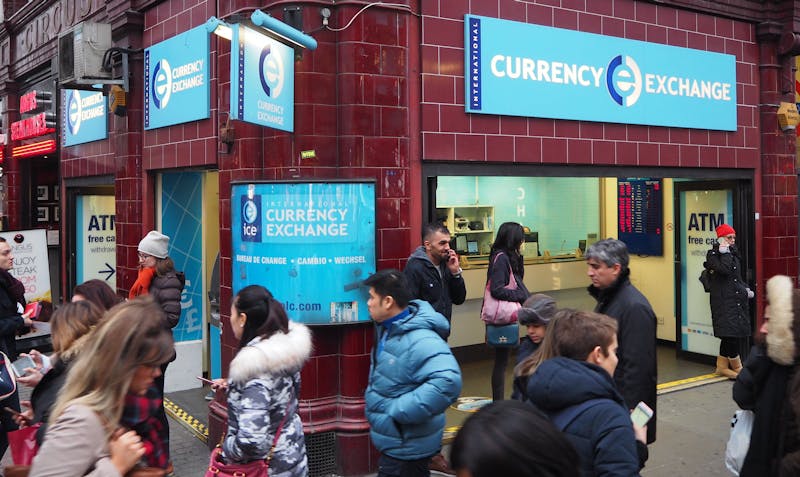
In other words, you or your recipient will receive less foreign currency for each unit of currency you exchange. All the while, the provider will claim that they charge zero commission or zero fees.
So the question now is… how can you avoid them? Thankfully, the best travel money cards will allow you to hold the local currency, which you can access instantly with a tap or swipe. Carrying the local currency avoids exchange rate margins on every purchase.
Top Travel Money Tips
- Avoid bureaux de change. They charge between 2.15% and 16.6% of the money exchanged.
- Always pay in the local currency and never accept the dynamic currency conversion .
- Don't use your ordinary debit or credit card unless it's specifically geared toward international use. Doing this will typically cost you between 1.75% and 4.25% per transaction. Instead, use one of the innovative travel money cards below.
By opting for a travel card without FX fees, you can freely swipe your card abroad without worrying about additional charges. However, saving money doesn't stop there. To make the most out of your travel budget, consider using Skyscanner , one of the most powerful flight search engines available that allows you to compare prices from various airlines and find the best deals.
With Skyscanner's user-friendly interface and comprehensive search options, you can discover cheap flights and enjoy your holidays with peace of mind and more money in your pocket.
Best Travel Money Card Tips

When you convert your home currency into a foreign currency, foreign exchange service providers will charge you two kinds of fees :
- Exchange Rate Margin: Providers apply an exchange rate that is poorer than the true "mid-market" exchange rate . They keep the difference, called an exchange rate margin .
- Commission Fee: This fee is usually a percentage of the amount converted, which is charged for the service provided.
With these facts in mind, let's see what practices are useful to avoid ATM fees, foreign transaction fees, and other charges you may encounter while on your travels.
Tip 1: While Traveling, Avoid Bureaux de Change At All Costs
Have you ever wondered how bureaux de change and currency exchange desks are able to secure prime real estate in tourist locations like the Champs-Élysées in Paris or Covent Carden in London while claiming to take no commission? It’s easy: they make (plenty of) money through hidden fees on the exchange rates they give you.
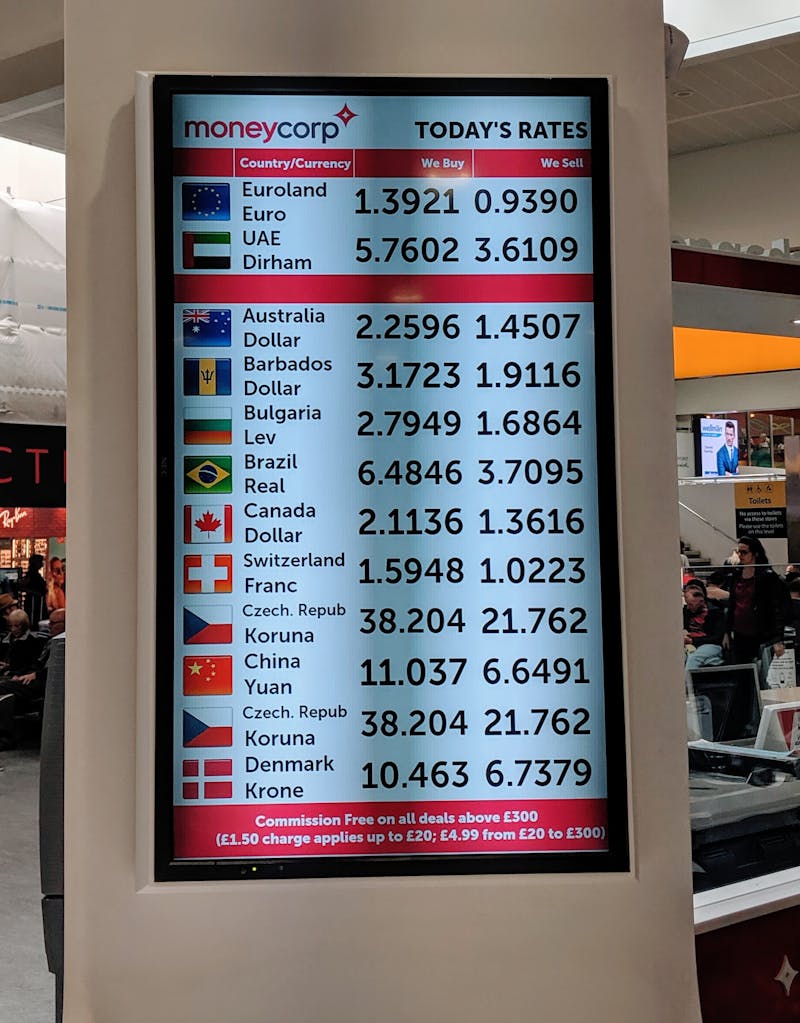
Our study shows that Bureaux de Change in Paris charges a margin ranging from 2.15% at CEN Change Dollar Boulevard de Strasbourg to 16.6% (!!) at Travelex Champs-Élysées when exchanging 500 US dollars into euros for example.
If you really want cash and can’t wait to withdraw it with a card at an ATM at your destination, ordering currencies online before your trip is usually cheaper than exchanging currencies at a bureau de change, but it’s still a very expensive way to get foreign currency which we, therefore, would not recommend.
Tip 2: Always Choose To Pay In the Local Currency

Don’t fall for the dynamic currency conversion trap! When using your card abroad to pay at a terminal or withdraw cash at an ATM, you’ve probably been asked whether you’d prefer to pay in your home currency instead of the local currency of the foreign country. This little trick is called dynamic currency conversion , and the right answer to this sneaky question will help you save big on currency exchange fees.
As a general rule, you always want to pay in the local currency (euros in Europe, sterling in the UK, kroner in Denmark, bahts in Thailand, etc.) when using your card abroad, instead of accepting the currency exchange and paying in your home currency.
This seems like a trick question - why not opt to pay in your home currency? On the plus side, you would know exactly what amount you would be paying in your home currency instead of accepting the unknown exchange rate determined by your card issuer a few days later.
What is a Dynamic Currency Conversion?
However, when choosing to pay in your home currency instead of the local one, you will carry out what’s called a “dynamic currency conversion”. This is just a complicated way of saying that you’re exchanging between the foreign currency and your home currency at the exact time you use your card to pay or withdraw cash in a foreign currency, and not a few days later. For this privilege, the local payment terminal or ATM will apply an exchange rate that is often significantly worse than even a traditional bank’s exchange rate (we’ve seen margins of up to 8%!), and of course, much worse than the exchange rate you would get by using an innovative multi-currency card (see tip #3).
In the vast majority of times, knowing with complete certainty what amount you will pay in your home currency is not worth the additional steep cost of the dynamic currency conversion, hence why we recommend always choosing to pay in the local currency.
Tip 3: Don't Use a Traditional Card To Pay in Foreign Currency/Withdraw Cash Abroad

As mentioned before, providers make money on foreign currency conversions by charging poor exchange rates — and pocketing the difference between that and the true mid-market rate. They also make money by charging commission fees, which can either come as flat fees or as a percentage of the transaction.
Have a look at traditional bank cards to see how much you can be charged in fees for spending or withdrawing $500 while on your holiday.
These fees can very quickly add up. For example, take a couple and a child travelling to the US on a two-week mid-range holiday. According to this study , the total cost of their holiday would amount to around $4200. If you withdraw $200 in cash four times and spend the rest with your card, you would pay $123 in hidden currency exchange and ATM withdrawal fees with HSBC or $110 with La Banque Postale. With this money, our travellers could pay for a nice dinner, the entrance fee to Yosemite Park, or many other priceless memories.
Thankfully, new innovative multi-currency cards will help you save a lot of money while travelling. Opening an N26 Classic account and using the N26 card during the same US holidays would only cost $13.60.
Need Foreign Cash Anyway?
In many countries, carrying a wad of banknotes is not only useful but necessary to pay your way since not every shop, market stall, or street vendor will accept card payments. In these cases you'll have two options to exchange foreign currency cheaply:
1. Withraw at an ATM
As we've explored in great depth in this article, withdrawing money from a foreign ATM will almost always come with fees — at the very least from the ATM itself, and so it's therefore the best strategy to use a travel debit card that doesn't charge in specific ATM withdraw fees on its own to add insult to injury. That said, if you need cash, we recommend making one large withdrawal rather than multiple smaller ones . This way, you'll be able to dodge the fees being incurred multiple times.
2. Buy Banknotes (at a Reasonable Rate!)
As we've also seen, buying foreign currency at the airport, at foreign bank branches, or in bureaux de change in tourist hotspots can be surprisingly expensive. Still, not all exchange offices are equally pricey . If you're looking for a well-priced way to exchange your cash into foreign currency banknotes before you travel, Change Group will let you order foreign currency online and pick them up at the airport, train station, or a Change Group branch just before you leave for your holiday. A few pick-up locations in the UK include:
- London centre (multiple locations),
- Glasgow centre,
- Oxford centre,
- Luton Airport,
- Gatwick Airport,
- St. Pancras Station.
(Note that Change Group also has locations in the USA, Australia, Germany, Spain, Sweden, Austria, and Finland!)
Although its exchange rates aren't quite as good as using a low-fee debit card like Revolut, Change Group's exchange rates between popular currencies tend to be between 2% to 3%, which is still a lot better than you'll get at the bank or at a touristy bureau de change in the middle or Paris or Prague!
FAQ About the Best Travel Money Cards
Having reviewed and compared several of the industry's leading neobanks, experts at Monito have found the Wise Account to offer the best multi-currency card in 2024.
In general, yes! You can get a much better deal with new innovative travel cards than traditional banks' debit/credit cards. However, not all cards are made equal, so make sure to compare the fees to withdraw cash abroad, the exchange rates and monthly fees to make sure you're getting the best deal possible.
- Sign up for a multi-currency account;
- Link your bank to the account and add your home currency;
- Convert amount to the local currency of holiday destination ( Wise and Revolut convert at the actual mid-market rate);
- Tap and swipe like a local when you pay at vendors.
Yes, the Wise Multi-Currency Card is uniquely worthwhile because it actually converts your home currency into foreign currency at the real mid-market exchange rate . Wise charges a transparent and industry-low commission fee for the service instead.
More traditional currency cards like the Travelex Money Card are good alternatives, but they will apply an exchange rate that is weaker than the mid-market rate.
The Wise Multi-Currency Card is the best money card for euros because unlike banks, credit unions, airport kiosks, and foreign ATMs, Wise is transparent about never charging a hidden exchange rate margin when you convert your local currency into euros with them.
The live rate you see on Google or XE.com is the one you get with Wise . An industry-low commission fee will range from 0.35% to 2.85%. USD to EUR transfers generally incur a 1.6% fee.
Learn more about how to buy euros in the United States before your trip.
There are usually three types of travel cards, prepaid travel cards, debit travel cards and credit travel cards. Each have pros and cons, here's a short summary:
- Prepaid travel cards: You usually need to load cards with your home currency via a bank wire or credit/debit card top-up. You're then able to manage the balance from an attached mobile app and can use it to pay in foreign currencies or withdraw cash at an ATM abroad tapping into your home currency prepaid balance. With prepaid travel cards, as the name indicates, you can't spend more than what you've loaded before hand. Some prepaid card providers will provide ways to "auto top-up" when your balance reaches a certain level that you can customize. On Revolut for example, you can decide to top-up £100/£200/£500 from your debit card each time your balance reaches below £50.
- Debit travel cards: Some innovative digital banks, like N26 or Monzo, offer travel debit cards that have the same advantages than a Prepaid Travel Cards, except that they're debit card directly tapping into your current account balance. Like a Prepaid travel card, you can't spend more than the balance you have in your current account with N26 or Monzo, but you can activate an overdraft (between €1,000 or €10,000 for N26 or £1,000 for Monzo) if you need it, for a fee though.
Note that even if they're Prepaid or Debit cards, you can use them for Internet payments like a normal credit card.
- Credit travel cards: You can find credit cards made for international payments offering good exchange rates and low fees to withdraw money abroad, but you'll need to pay interests in your international payment if you don't pay in FULL at the end of every month and interest on your ATM withdrawals each day until you pay them back.
Why You Can Trust Monito
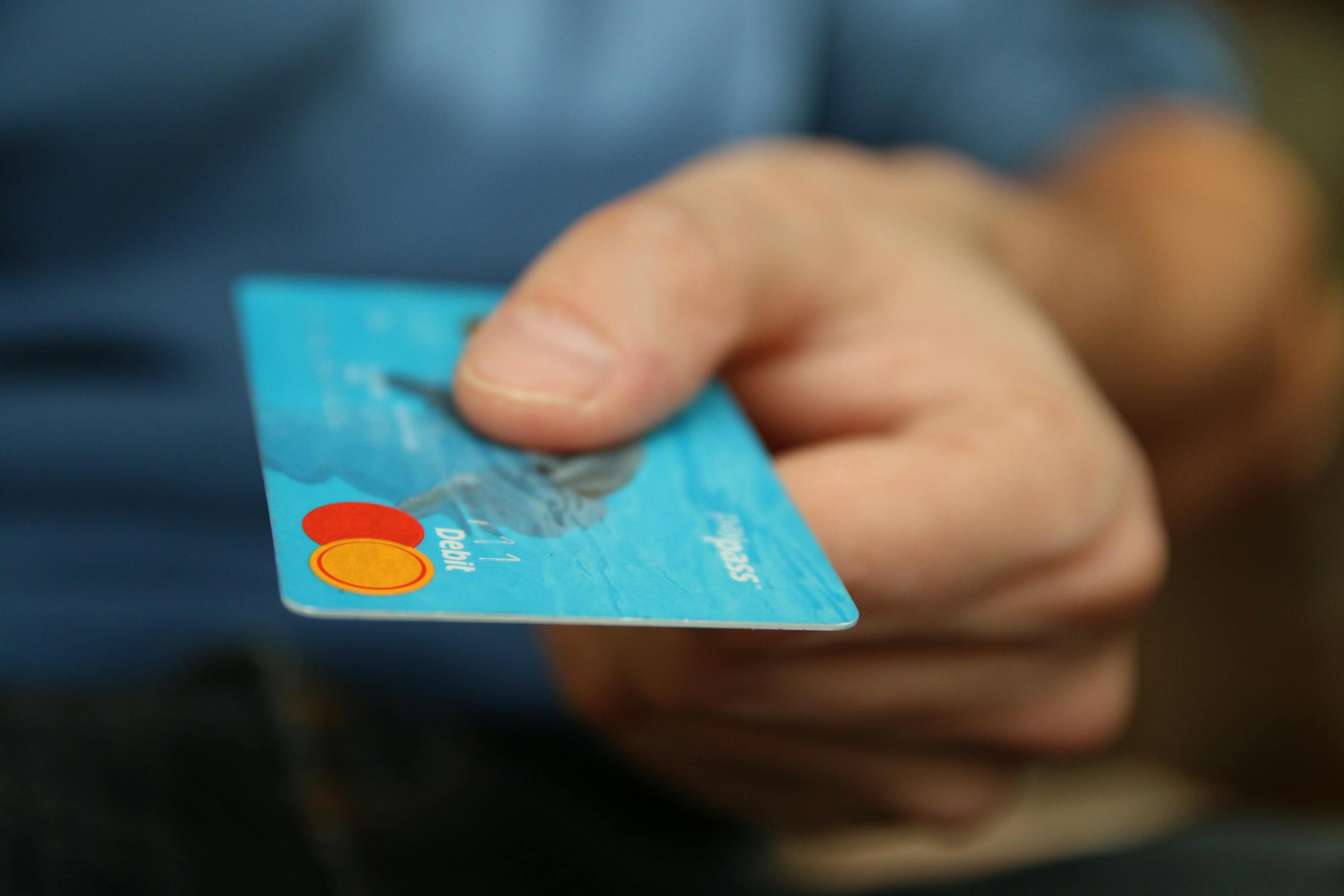
Our recommendations are built on rock-solid experience.
- We've reviewed 70+ digital finance apps and online banks
- We've made 100's of card transactions
- Our writers have been testing providers since 2013
Other Monito Guides and Reviews on Top Multi Currency Cards
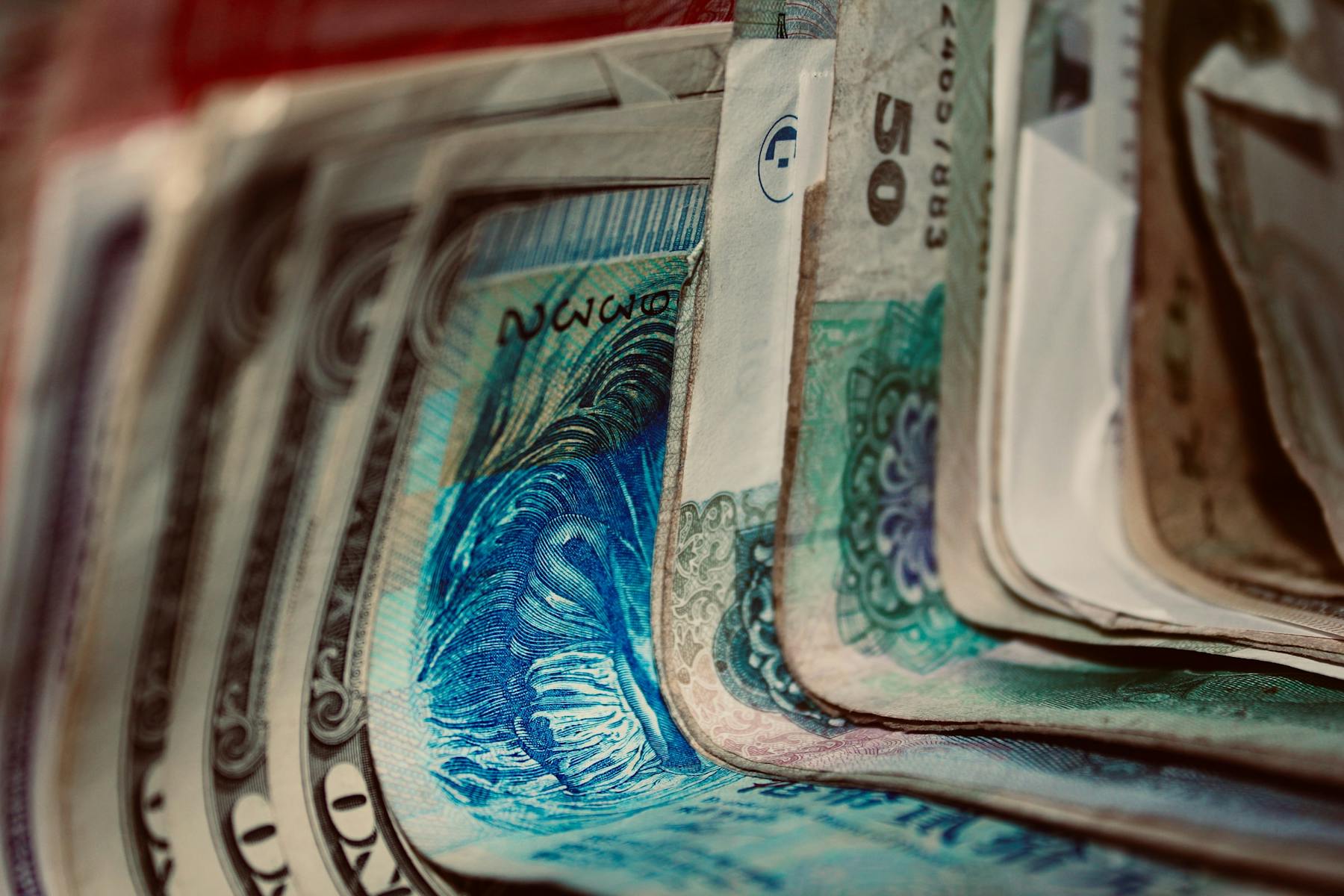
Why Trust Monito?
You’re probably all too familiar with the often outrageous cost of sending money abroad. After facing this frustration themselves back in 2013, co-founders François, Laurent, and Pascal launched a real-time comparison engine to compare the best money transfer services across the globe. Today, Monito’s award-winning comparisons, reviews, and guides are trusted by around 8 million people each year and our recommendations are backed by millions of pricing data points and dozens of expert tests — all allowing you to make the savviest decisions with confidence.
Monito is trusted by 15+ million users across the globe.
Monito's experts spend hours researching and testing services so that you don't have to.
Our recommendations are always unbiased and independent.
Most links in our content provide compensation to Slickdeals. Applying for and maintaining consumer credit accounts is an important financial decision, with lasting consequences, and requires thought, planning and comparison shopping for the offer that best suits your personal situation. That's why we offer useful tools to evaluate these offers to meet your personal objectives. Be sure to verify all terms and conditions of any credit card before applying.
Search Slickdeals Money
Featured articles.

Alliant Credit Union CDs: Lock in Up to 5.20% APY

Best Bank Account Bonus Promotions in May 2024

Are Online Banks Safe in 2024?

Bank of America® Customized Cash Rewards Credit Card Review: $200 Bonus Offer and 3% on a Category of Your Choice
Tips and guides to help you navigate the world of personal finance
How Do Prepaid Travel Credit Cards Work?

- Share on Twitter
- Share on Facebook
- Share on Email
Most products on this page are from partners who may compensate us. This may influence which products we write about and where and how they appear on the page. However, opinions expressed here are the author's alone, not those of any bank, credit card issuer, airline or hotel chain.
Sticking to your travel budget isn't always easy. Using a prepaid travel card is one way to help keep your money safe, and can make sense for those who want to avoid overspending while on vacation.
Prepaid travel cards are an alternative payment option to consider, especially when traveling outside of the U.S. They work like other prepaid debit cards but often come with valuable extra benefits that are perfect when traveling abroad, like loading other currencies onto them.
Keep reading to learn more about prepaid travel cards, how they work and whether they are right for you.
What Are Prepaid Travel Cards and How Do They Work?

Prepaid travel cards are prepaid debit cards that make spending easier when traveling outside of the U.S. Sometimes referred to as international prepaid cards, these cards allow you to load funds using specific currencies before you travel, making them a good tool if you're trying to stick to a specific trip budget. Cardholders can even reload additional funds as needed.
Several payment networks like Mastercard and Visa offer prepaid travel cards. These cards are accepted almost anywhere worldwide and allow you to lock in exchange rates before traveling internationally. They also provide an extra level of security with zero liability protection from unauthorized purchases if your card is lost or stolen.
Types of Prepaid Travel Cards
Most prepaid travel cards fall into two categories.
1. Multicurrency Prepaid Travel Cards
Multicurrency prepaid travel cards allow you to lock in a specific exchange rate in several currencies before you travel. You avoid paying current exchange rates at an international ATM or merchant by loading funds ahead of time.
These cards can be used wherever they are accepted. Since many of these cards are tied to payment networks like Visa or Mastercard, consumers have few limits when using prepaid travel cards.
Not all multicurrency prepaid travel cards offer the same currency options. Some cards only offer a handful of the more popular currencies — the Australian dollar, British pound, Canadian dollar, the euro, Japanese yen and Mexican peso. Other cards offer over 50 different currencies.
2. General Travel Prepaid Cards
General travel prepaid cards work like other prepaid debit cards where you can preload funds into the card, but with a few extra features handy for travelers.
Some features of general travel prepaid cards can include:
- International ATM Use
- Modern Features Like Chip and PIN Capability
- Emergency Cash Assistance
- Quick Card Replacement
How Are Prepaid Travel Cards Different from Credit Cards?
Many consumers are familiar with travel rewards credit cards that can be used to rack up points for travel expenses, but not many know about prepaid travel cards. Prepaid travel cards are different from regular credit cards in a variety of ways, but they work similarly to secured credit cards with self-loaded funds acting as your credit line. Money is deducted from the prepaid card balance with every transaction until the funds are exhausted. However, consumers can add more funds to their prepaid cards using an outside funding source.
Here are the major differences between prepaid travel cards and credit cards.
- Prepaid cards are preloaded with your own money. You can control your spending with a prepaid travel card based on how much money you load onto the card.
- Prepaid cards don't charge interest . That's because you can only use funds loaded onto the card, not borrow from a credit line like a credit card. You could end up paying foreign exchange fees with a prepaid travel card or a credit card, although many of the top travel rewards credit cards don't charge this fee.
- Prepaid travel cards don't have any bearing on your credit score or history . They can't help boost your credit or hurt it because they're not reported to the credit bureaus since you use your own money to fund the card.
Pros & Cons of Using a Prepaid Travel Card

Just like any payment option, there are benefits and drawbacks to using prepaid travel cards. Here are some of the pros and cons to consider before getting a prepaid travel card.
Pros of Prepaid Travel Credit Card
- Helps you stay within your travel budget.
- Lock in the currency exchange rate in advance.
- Safer than a debit card or carrying cash.
- Load multiple currencies onto one card.
- Chip and PIN technology.
- Use at ATMs and shopping online.
Cons of Prepaid Travel Credit Card
- Foreign transaction fees and ATM fees, among other fees.
- Doesn't help you build credit.
- No overdraft option.
- May not be able to use at hotels that only take credit cards.
- Few (if any) travel protections.
- No travel rewards.
Are There Fees With Prepaid Travel Cards?
While there are several benefits to using prepaid travel cards, there is one negative attached to most cards — extra fees. You could face several fees if you choose to use a prepaid travel card, including:
- Foreign transaction fees : Many cards charge a fee when you use a prepaid card while traveling abroad. You could see charges of up to 4% or higher on some prepaid cards.
- Monthly fees : You could also pay a monthly fee for using a prepaid card. Some cards have fee structures that include a monthly fee, while others opt to charge cardholders per transaction instead. Some cards charge fees upwards of $9.95 per month. Some cards waive the monthly fee by meeting balance or deposit requirements.
- ATM fees : Using a prepaid card at an ATM typically involves paying a fee, whether used at a domestic or international ATM.
Other common prepaid card fees include:
- Initial load fee
- Inactivity fee
- Transaction fee
- Cash reload fee
- Balance inquiry fee
- Replacement card fee
Fees attached to your card may depend on the specific card, payment network or how you use the card.
Is My Money Safe On A Travel Card?
One big benefit of prepaid travel cards is the security they provide, such as:
- Funds are not linked to your bank : Unlike a debit card, a prepaid card isn't attached to your bank account. If your card is lost or stolen, you're less likely at risk of someone emptying your checking account. Your exposure is limited only to the funds on the card itself.
- Chip and PIN authentication : Many prepaid cards also feature chip and PIN technology, giving you another safeguard if your card is stolen. You can contact your card provider to freeze the card account if necessary.
- Zero-liability fraud protection : Several popular travel prepaid cards come with zero-liability fraud protection. Regardless of the card, prepaid cards must carry the same level of fraud protection as debit cards.
Can I Get A Prepaid Travel Card If I Have Bad Credit?
Because prepaid cards are secured with cash, there’s typically no credit check involved. That's what makes prepaid cards an attractive good option for individuals with bad credit who may have a hard time qualifying for a travel credit card. If you have cash, generally, you can get a prepaid card.
Unfortunately, prepaid travel cards don't help you build credit either. There are no monthly payments to report to credit bureaus. Prepaid cards also don't impact your credit utilization ratio, credit mix or length of credit history, all factors that could improve your credit. A prepaid card could be a good option short term when traveling but shouldn't be a substitute for other payment options that can help improve your credit.
Are Prepaid Travel Cards Worth It?
A prepaid travel card could be worth it for individuals who are seeking a safe payment option when traveling internationally and want to keep their spending abroad in check. It can also help to lock in a lower exchange rate instead of leaving it to chance with fluctuating rates.
But prepaid cards have their limitations too. They usually do not come with travel rewards or allow the cardholder to build credit by using the card. Don't forget that most prepaid cards also charge foreign transaction fees and other fees like monthly fees or inactivity fees.
Shop around if you're thinking about getting a prepaid card for your next international trip. Compare card fees, features and benefits to find one that fits your needs and is accepted in places you travel. Another option is to use multiple payment options when you travel. Using a prepaid card in combination with a credit card and debit card allows you to use each card in situations where it's advantageous. This also protects you if you run into any issues with your prepaid card.
Kevin Payne
Kevin Payne is a personal finance, credit card, and travel writer. He is the family travel and budget expert behind FamilyMoneyAdventure.com. Kevin lives in Cleveland, Ohio, with his wife and four kids. His work has appeared on several websites, including FinanceBuzz, Credit Karma, Millennial Money, Club Thrifty, Student Loan Planner and Slickdeals.
Follow the Money
Get all the latest finance topics and tips delivered straight to your inbox weekly.
Slickdeals Money Guide Tips and guides to help you navigate the world of personal finance Learn More
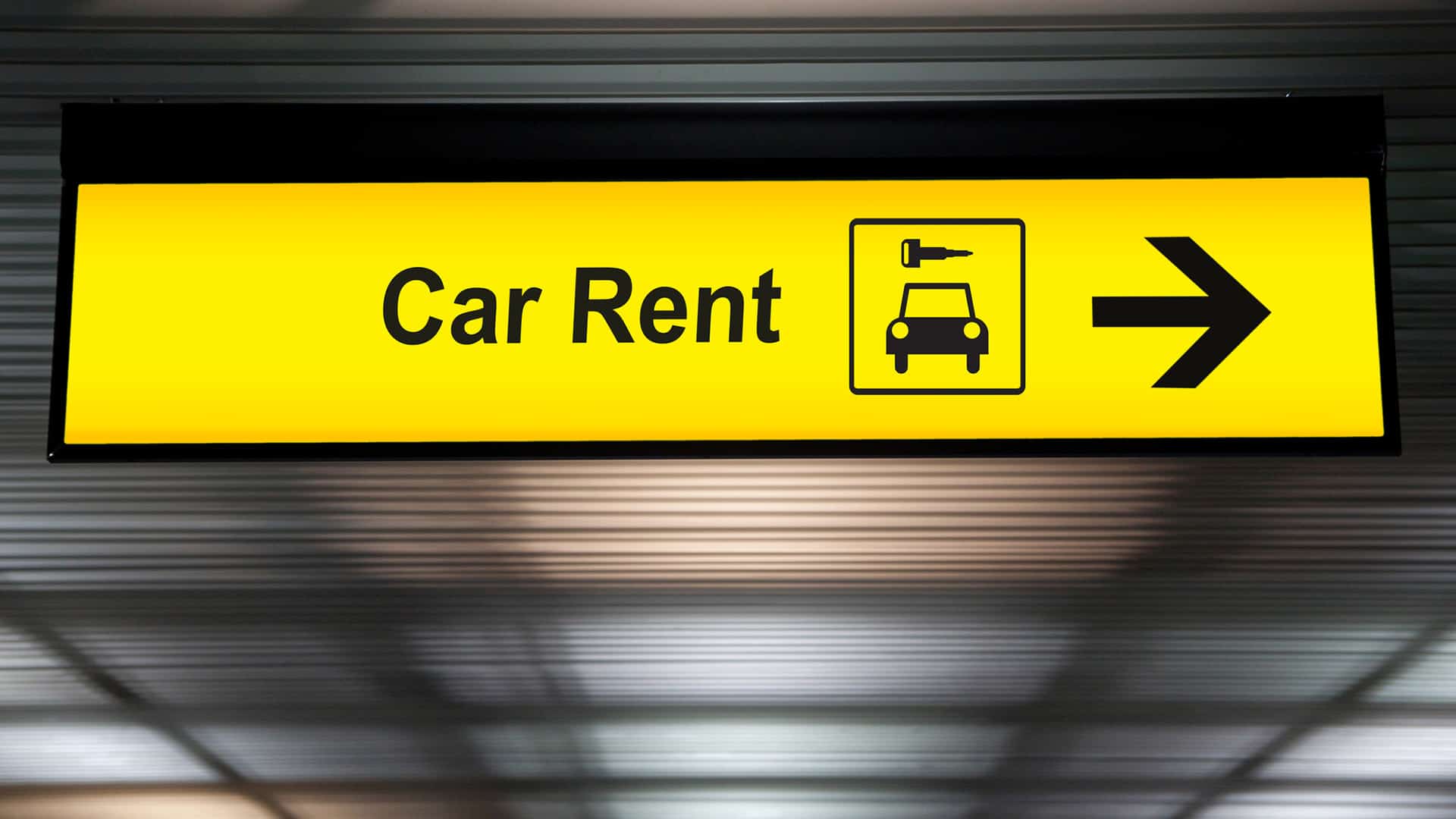
How to Rent a Car if You Don’t Have a Credit Card

3 Best Credit Cards for International Travel
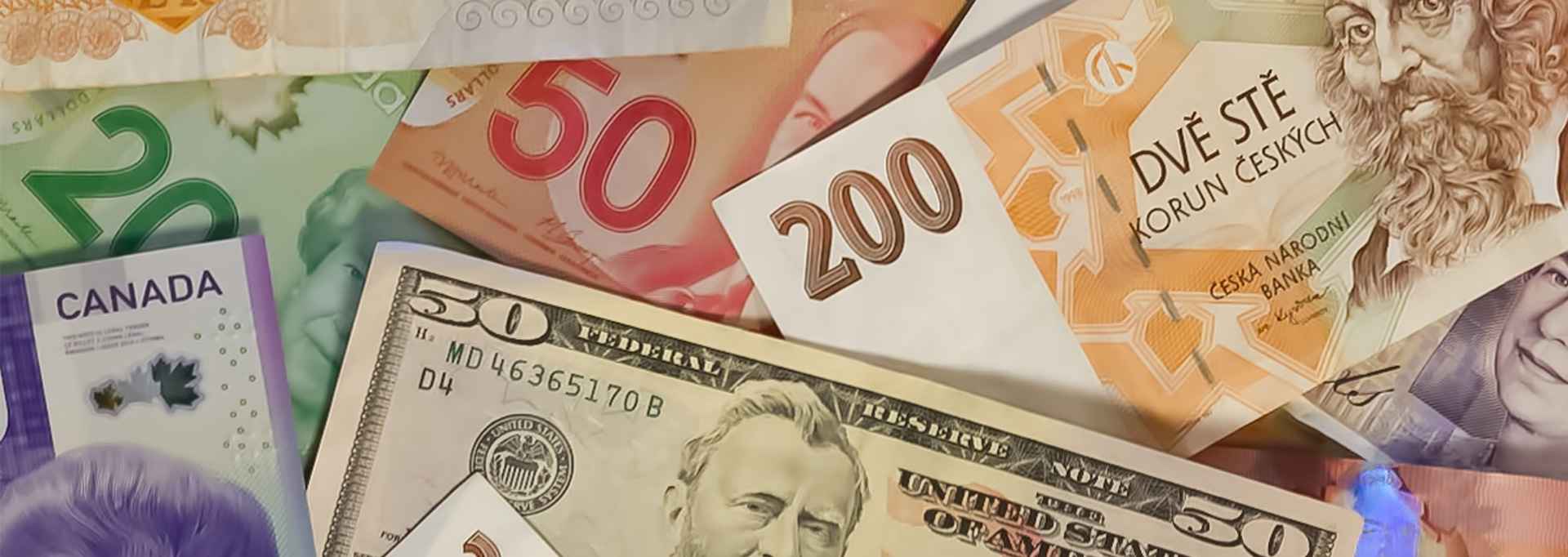
4 Ways to Send Money Internationally

6 Best Banks for Global Travelers
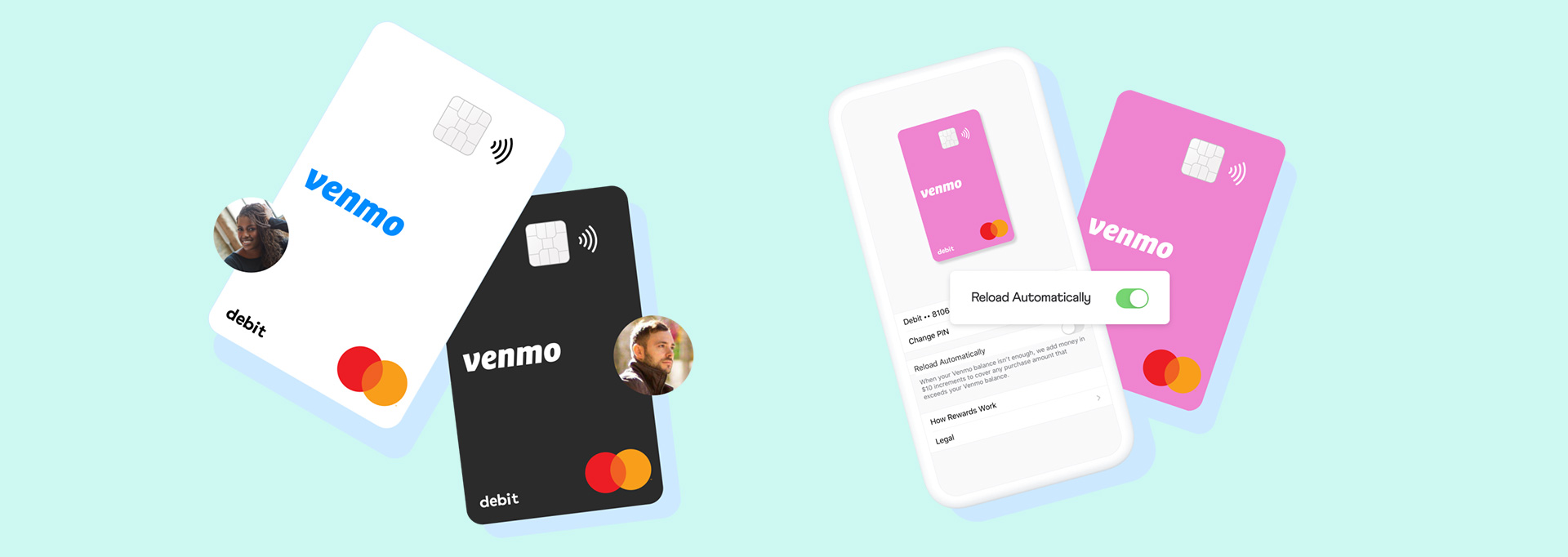
Venmo Debit Card Review: Is It Worth It?

How Do Gas Credit Cards Work?

A Simple Guide to Credit Card Travel Protections

9 Most Common Bank Account Fees (and How to Avoid Them)
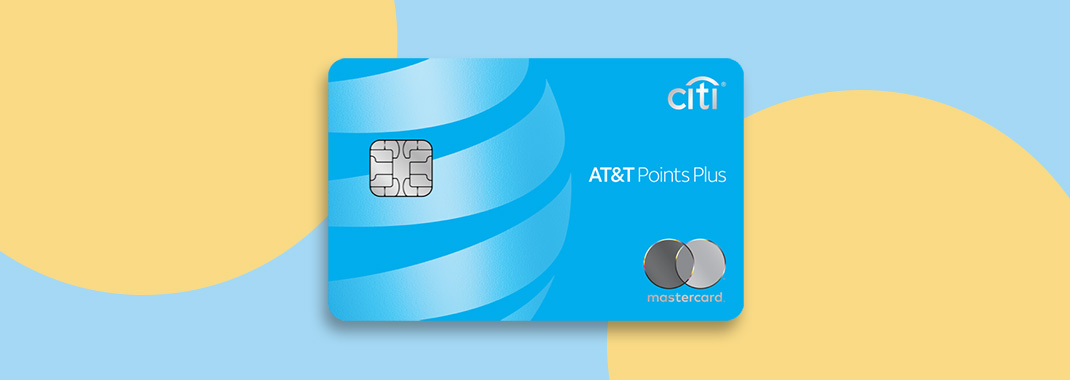
AT&T Points Plus Credit Card from Citi Review: Up to $240 in Annual Statement Credits

Citigold® Checking: Earn Up to $2,000 for Opening a New Account

How to Dispute a Charge on a Debit Card

8 Cool Facts About the Exclusive Amex Centurion Card
- Prepaid Cards >
- Travel Prepaid Cards
Compare our best prepaid travel cards
Simplify your spending abroad with a prepaid travel card, find a prepaid travel card, what is a prepaid travel card.
A prepaid travel card , also known as a 'travel money card', is a debit card that you preload with money and take on holiday. It's a good way to stick to your holiday budget and avoid carrying a lot of cash.
Prepaid travel cards can be used at cashpoints, in shops and restaurants , or anywhere that accepts Mastercard or Visa debit or credit cards.
However, a prepaid travel card is not the same as a credit card for two key reasons:
You can only spend the amount you have put on the card; the pre-loaded limit prevents you overspending and getting into debt
You can choose which currency to preload your travel money card with depending on where you're going, which often means you can secure a better exchange rate
Pick a card with fees that suit how you plan to use it, e.g. choose one with no withdrawal fees if you'll be withdrawing cash often while travelling.”
What are the different types of prepaid travel cards?
Multi-currency prepaid cards.
These can be loaded with several different currencies , making them ideal for both frequent travellers and those taking trips to multiple destinations. For example, you holiday in Europe but often visit the US on business, you could use a prepaid travel card to cover your everyday spending wherever you are by topping it up with say £600 then exchanging £200 into euros and £200 into US dollars. The different currencies will then be stored in separate “wallets” , allowing you to switch currencies when you like.
Sterling prepaid cards
These can be used at home and abroad , making them even more flexible than the best travel cards offering multiple currencies. You don’t need to worry about setting up a wallet for the currency you want to use; the card provider simply converts your pounds to the required currency each time you make a purchase . However, this can make holiday budgeting harder and may increase your costs, depending on the charging structure.
Euro prepaid cards
As well as multi-currency cards, you can take out prepaid cards designed to hold a specific currency . This can work out excellently if you're trying to lock in a good rate now by loading your euro prepaid card, but if you then use the card to buy things in a country that isn't in the eurozone. That's because if you spend in a country that does not use the euro, it converts to the local currency each time you make a purchase, which can work out more expensive.
Prepaid US dollar cards
These keep your balance in dollars . If you spend in countries that use a different currency, the card will exchange your dollars to the local currency, and you might well be charged a fee. The currency exchange takes place as soon as you load your card . If the pound strengthens afterwards, you won’t be getting the best value for money, but it if weakens you'll do well.
How to get a prepaid travel card
Compare cards.
Use our table below to find prepaid travel card that offers the features you need with the lowest fees
Check your eligibility
Make sure you fit the eligibility criteria for your chosen travel money card and can provide the required proof of ID
Apply for the card
Click 'view deal' below and fill out the application form on the provider's website with your personal details
What are the eligibility requirements?
Anyone can get a prepaid travel card. There's no need to have a bank account, and no credit checks are required . Some providers have a minimum age of 18, but many will let you have a prepaid card from the age of 13 with parental consent.
Sometimes parents like to use travel money cards to give their children a set amount of holiday money , and to help teach them about budgeting and financial responsibility.
Pros and Cons
What exchange rate do you get.
Exchange rates vary over time depending on what is happening in the wider economy. That means the exchange rate you get on a US dollar travel card today, for example, might not be the same as you get tomorrow or next week.
What prepaid cards offer is the ability to lock in today's rate to use later on. That could see you better off if the pound weakens, but might also mean you get a poor deal if the pound strengthens.
That offers is certainty - you'll know exactly how many dollars, euros, lira or whichever currency you load onto the card you have to spend on holiday.
Today’s best exchange rates
At what point is the currency exchanged with prepaid travel cards.
Some prepaid travel cards hold the balance in pounds sterling. These convert the required amount to the local currency every time you spend on them .
The exchange rate isn’t fixed, so you’ll only know how many pounds you have on the card - not what it will buy you while overseas.
But the cards in our comparison table convert your money when you add it onto the card. This means you know the exchange rate used and your card's exact balance before you go away.
Compare the rates before you choose a prepaid card. Although rates can change several times a day, some travel cards will be more competitive than others.
Using a card with competitive exchange rates will mean you get more local currency for your pound.
You also need to watch out for fees as well as withdrawal limits when choosing a card, as these can vary between providers.
What are the alternatives to prepaid travel cards?
Travel credit card.
A travel credit card works just like a regular credit card, with which you can make purchases by borrowing money. The main difference is that travel credit cards don't charge foreign transaction fees for spending abroad.
Travel money
For many people, cash is the most comfortable form of payment when travelling. It's hassle-free and universally accepted. But it’s riskier, as you'll lose out if it’s lost or stolen and you’ll need to budget carefully to ensure your foreign currency lasts the length of your trip.
Travel debit card
These days, there are plenty of specialist banks and providers that offer bank accounts that don't charge foreign transaction fees when used abroad. This offers you a chance to take advantage of the best exchange rates. And if it's your main current account, you won't have to worry about topping up your account before you go.
What other costs or fees are there with prepaid travel cards?
As well as the exchange rate, you might have to pay several other charges on your prepaid travel card.
These could include:
A fee to buy the card
A monthly or annual fee for keeping the account open
Cash withdrawal fees
Transaction fees when you pay for anything on the card
Inactivity fees
Loading fees when you add money onto the card
Some cards also charge fees for withdrawing cash or making purchases inside the UK .
But some of the cards in this comparison do not charge fees in countries that use currencies loaded on the card - just make sure the right one is selected before spending on them.
Check carefully for fees before you pick one.
Read our full guide on how much it costs to use a travel prepaid card and how to choose one .
"With multi-currency cards, check you've selected the right currency before you arrive."
How long does it take to get a prepaid travel card?
You can apply online and get a decision immediately. However, it can take up to two weeks before your card arrives in the post.
Can I use any prepaid card abroad?
Yes, you can use prepaid Visa or Mastercard cards in most destinations worldwide. Travel prepaid cards are usually cheaper to use overseas than a standard credit or debit card.
Can I withdraw cash abroad?
Yes, you can use a travel money card in a cash machine outside the UK. Some cards charge fees for this, so always check if you want to use your prepaid travel card to make cash withdrawals.
What currencies can my card hold?
All the travel money cards in our comparison can hold a balance in popular currencies such as euros or dollars, while some support more than 50 different currencies.
Can I make international payments?
Yes, some providers let you send or receive money from abroad by logging into your online account, which works in the same way as standard internet banking.
Who sets the exchange rate?
This depends on the company that processes the transactions. Typically, it’s down to Visa or Mastercard , as well as your card provider, which may take an additional cut.
Can I use my prepaid card in the UK?
You can use prepaid cards to withdraw cash or buy things in the UK or online. However, you may pay fees or even an exchange rate if your card is loaded with a foreign currency.
Explore our prepaid card guides

About the author

Didn't find what you were looking for?
Our most popular prepaid card deals
Other products that you might need for your trip
Customer Reviews

Hub of information!

Super accessible and easy to use
Very helpful
- Credit Cards
- All Credit Cards
- Find the Credit Card for You
- Best Credit Cards
- Best Rewards Credit Cards
- Best Travel Credit Cards
- Best 0% APR Credit Cards
- Best Balance Transfer Credit Cards
- Best Cash Back Credit Cards
- Best Credit Card Sign-Up Bonuses
- Best Credit Cards to Build Credit
- Best Credit Cards for Online Shopping
- Find the Best Personal Loan for You
- Best Personal Loans
- Best Debt Consolidation Loans
- Best Loans to Refinance Credit Card Debt
- Best Loans with Fast Funding
- Best Small Personal Loans
- Best Large Personal Loans
- Best Personal Loans to Apply Online
- Best Student Loan Refinance
- Best Car Loans
- All Banking
- Find the Savings Account for You
- Best High Yield Savings Accounts
- Best Big Bank Savings Accounts
- Best Big Bank Checking Accounts
- Best No Fee Checking Accounts
- No Overdraft Fee Checking Accounts
- Best Checking Account Bonuses
- Best Money Market Accounts
- Best Credit Unions
- All Mortgages
- Best Mortgages
- Best Mortgages for Small Down Payment
- Best Mortgages for No Down Payment
- Best Mortgages for Average Credit Score
- Best Mortgages No Origination Fee
- Adjustable Rate Mortgages
- Affording a Mortgage
- All Insurance
- Best Life Insurance
- Best Life Insurance for Seniors
- Best Homeowners Insurance
- Best Renters Insurance
- Best Car Insurance
- Best Pet Insurance
- Best Boat Insurance
- Best Motorcycle Insurance
- Best Travel Insurance
- Event Ticket Insurance
- Small Business
- All Small Business
- Best Small Business Savings Accounts
- Best Small Business Checking Accounts
- Best Credit Cards for Small Business
- Best Small Business Loans
- Best Tax Software for Small Business
- Personal Finance
- All Personal Finance
- Best Budgeting Apps
- Best Expense Tracker Apps
- Best Money Transfer Apps
- Best Resale Apps and Sites
- Buy Now Pay Later (BNPL) Apps
- Best Debt Relief
- Credit Monitoring
- All Credit Monitoring
- Best Credit Monitoring Services
- Best Identity Theft Protection
- How to Boost Your Credit Score
- Best Credit Repair Companies
- Filing For Free
- Best Tax Software
- Best Tax Software for Small Businesses
- Tax Refunds
- Tax Brackets
- Taxes By State
- Tax Payment Plans
- Help for Low Credit Scores
- All Help for Low Credit Scores
- Best Credit Cards for Bad Credit
- Best Personal Loans for Bad Credit
- Best Debt Consolidation Loans for Bad Credit
- Personal Loans if You Don't Have Credit
- Best Credit Cards for Building Credit
- Personal Loans for 580 Credit Score Lower
- Personal Loans for 670 Credit Score or Lower
- Best Mortgages for Bad Credit
- Best Hardship Loans
- All Investing
- Best IRA Accounts
- Best Roth IRA Accounts
- Best Investing Apps
- Best Free Stock Trading Platforms
- Best Robo-Advisors
- Index Funds
- Mutual Funds
- Home & Kitchen
- Gift Guides
- Deals & Sales
- Sign up for the CNBC Select Newsletter
- Subscribe to CNBC PRO
- Privacy Policy
- Your Privacy Choices
- Terms Of Service
- CNBC Sitemap
Follow Select
Our top picks of timely offers from our partners

Compare Savings Accounts
6 best prepaid cards of may 2024, the best prepaid cards can help parents teach their kids about money and come in handy if you overspend with cash or credit..

Prepaid cards are a relatively simple way for you to pay for purchases without opening a credit card or bank account. They work similarly to a debit card in that you can use a prepaid card to pay bills, set up direct deposit and use mobile check deposit. You'll even receive the same $250,000 FDIC insurance that protects your deposits if your bank fails.
One reason to opt for a prepaid card over other forms of plastic is that it's a relatively low-risk way to manage your money. Parents can use prepaid cards as a way to teach their kids about money before making them authorized users on their credit card s. And if you struggle to stick to a budget, you can use a prepaid card to help monitor your spending, to eventually graduate to a credit or debit card.
If you're interested in opening a prepaid card, there are a wide variety to choose from. To help make the process easier, Select rounded up the best prepaid cards, and below we've broken down everything you need to know before you sign up. (See our methodology for more information on how we chose the cards.)
Best prepaid cards
- Best for no monthly fee : Bluebird® by American Express
- Best for cash back : American Express Serve® Cash Back
- Best for cash reloads : American Express Serve® FREE Reloads
- Best for families : FamZoo Prepaid Card
- Best for Walmart shoppers : Walmart MoneyCard
- Best for PayPal users : PayPal Prepaid Mastercard®
Best prepaid card with no monthly fee
Bluebird® by american express, card opening fee.
Up to $5 in stores, $0 online
Monthly fee
Maximum balance, cash reload fee.
$0 at Walmart, up to $3.95 at other retailers
ATM withdrawal fee
$0 in-network at MoneyPass® ATMs; otherwise $2.50 per withdrawal, plus ATM operator fee
Foreign transaction fee
- Mobile check deposit
Terms apply.
- No card opening fee when you open an account online
- No monthly fees
- No fee on purchases made outside the U.S.
- Get your paycheck up to 2 days faster when you sign up for direct deposit
- Ability to create family accounts and manage kids' spending
- Up to $5 card opening fee at retailers
- Bluebird® is not available to Vermont residents
Best prepaid card for cash back
American express serve® cash back.
Up to $3.95 in stores, $0 online
$7.95; no fee for Texas, New York and Vermont residents
Up to $3.95
- Unlimited 1% cash back on purchases
- Up to $3.95 card opening fee at retailers
- $7.95 monthly fee (except for Texas, New York and Vermont residents)
- 2.7% fee on purchases made outside the U.S.
- Mobile check deposit can take up to 10 days
Best prepaid card for cash reloads
American express serve® free reloads.
$6.95; no fee for Texas, New York and Vermont residents
$0 at over 45,000 retailers, including Walmart, CVS/pharmacy, Rite Aid, Dollar General, Family Dollar and participating 7-ELEVEN locations
- $0 cash reload fee at over 45,000 locations including CVS/pharmacy®, Dollar General®, Family Dollar®, Rite Aid®, Walmart® and participating 7‑ELEVEN® locations
- $6.95 monthly fee (except for Texas, New York and Vermont residents)
Best prepaid card for families
Famzoo prepaid card.
$0 for first 4 cards, then $3 for each additional card
$5.99 (or as low as $2.50 if you prepay for 24 months in advance)
None, but the ATM operator may charge a fee
- Great way for parents to teach kids about money
- Parents can control kids' spending, set up automatic recurring transfers (i.e. allowance), lock and unlock cards
- No card opening fee for the first 4 cards (then $3 per card)
- Up to a $5.99 monthly fee
- $3 card opening fee after your first 4 cards
- No mobile check deposit
Best prepaid card for Walmart shoppers
Walmart moneycard.
$5.94; waived when you load $500 or more to your card in the previous monthly period
$0 at Walmart, up to $5.95 at other retailers
$2.50 per withdrawal, plus ATM operator fee
Earn 3% cash back at Walmart.com and in the Walmart app, 2% cash back at Walmart fuel stations, and 1% cash back at Walmart stores, up to $75 each year.
- Earn rewards on all your Walmart purchases
- Get your paycheck up to 2 days before payday and your benefits up to 4 days before benefits day with ASAP Direct Deposit™
- Get cards for family members ages 13 and up
- Low card opening fee
- Monthly fee is waived when you load $1,000 or more to your card in the previous monthly period
- $5.94 monthly fee (unless you meet the waiver requirements)
- 3% fee on purchases made outside the U.S.
Best prepaid card for PayPal users
Paypal prepaid mastercard®.
Up to $4.95 in stores, $0 online
- Easily integrates with your PayPal account
- You may receive special offers and rewards when you shop at qualifying stores
- $4.95 card opening fee at retailers
- $4.95 monthly fee
- 4% fee on purchases made outside the U.S.
- This card is not available in Vermont
Compare offers to find the best savings account
What is a prepaid card, do prepaid cards come with fees, where to get a prepaid card, how to add money to a prepaid card, when you should get a prepaid card, how to cancel a prepaid card.
Similar to a gift card, you add value to the prepaid card before you can use it, which is essentially like prepaying for future purchases. But prepaid cards come with a few more bells and whistles, like the ability to set up direct deposit and check your balance on a mobile app. They also require more attention since you can incur fees for simply having a card or reloading it with more cash.
Prepaid cards can be used to make purchases and pay bills, just like debit or credit cards. They are accepted nearly everywhere since they are often backed by a major card network , such as Visa , Mastercard or American Express .
Issuers won't do a credit check when you open a prepaid card, but you also don't build a credit history when you use one.
One disadvantage of using a prepaid card is that you can only complete transactions up to the amount you have loaded onto it. If you add $200 to your prepaid card, you can only spend up to $200. Any purchases you attempt to make exceeding $200 will be declined until you load more money onto your card.
Additionally, there's often a cap on how much money you can have on your card. The cards on this list have limits ranging from $5,000 to $100,000. That said, the cap is generally pretty similar to a credit limit on a credit card.
Before you open a prepaid card, it's important to understand what fees may be associated with them. Most prepaid cards charge monthly maintenance fees around $10, which is similar to checking account fees that can cost up to $15 a month. But you may also pay a fee to open your prepaid card, typically around $5.
You can also expect to incur an ATM fee, reload fee and foreign transaction fee with many prepaid cards.
The PayPal Prepaid Mastercard® can cost up to $4.95 to purchase the card ($0 if you get the card online) and charges you $4.95 a month to use the card. You may also incur ATM withdrawal fees of $2.50, check deposit fees ranging from $0 to 5% of the total check amount and a 4% fee on purchases made outside the U.S.
There are options out there with minimal fees. Bluebird® by American Express has no card opening fee when you open an account online (otherwise it costs up to $5), no monthly fee and no foreign transaction fees.
While there's typically no minimum balance requirement, you could get stuck paying a monthly fee you regardless of your balance. Make sure you're familiar with your card's terms of service and reach out directly to your card issuer for more information.
You can often find prepaid cards at checkout lanes when you’re at the supermarket or retailers like Walmart, typically next to gift cards. When you get a prepaid card in-store, you’ll often incur a card opening fee around $5.
As a cheaper alternative, opt to get a card online, which is often free.
You can load money onto your prepaid card in a variety of ways, including:
- Direct deposit
- Cash at the register at participating retailers
- Transfer from checking or savings accounts
You can check your account balance online, via your card issuers' mobile app or over the phone.
Prepaid cards are a good option for parents who want to give their kids spending money without handing them cash that could potentially get lost. You can request a new prepaid card if it goes missing, and many card issuers allow you to lock your card to prevent unauthorized use.
And since you can incur overdraft fees with a debit card or quickly run up a balance on a credit card, a prepaid card can help you limit your kids’ spending to the amount loaded on the card.
Choosing a prepaid card could be a good choice for you if you have a history of overspending. A prepaid card might be a better alternative than a debit or credit card, as it can force you to stick to a budget by declining purchases that exceed the balance in your account. But make sure it makes financial sense. Even though you're saving on potential interest charges or overdraft fees, the monthly fees on a prepaid card can get very expensive, too. If you decide that using a prepaid card makes it easier for you to manage your finances, make sure to sign up for a no-fee card.
When you decide that you no longer want your prepaid card, whether that's because you're opting for credit or debit, you'll need to take some action. You can't just forget about the card because you could still incur monthly fees.
In order to cancel a prepaid card, you'll first need to withdraw all of the money currently in your account. You can typically withdraw money at an ATM, through a transfer to another account or by requesting a check. Once your balance reaches $0, you can call your card issuer to cancel your account.
Money matters — so make the most of it. Get expert tips, strategies, news and everything else you need to maximize your money, right to your inbox. Sign up here .
Why trust CNBC Select?
At CNBC Select, our mission is to provide our readers with high-quality service journalism and comprehensive consumer advice so they can make informed decisions with their money. Every prepaid card review is based on rigorous reporting by our team of expert writers and editors with extensive knowledge of prepaid card products . While CNBC Select earns a commission from affiliate partners on many offers and links, we create all our content without input from our commercial team or any outside third parties, and we pride ourselves on our journalistic standards and ethics. See our methodology for more information on how we choose the best prepaid cards.
Catch up on CNBC Select's in-depth coverage of credit cards , banking and money , and follow us on TikTok , Facebook , Instagram and Twitter to stay up to date.
Our methodology
To determine the best prepaid cards on the market, CNBC Select analyzed and compared 11 cards that offer benefits to individuals and families who are looking for an alternative to credit cards and debit cards to manage their money.
When ranking the best prepaid cards, we focused on the following features:
- Card opening fee of $5 or less, but even better if you can get the card online for free
- Monthly fees under $10
- Variety of ways to add money
- Ease of use
- Perks, like rewards and free family accounts
Keep in mind that while prepaid cards are an alternative to credit and debit, they won't help you build credit . In order to establish a credit history, you need to regularly use a credit card responsibly, paying your bills on time and in full every month. And if you want an easy way to deposit and withdraw money for daily transactions, consider opening a checking account with a linked debit card so you can avoid ATM charges.
- These are the best homeowners insurance companies in Florida Liz Knueven
- First-time homebuyer grants: What you need to know Kelsey Neubauer
- Earn elevated perks during Amex's Platinum Card anniversary celebration Andreina Rodriguez
Wise Travel Debit Card Review: Fees, Exchange Rates, Limits and How to Use It
There are many things you need to keep track of as a digital nomad, such as visas , travel documents, and accommodation , to name a few.
But one of the most important things to work out is your finances. As a digital nomad, you are likely constantly moving between countries and switching currencies, so having a travel debit card is imperative .
The Wise debit card is an easy financial solution for frequent travelers, digital nomads, and expats . So, what is the fuss about this Wise travel card? How does it work? And most importantly, should you hop on the bandwagon and sign up for it?
I have been using the Wise Travel Card for quite some time now and, in this article, I will give you my honest opinion about it.
What is a Wise Travel Debit Card?
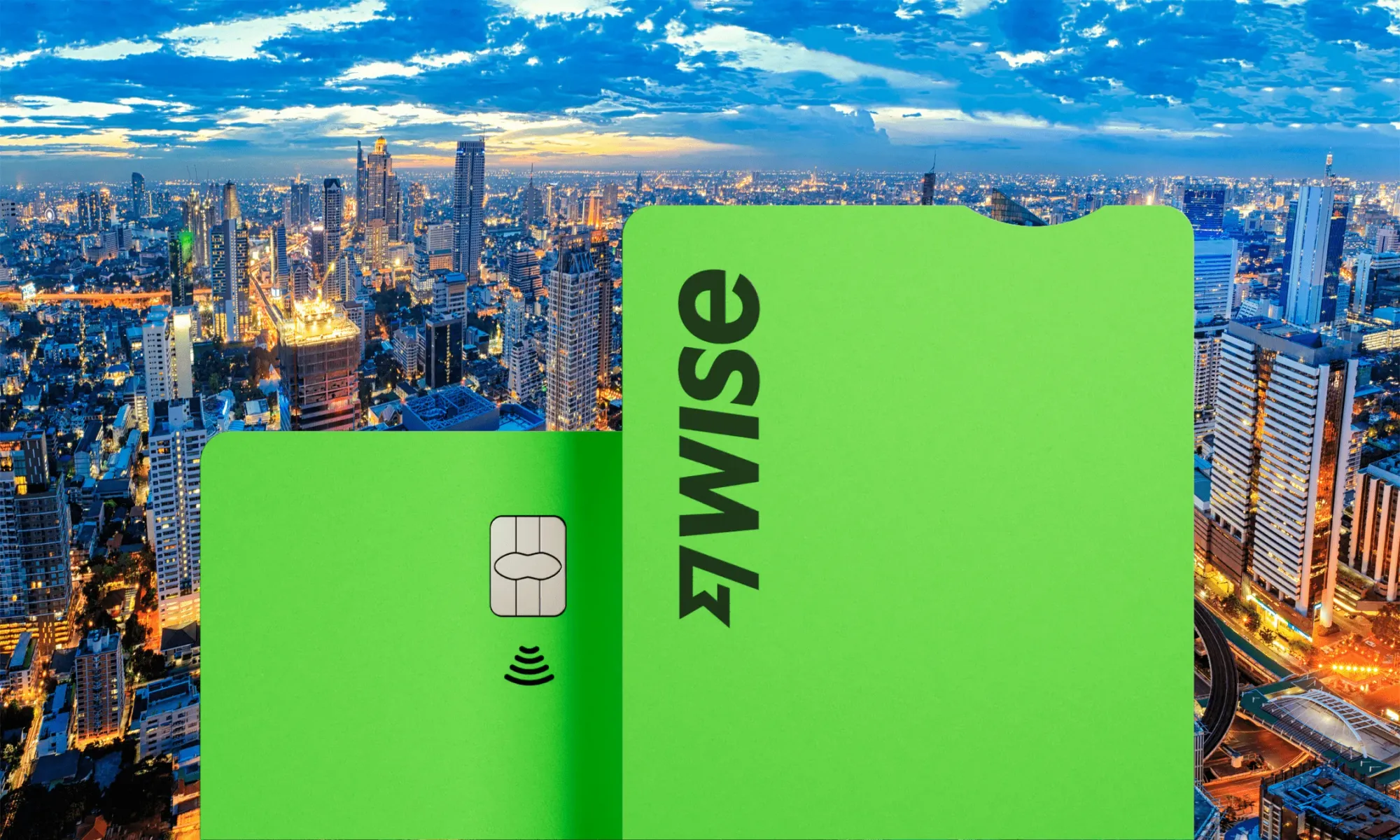
If you travel often, you have probably used or at least heard of Wise (formerly Transfer Wise) .
This UK-based tech company was founded in 2011 by Estonian businessmen Kristo Käärmann and Taavet Hinrikus on the principle of providing fast and fair exchange rates for international transfers without any sneaky fees or below-par exchange rates.
I have been personally using their Wise multi-currency account for years now, and it is still the primary way I transfer money abroad. But, I recently started using the Wise travel card , which added an entirely new dimension to my travels.
Can I Use The Wise Card For Traveling Abroad?
The Wise travel card it's not a credit card and functions pretty much like a regular debit card. You simply add funds to the account and insert, swipe, or tap to pay for items.
The main difference? With Wise, you can hold money in more than 40 different currencies and pay like a local for items in more than 160 countries worldwide without having to worry about hefty fees or markups on conversion rates.
Your Wise Travel Card is connected directly to your Wise account, so you can spend funds from your balances.
Who is the Wise Travel Card for?

Obviously, this is a “travel” card, so its primary purpose is for spending abroad while traveling . That said, you could totally use this for your day-to-day expenses. Traditional banks aren’t really designed to cater to frequent travelers or digital nomads , and the Wise Travel Card fills this gap.
For example, my wages are paid from the US, but I live abroad permanently, so I can easily transfer from my US-based bank to Wise and then simply use my Wise card for most of my daily expenses.
You should consider using the Wise Travel Card if one or more of the following applies to you:
- You frequently transfer funds from another country that uses a different currency.
- You travel internationally often and need a card with low currency conversion fees.
- You often shop online with international retailers that sell their products in a foreign currency.
- You own a business and need a card for international expenses.
- Your current bank card has high currency conversion fees and you want to get away from a traditional bank account
- Your current bank card has high fees for using international ATMs.
Wise Card Features for Traveling Abroad

If you have used a travel prepaid card like Revolut , Chime , or Monzo in the past, you can expect similar features from the Wise Travel Card. Let's see which ones are those:
- Low fees on conversions with the mid-market exchange rate
- Hold, spend, and exchange more than 40 different currencies in your Wise account
- Available to citizens and residents of more than 30 countries , including the UK, Canada, EU, USA, and Australia
- Manage, top up, freeze, and view your card balance in the Wise App
- Use at over 2 million ATMs with free monthly withdrawals up to certain limits.
- Create up to 3 digital virtual cards for free
- Auto currency convert feature to automatically convert your funds at your set rate
- Ability to make Contactless payments
- Connect to most popular eWallets like Google Pay, Apple Pay, and more
- Free spending of any currency you hold in your Wise account
- Biodegradable and eco-friendly card design
Pros and Cons of the Wise Debit Card for Travel
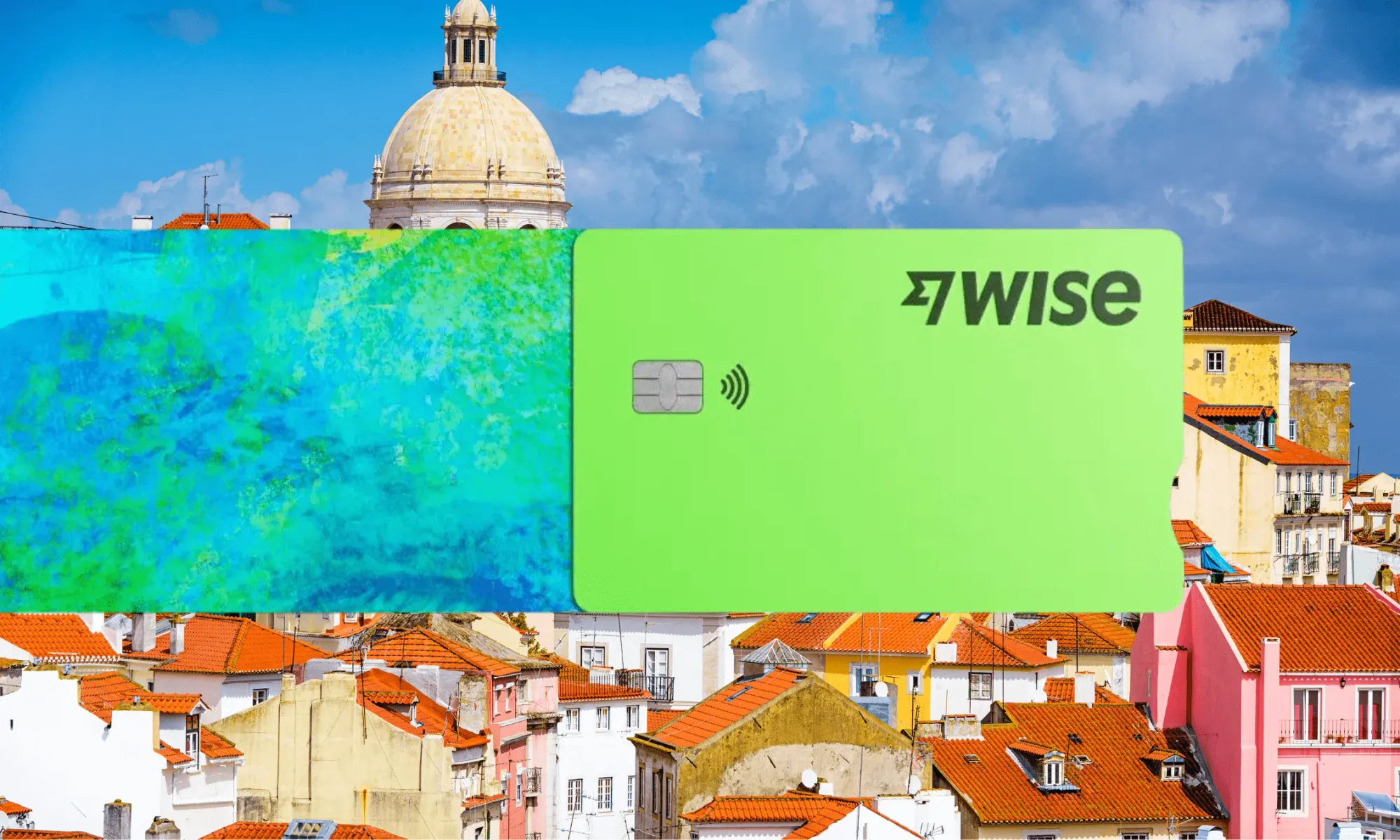
When I first started my digital nomad journey, I quickly came to a rude awakening when I found that my bank was charging exorbitant markups on foreign exchange and fees for ATM withdrawals .
If the same is happening to you, you’ll want to get your hands on this gem of a travel card . But before you sign up, let’s go over some of the upsides and downsides of the Wise Travel Card.
Pros and cons:
What to love about the wise debit card.
For me, the Wise card's standout features are the app's user-friendliness , the multi-currency account , and the low markup on exchange rates .
Being able to hold more than 40 currencies is a game changer. Transferring funds to different currencies in their app when I travel abroad is super easy. To give you an example, I spend quite a bit of time in Europe, the USA, and New Zealand. And with Wise , I can have separate accounts for USD, EUR, and NZD, which makes my life SO much more manageable when traveling to these countries!
On top of that, while there is a small markup fee on currency exchange, it is extremely minimal compared to other banks I have used .
What Could Be Improved About the Wise Debit Card?
The obvious downsides of the Wise Travel Card lie with ATM withdrawal limits , longer card delivery timeframes , and the lack of a premium option .
I am based in the USA, and my card took more than 2 weeks to arrive. Most digital nomads don’t spend too much time in each place, so this can make it difficult to receive your card initially if you are a frequent traveler .
Also, while card transactions are becoming the norm in many countries, cash is still king in several countries I have traveled to in the past few years. The Wise card is NOT exactly the ideal card for withdrawing cash . You’ll only get two transactions for free , and then you’ll be paying a usage fee as well as a 1.75% to 2% markup . This definitely isn’t a dealbreaker, but I hope Wise will improve this in the future.
What Currencies Can You Use With the Wise Travel Card?
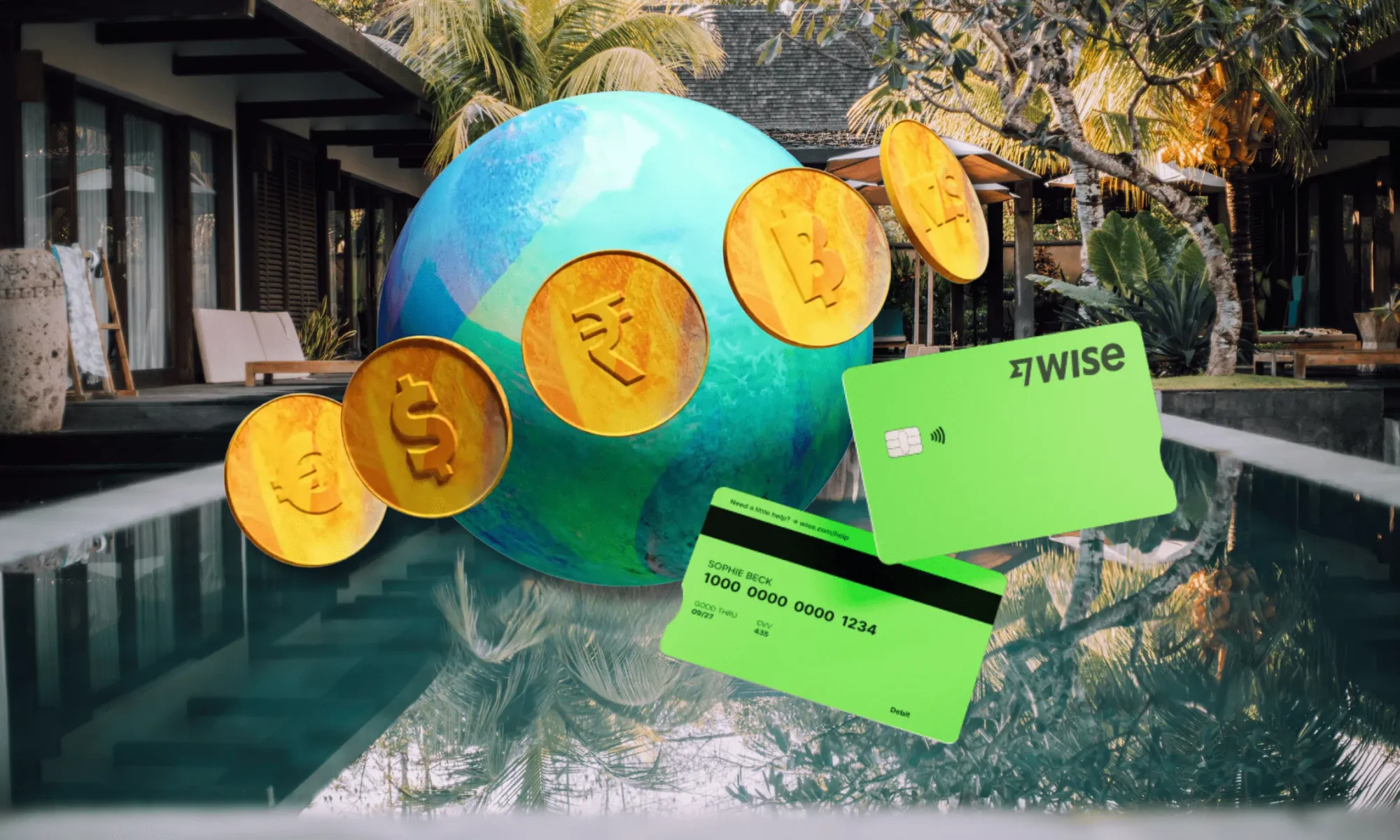
One of the main reasons Wise has kept me on board as a customer all these years is their multi-currency account . This is truly the crown jewel of all of Wise’s features.
You can store 40+ currencies in various wallets in your Wise account , but this doesn’t mean you are limited to spending in those currencies. In fact, you can use the Wise debit card in more than 160+ countries ! If the currency you are spending in doesn’t have a wallet option, the Wise card will simply exchange the money into the payment currency at the time of your purchase .
For example, I was recently in Guatemala, and, unfortunately, I was not able to store Quetzal (the local currency) in my multi-currency account. But when I bought something, my funds were automatically converted from USD to Quetzal at the mid-market rate (plus 0.5%).
There are also 11 currencies for which you get account details to make bank transfers . This means you can transfer funds in the following currency balances directly from your Wise account to another bank account.
This is a feature of Wise that I use often. If I need to transfer funds from my US bank account to one in another country, I almost always use Wise as a “middleman” in order to avoid unexpected transfer fees .
While you won’t be able to make bank transfers in other currencies, you can hold them in your Wise account and spend with your travel card.
How Does the Wise Card Exactly Work?
As you can see, the Wise Travel Card is a wise decision for any traveler (see what I did there?), but how does it exactly work?
As with any new bank account or credit card, there is a bit of a learning curve when first using your Wise travel card . That said, using this card isn’t rocket science, so you’ll be saving money on exchange fees in no time!
How to Use the Wise Travel Card Abroad
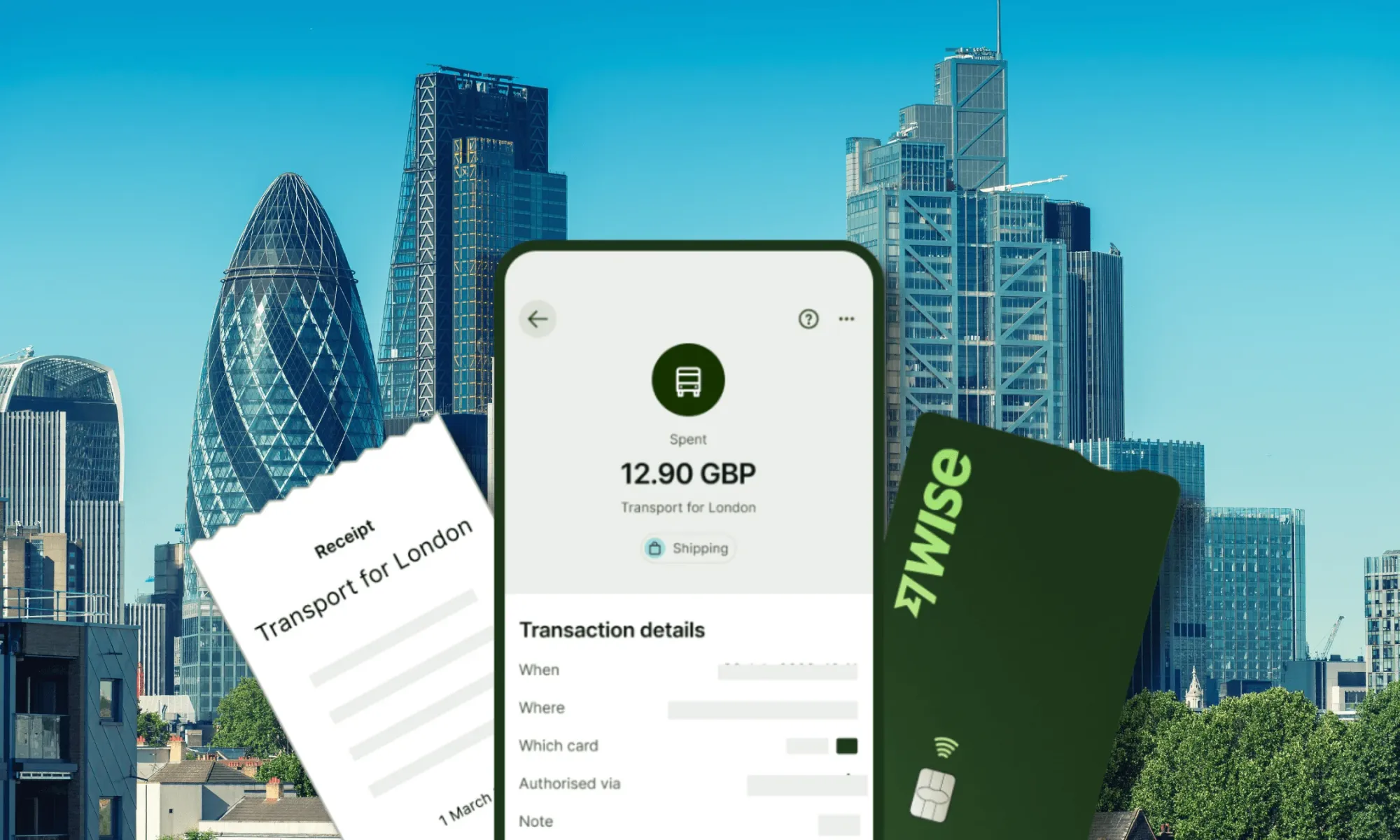
The Wise travel card is specifically designed for spending money outside of your home country, so as you would expect, it is pretty easy to use abroad.
All you need to do is order your card , activate it, create a PIN, add money to your account, and you will be all set to use the card in a different country!
The Wise App
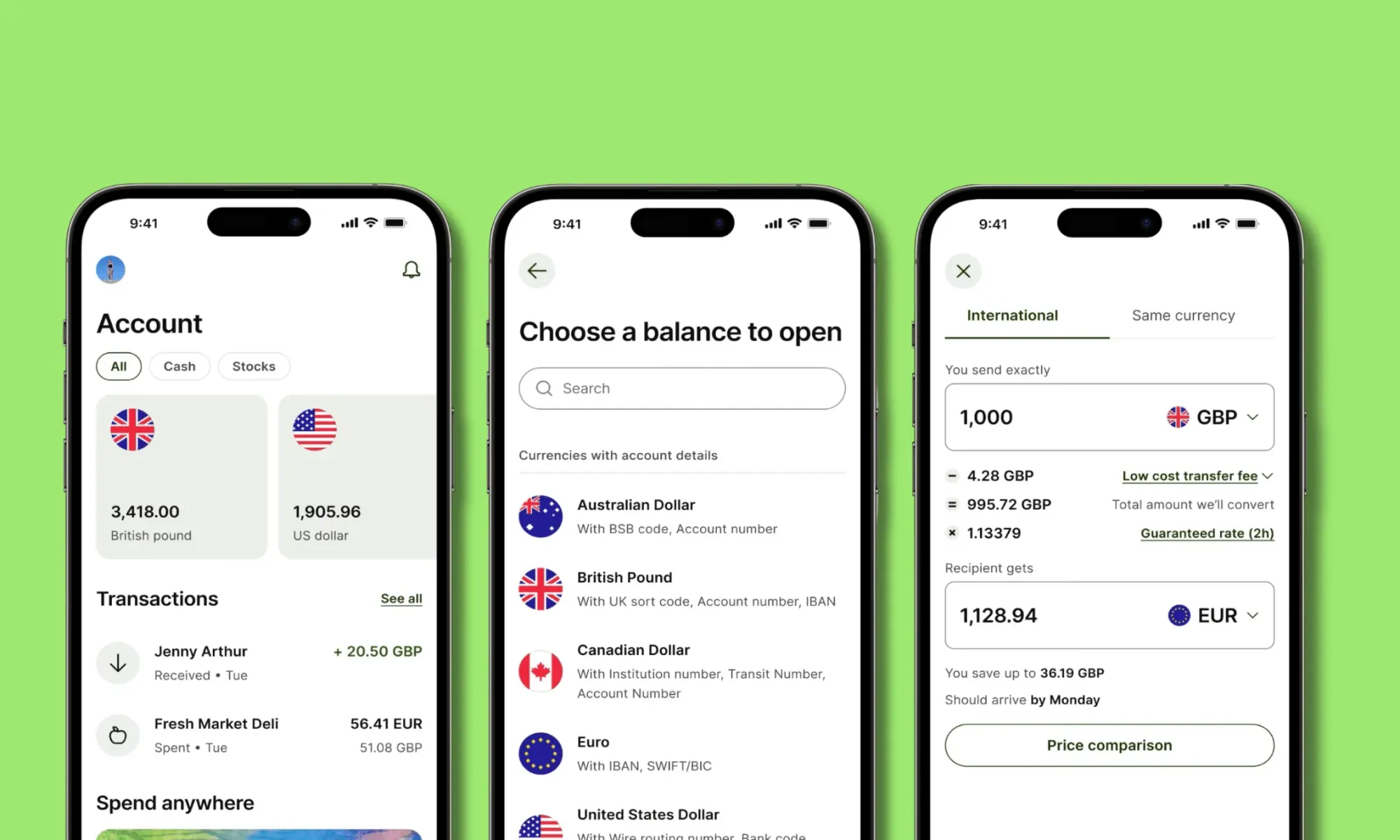
There is nothing more annoying than an app that is built for developers and not for the general public. Your banking and financial app should be easy to navigate and access.
I personally find the Wise app to be extremely user-friendly and intuitive . All features are easy to find, and when navigating through the app, I rarely got stuck or failed to find a setting.
I was easily able to change personal settings, connect bank accounts, exchange money, and send transfers from the app.
How to Order Your Wise Travel Card
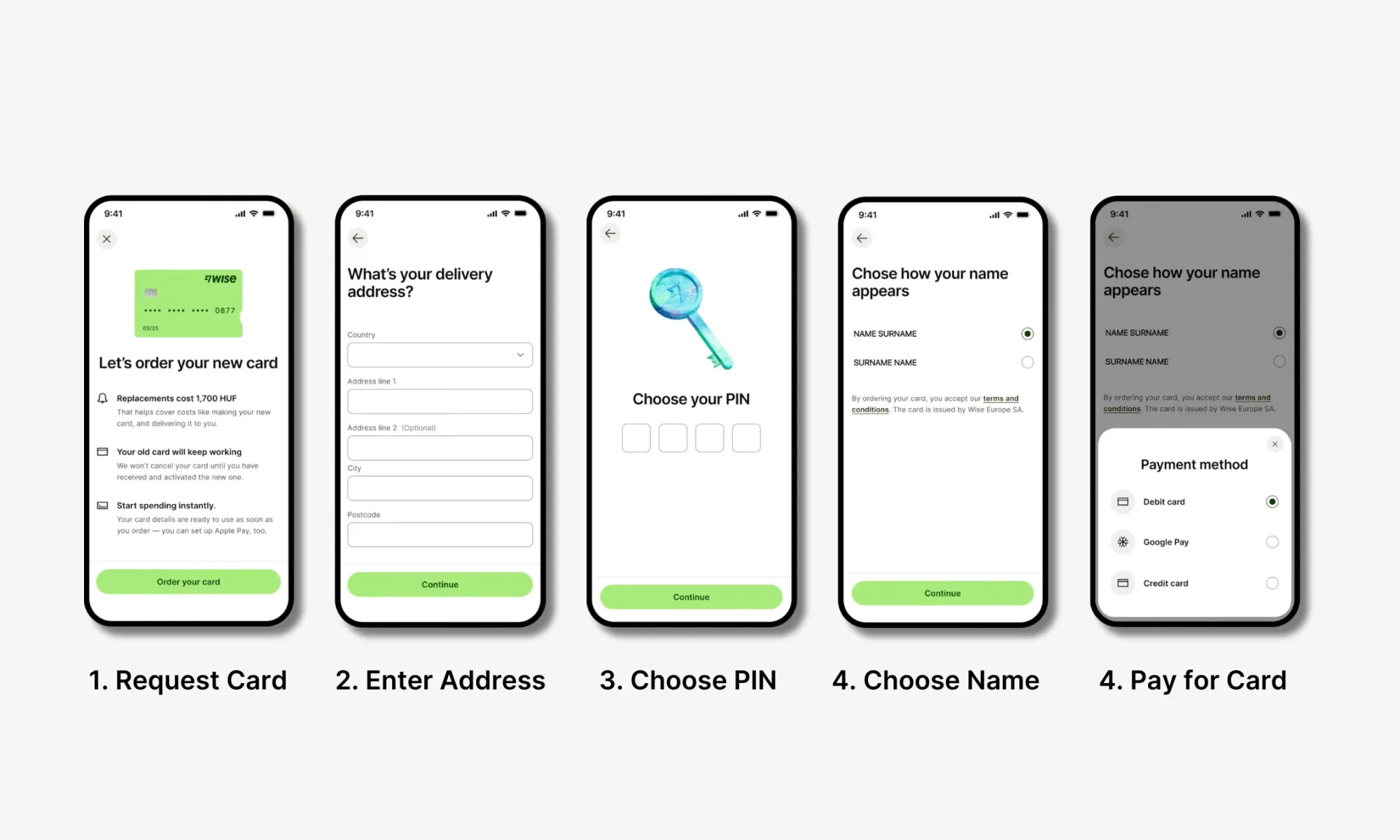
Ordering your Wise Travel Card can take some time (mine took more than 2 weeks to arrive), so I recommend getting on this as soon as possible to ensure you have the card for your next trip!
These are the 3 simple steps you will need to go through:
Step 1: Create a Multi-Currency Account
If you don’t have one already, your first step will be to sign up for a Multi-Currency Account with Wise
Step 2: Start Using Your Virtual Card Immediately
After making an account and verifying your details, you will then be directed to choose a digital/virtual card or a physical card . Digital cards are free and can be added to Google/Apple Pay or used for online payments immediately!
Step 3: Order a Wise Debit Card (Recommended)
If you want instead a physical card, you can do so by clicking on the “Card” tab on the main page and then click on “ Order a Debit Card ”. Physical cards cost a one-off fee of 7 GBP/7 EUR/10 USD , and it will take 7 to 21 business days for the card to arrive, based on your location.
If you'd like to visualise the entire process, watch the instructional video below:
How to Activate Your Wise Card
Once your Wise travel card arrives, it is time to activate it and start spending ! Luckily, for most Wise account holders, you won’t need to take any steps to activate the card, simply make a chip and PIN payment, and the card is ready to go !
Activate Your Wise Card (for US and Japan Customers Only)
As I mentioned above, Wise customers in the USA or Japan must activate the card separately . This isn’t too much of a headache, just don’t forget you need to be in your home country .
Here is a step-by-step breakdown of activating your card if you are a US and Japan customer.
- Log into the Wise app and tap on “ Card ”.
- Then tap on “ Activate Card ”.
- You’ll then be prompted to enter a 6-digit code that you’ll find on your card.
- After entering the code, you’ll create your PIN .
If you'd like to visualise the steps to activate your Wise card for your region, watch the instructional video below:
How to Change the PIN for Your Wise Card
Did you forget your PIN? Don’t worry, it happens to the best of us!
Luckily, if you are a US card holder, you can easily change your PIN in the Wise app :
- Tap on “ Card ” in the Wise app
- Select “ Change PIN ”
- Enter your new PIN 2 times, and you are all set!
If you are a non-US Wise card holder , you cannot change your PIN in the app , unfortunately. Instead, you’ll need to change it using an ATM that supports PIN changes .
My best advice? Choose a PIN you’ll never forget, or keep it written down somewhere secure.
How to Add Money to Your Wise Travel Card
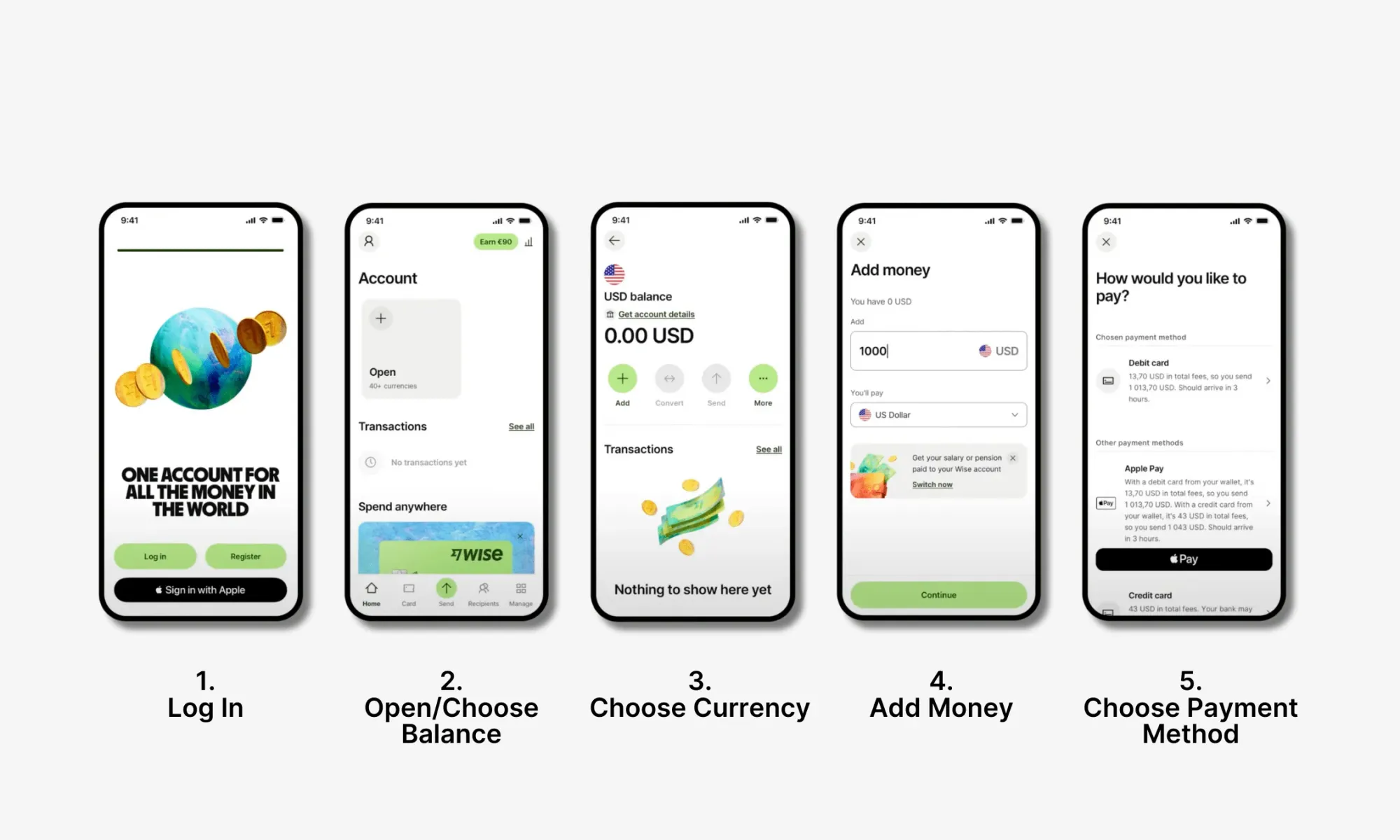
Your Wise travel card is linked to your Wise Multi-Currency account , so you’ll need to top up your Wise account with funds before using the card.
This is a pretty straightforward process:
- Logging into your account
- Choose which currency balance you want to add money to.
- Click “ Add ”.
- Choose which currency you want to use to top up the account.
- Type in the amount of money you want to add.
- Choose your payment method (bank transfer, debit card)
- Confirm the top-up and verify the money arrives in your balance.
Watch the instructional video below to visualise how to top up your Wise balance:
How to Freeze/Unfreeze Your Wise Card
One of the downsides of constant travel is that you put yourself at risk of fraud or losing your card. If you notice potential fraudulent transactions from your Wise card, or you believe your card is lost/stolen, you should freeze your card immediately . This way, you’ll avoid more fraud on your account.
Here are the steps to take to freeze your Wise Travel Card.
- After logging in to your Wise account, tap on “ Card .”
- Then simply click “ Freeze Card ”, or if you want to unfreeze, “ Unfreeze Card .”
- Fill out this transaction dispute form and contact customer support right away. They will be able to help you determine what to do next.
How to Replace a Lost or Stolen Wise Card
If you can confirm that your card has been lost or stolen, you’ll want to cancel the card and then order a new one.
- Log in to your Wise account and click on “ Card .”
- Tap “ Replace Card .”
- You’ll then be prompted to answer why you need a replacement card.
- Wait for the new card to arrive.
How to Use an ATM with Your Wise Travel Card
As mentioned above, ATM withdrawal is not the strongest feature with the Wise card, but you can definitely still use the card to take out cash. Spending with your Wise card is simple since the card can make contactless, chip, and swipe payments and is eligible for Google, Apple, Fitbit, and Garmin Pay. But how do you use an ATM with the Wise card?
Using an ATM with the Wise Travel Card is the same as using any other bank card. Simply insert your card into the machine, enter your PIN, determine how much cash you want to withdraw, and take your cash. Don’t forget to take your card back when you are done (I have made this mistake too many times…).
Wise Card ATM Limits
One of the biggest downsides with the Wise card is that you’ll have limited free ATM withdrawals. For all accounts, you’ll have 2 free ATM withdrawals each month, after which you will be charged an ATM usage fee and a percentage markup on the amount of cash you withdraw.
I use the Wise Travel Card for many of my day-to-day travel expenses, but I use my Charles Schwab Investor Checking account for ATMs. This card not only has a 0% ATM markup, but it also refunds any fees the ATM provider charges. This includes international withdrawals!
Wise Card Delivery Timeframe
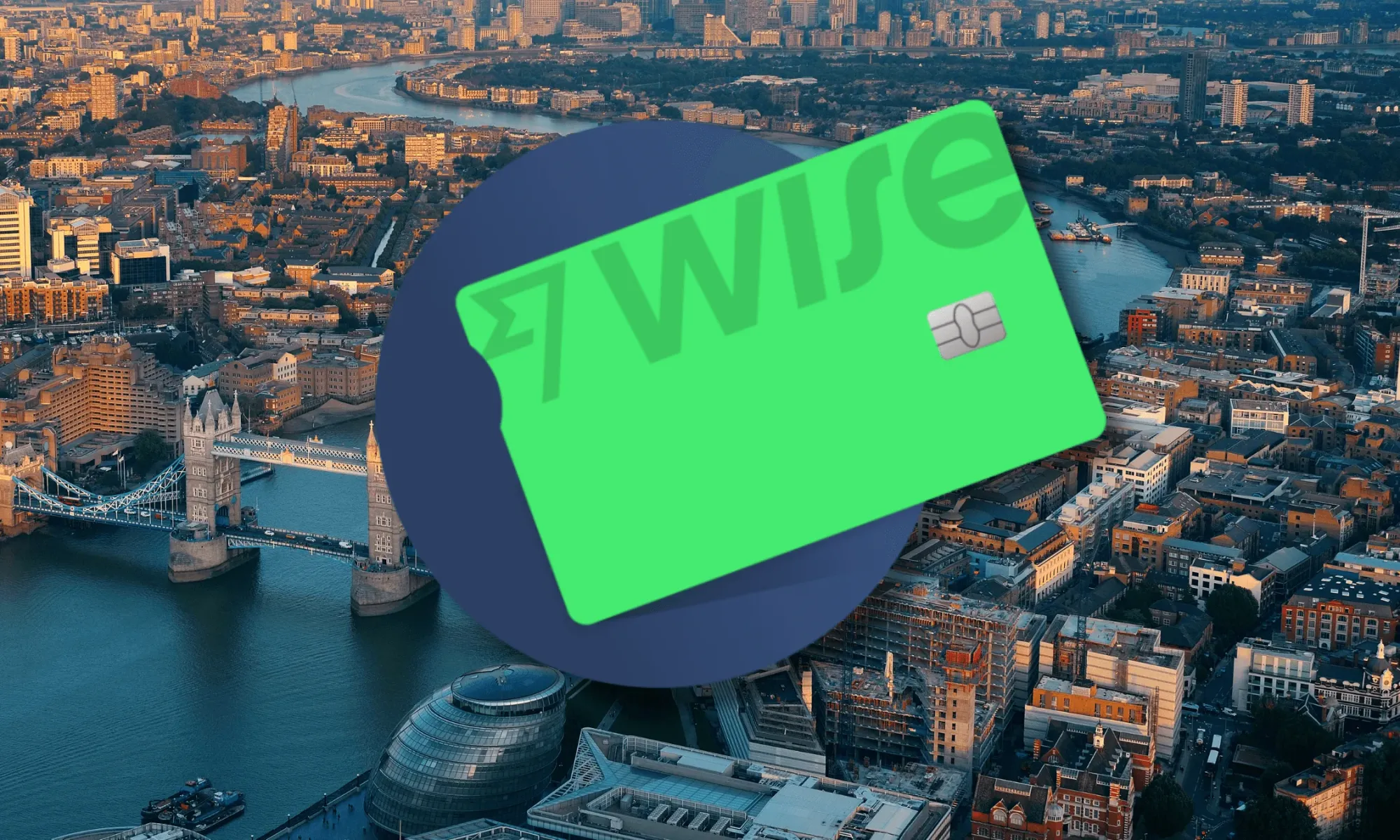
Once you order your Wise Travel Card, you can expect it to take between 3 and 21 days to arrive, depending on your location. If you live in Singapore, you’ll get your card SUPER fast. Unfortunately for Americans like me, this isn’t the case.
Wise Travel Card Fees and Exchange Rates
One thing I really love is that using Wise itself is free, and you won’t have to pay an ongoing fee to Wise to use the card. In fact, there isn’t even a Premium account feature, so all users get 100% of the features for free. All this said, there are some charges and exchange rates you should know about before you start using the Wise Travel Card.
Comparison: How Does the Wise Card Holds Up Against Other Travel Cards?
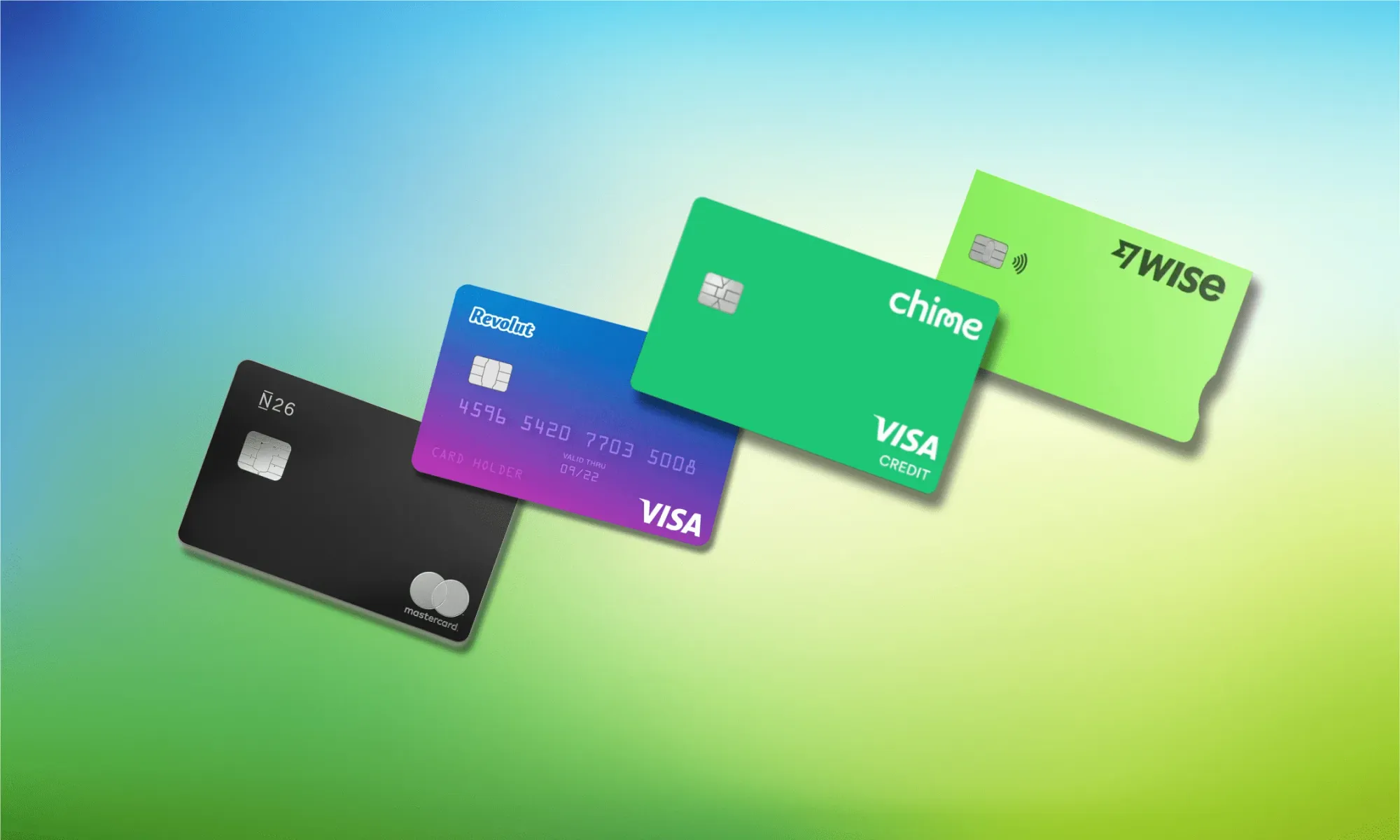
Wise is a leader in the travel account realm, but it still has some major competitors. While all of these different companies vary, they all cater to digital nomads and frequent travelers. The table below will compare some key factors with Wise, Revolut, N26, and Chime.
You may also be interested in:

So, What Travel Card is the Best?
This is a close call and pretty dependent on where you are located. For example, N26 and Chime are awesome choices if you live in the EU or USA (respectively). But, with these options, you can’t hold different currencies like with Revolut and Wise.
For most digital nomads, Wise or Revolut will be the best option. You can hold a huge number of currencies, and they are available to many different nationalities. I have personally used both Wise and Revolut and can say they are both excellent options.

Spending Limits for the Wise Travel Card
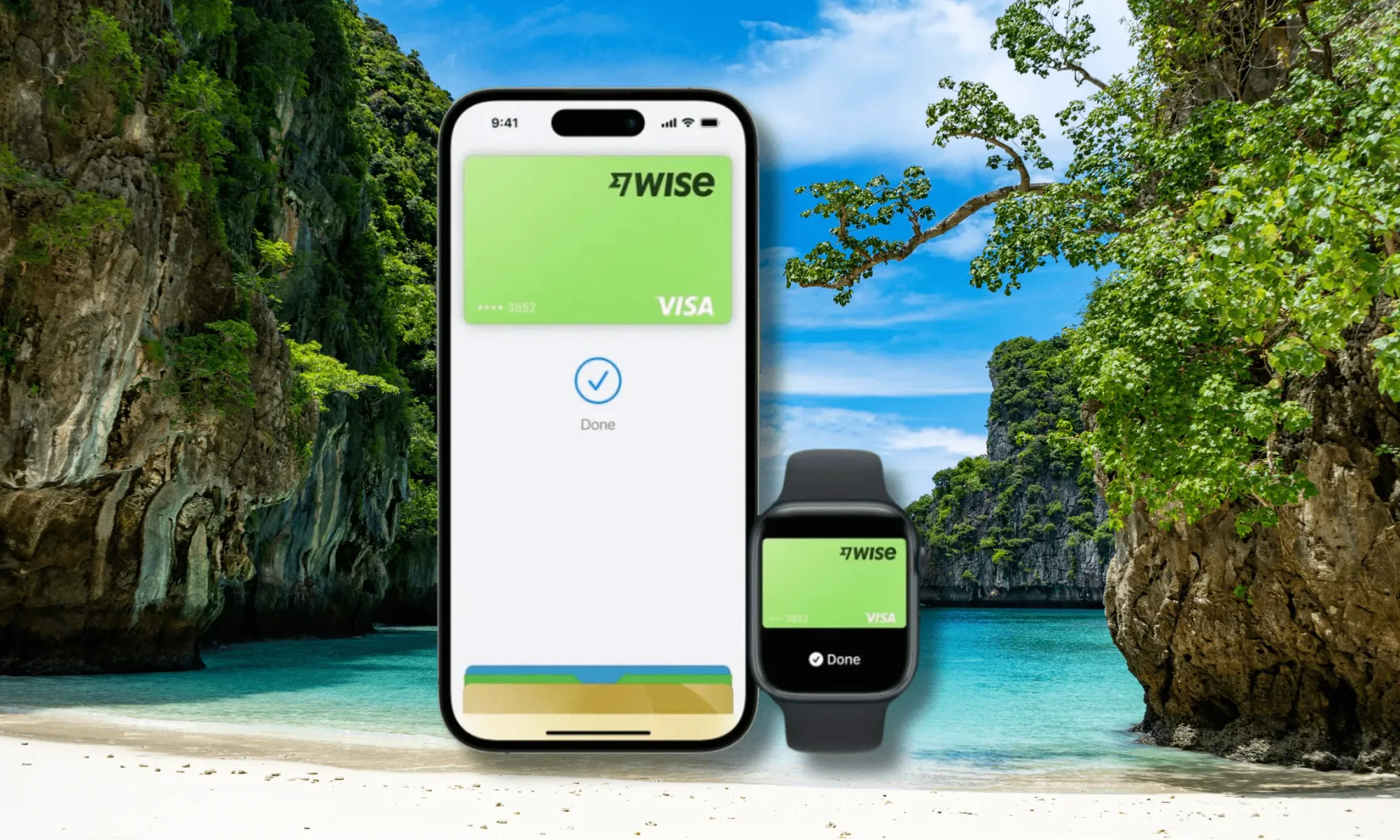
The Wise Travel Card has set daily and monthly spending limits for all types of transactions. While these limits won’t be a deal breaker for the vast majority of users, they are still worth noting.
Keep in mind the above limits are for US Wise customers. The amounts will differ slightly for customers based in different regions.
Is It Safe to Use the Wise Travel Card?
Wise is a trusted and safe travel card provider, so you can rest assured that your funds will be protected when using the Wise Travel Card. A licensed and regulated financial institution, your funds are safeguarded in Wise. It is, however, worth noting that since Wise is not considered a bank, it is not FDIC insured. FDIC insures up to $250,000 of bank customer's money, but Wise works a bit differently. Wise safeguards users’ money and is required to ensure all customers have access to all of their funds.
So, is Wise safe to use? Yes, absolutely! We don’t recommend keeping all of your money in Wise, but in general, it is a perfectly secure financial institution.
Additionally, the company uses several security features to protect your data, including HTTPS encryption, a two-step login process, and 24/7 fraud prevention.
What to Do If Your Wise Card Is Lost, Stolen, or Compromised
If you lose your Wise card or suspect it to be stolen or compromised, you’ll need to act quickly to prevent any further fraud. Below, we will go over a step-by-step process for what to do if your card is lost, stolen, or compromised.
- Freeze your card in the Wise app.
- Contact Wise support if you suspect the card to be compromised.
- Cancel the card in the app if you confirm the card is lost or stolen or if fraud charges have been made.
- Order a new card.
- Wait for the new Wise card to arrive.
Bottom Line: Is the Wise Travel Card Worth it?

Time for the 1 million dollar question: Should you get the Wise Travel Card?
If you are a frequent traveler like me and you don’t already have a solid travel card with fair exchange rates, low ATM fees the answer is a resounding yes !
The Wise Travel Card is one of the best cards for digital nomads and expats, as it allows you to seamlessly spend money, withdraw cash, and transfer funds from anywhere around the globe without having to worry about excessive fees. The best part? After paying a one-time card order fee, your Wise account is completely free to use!
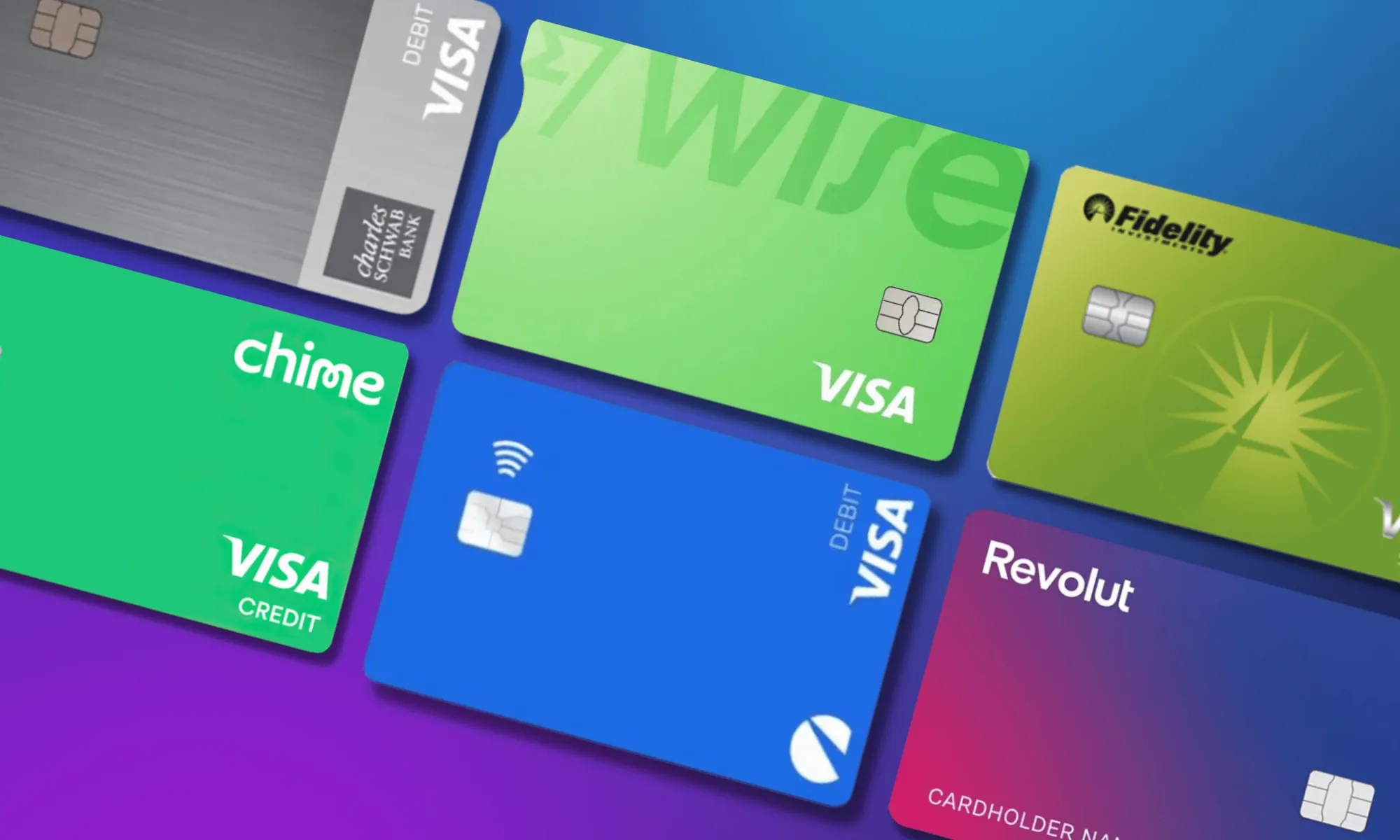
Ready To Save Money Abroad with Wise?
If you want more digital nomad guides like these, sign up for our free newsletter and get upcoming articles straight to your inbox!

Sign up for our Newsletter
Receive nomad stories, tips, news, and resources every week!
100% free. No spam. Unsubscribe anytime.
You can also follow us on Instagram and join our Facebook Group if you want to get in touch with other members of our growing digital nomad community!
We'll see you there, Freaking Nomads!
Disclosure: Hey, just a heads up that some of the links in this article are affiliate links. This means that, if you buy through our links, we may earn a small commission that helps us create helpful content for the community. We only recommend products if we think they will add value, so thanks for supporting us!
Heymondo Review: Is It a Good Travel Insurance?
How to beat your post-travel depression: your guide to feeling better, how to create a healthy work-life balance while working remotely.
- Argentina
- Australia
- Brasil
- Canada
- Deutschland
- España
- France
- India
- Italia
- Magyarország
- Malaysia
- New Zealand
- Polska
- Portugal
- România
- Singapore
- United Kingdom
- United States
- 繁體中文 (香港)
The 6 Best Travel Cards for the US 2024
If you live in the US but travel often abroad, a travel money card can make spending in foreign currencies cheaper and more convenient. Travel money cards also have the bonus that they can be cheaper when you shop online with foreign retailers, as there’s often no foreign transaction fee to pay.
Different types of travel money cards, including travel debit cards, prepaid travel cards and travel credit cards, are available to support different customer needs. The right one for you will depend on your personal preference and how you like to manage your money.
Read on for all you need to know, including a closer look at travel money card types, some great options to consider, and the sorts of fees you need to think about when you choose.
Wise – good value debit card for the US
Before we get into details about different travel money card options, let’s start with the Wise card as a good all-round option that allows you to hold and spend US dollars, as well as a diverse range of other world currencies.
Wise account can hold and exchange 40+ currencies, and you can get a linked Wise card for a one time delivery fee. Top up your account in USD and you can spend locally and overseas conveniently. If you plan to travel, you can switch to the currency you need before you travel, so you know your travel money budget in advance - or if you’d prefer, you can simply allow the card to automatically switch currencies as and when you need it. All currency conversion uses the mid-market exchange rate, with low fees from 0.43%.
Plus you can get USD bank account details - as well as local account details for up to 8 other currencies - to get paid conveniently to your Wise account . If you’re receiving money in USD to Wise, it’s free to get paid by ACH, and there’s a low 4.14 USD fee to receive a wire. There’s no fee to receive any of the other 9 currencies which come with local bank details.
Here are some of the advantages and disadvantages of using the Wise travel money debit card, to help you decide if it's suitable for you.
What is a travel money card?
A travel money card can be used for payments online and in stores, and for cash withdrawals , just like your regular bank card can be. You can use your travel money card in the US just as conveniently as you can when you travel or shop online with overseas retailers. However, with a travel money card you’ll find the features and fees have been optimized for international use . That might mean you get a better exchange rate compared to using your normal card overseas, or that you run into fewer fees. Some travel cards also have options to earn cashback and rewards when you use your card internationally.
6 travel money cards for the US compared
We’ll look at each of these card options in a little more detail in just a moment, but let’s start with an overview of how 6 top travel money cards for the US line up side by side:
As you can see, the features of different travel money cards can vary pretty widely. In general travel debit cards can be convenient and often fairly cheap to use, while travel credit cards can offer some nice perks like cashback or rewards - but do mean you might run into interest and late payment charges, depending on how you choose to pay.
Travel debit cards often let you top up a linked account online or through an app, so you can set your budget and can’t spend more than you intend. Travel credit cards on the other hand let you spend to your card limit, and then repay the amount over a few months if you’d prefer to. Which is best for you will come down to how you like to manage your money - we’ll dive into a few more details about each card type, next.
What are different types of travel cards?
Broadly speaking, US customers are able to select a travel money card from either a regular bank or a specialist provider, which may be a travel debit card, travel prepaid card or a travel credit card. We’ll walk through what each travel money card type is, and pick out a couple of good card options, so you can compare and choose.
- Travel debit cards
- Travel prepaid cards
- Travel credit cards
1. Travel Debit Cards for the US
Travel debit cards are usually offered by specialist providers, with linked digital accounts you can use to hold and convert a currency balance. That makes them equally convenient to use in the US when spending in dollars, when shopping online with retailers overseas, and when you travel. While different cards have their own features, travel debit cards can usually be topped up easily online and through an app, with the option to see your balance and get transaction notifications through your phone too. That makes it easier to keep on top of your money, no matter where in the world you are.
Travel debit card Option 1: Wise
Wise is a good value travel money debit card for the US. There’s no fee to open a Wise account, and just a small delivery fee for your Wise card, with no minimum balance and no monthly charge. You just pay low Wise fees from 0.43% when you convert currencies, and transparent ATM fees when you exhaust the monthly free transactions available with your account.
- No fee to open a Wise account , no minimum balance requirement
- 9 USD one time fee to get your Wise card
- 2 withdrawals, to 100 USD value per month for free, then 1.5 USD + 2%
- Hold 40+ currencies, convert between them with the mid-market rate
- Get local account details to receive USD and 9 other currencies conveniently
Travel debit card Option 2: Revolut
Revolut has a selection of different account tiers, so you can simply pick the account you prefer - from Standard plans with no monthly fee to the 16.99 USD/month Metal plan. All Revolut accounts have linked cards, although exactly what type of card you get depends on your account tier. You can hold around 25 currencies, and convert currencies with the mid-market rate to your plan’s allowance.
- No monthly fee if you open a Standard Revolut account, or upgrade for up to 16.99 USD/month
- Card delivery fees may apply depending on your account tier
- All accounts have some fee free weekday currency conversion with 0.5% fair usage fees after that. Out of hours and exotic currency fees may apply in some cases
- Standard plan holders can withdraw 400 USD overseas per month without paying fees
- Hold USD and around 25 other currencies
Pros and cons of using debit travel cards in the US
How to choose the best travel debit card for the us.
The best travel debit card for USA really depends on your personal preferences and how you like to manage your money. If you’ll be traveling widely it makes sense to look for an account with mid-market currency exchange and a large selection of supported currencies, like Wise . Other providers like Revolut can also be a good pick, particularly if you’ll use your account very frequently and would prefer to pay a monthly fee to unlock lots of no fee transactions and extra perks.
Is there a spending limit with a travel debit card in the US?
Different providers set their own limits for card use. Limits may apply daily, weekly or monthly, and can apply to different types of transactions. You might find you have a limit to the amount of ATM withdrawals you can make per day, for example, or the value of contactless payments - these limits are set for security and can sometimes be managed and changed in the provider’s app.
2. Prepaid Travel Cards for the US
With a prepaid travel card you’ll need to order a card and add funds, to pay merchants and make cash withdrawals. While prepaid travel cards are usually issued on large global networks - and can therefore be used pretty widely - not all cards are accepted globally, so you’ll need to check network coverage in your destination country.
Prepaid travel card option 1: Bluebird American Express prepaid debit card
You can order a Bluebird prepaid debit card for free online. You’ll then be able to top up in cash or from a bank account. You can also add checks or have funds deposited by others - fees apply for some top up methods. While this card doesn’t allow you to hold foreign currencies, you won’t pay a foreign transaction fee to spend your USD balance abroad, which makes it a good choice when you’re away from home.
- Get a card for free by ordering online
- Top up in a range of ways in USD
- No foreign transaction fee when spending overseas
- ATM withdrawal fees of 2.5 USD or the equivalent when overseas
- American Express cards are not always accepted internationally - check coverage before you travel
- No interest to pay
Prepaid travel card option 2: Discover it Secured
Discover it Secured is a credit card, but we’ve included it in our roundup of prepaid cards because it’s a secured card, which means you’ll need to pay an upfront deposit, and can then spend to that deposit level every month. Clear off your bill in full to avoid interest, and you could build a credit score, earn cashback and get no foreign transaction fees when you spend overseas, too.
- No annual card fee, although interest charges and late payment fees do apply
- No foreign transaction fees for spending overseas
- ATM withdrawal fees may apply including a 10 USD cash advance fee
- Earn cashback on spending and build credit as you do so
- Discover network is not always internationally supported - check your destination before you travel
Pros and cons of using prepaid travel cards in the US
How to choose the best travel prepaid card for the us.
There’s no single best travel prepaid card for the US - it’ll come down to your personal preferenc e. If you’re looking specifically for a prepaid debit card you can use abroad with no foreign transaction fee, try the Bluebird card option. However, if a credit card suits you, the Discover it Secured can be a strong pick thanks to the cash back options available.
Is there a spending limit with a prepaid card in the US?
Different prepaid travel cards set their own limits for spending and withdrawals, which can vary between currencies. You’ll need to check your card’s terms and conditions carefully to make sure you pick a provider which suits your needs.
3. Travel Credit Cards for the US
Travel credit cards typically offer some extra international features compared to regular credit cards, such as low or no foreign transaction fees or extra option to earn rewards when you’re abroad. In general, travel credit cards are safe and convenient but can be more expensive compared to using a debit card option. Before you select the right card for you it’s important to check the fees, rates, eligibility rules and interest rates which apply, so you can make sure it’s a good fit for you.
Travel credit card option 1: Capital One Venture Rewards
The Capital One Venture Rewards card can be used in the US conveniently - and has no foreign transaction fees when you spend overseas. There’s also a comparatively low cash advance fee when you use an ATM, at 3 USD or 3% whichever is higher. You’ll need to repay your bill in full every month to avoid fees and interest, but can earn travel rewards and miles on your day to day spending.
- No foreign transaction fee
- Earn travel rewards on spending
- Get extras like lounge access and free travel insurance
- International spending uses the network exchange rate
- Variable interest rates which apply if you don’t pay off your bill in full
Travel credit card option 2: Chase Sapphire Preferred
The Chase Sapphire Preferred card has a variable interest rate with no foreign transaction fee to pay. However, you’ll need to pay a 95 USD annual card charge to get your card in the first place. Currency conversion uses the network exchange rate - plus there are benefits and rewards available for cardholders.
- Variable interest rates and a 95 USD annual fee
- Check your eligibility and order a card online easily
- Network exchange rates apply
Pros and cons of using credit cards in the US
How to choose the best travel credit card for the us.
The best travel credit card for the US will depend on your personal preferences. If you’re interested in earning rewards and cash back, a travel rewards card like the Chase Sapphire Preferred could be a good bet as it has no foreign transaction fee and offers rewards on all spending. Whichever card you’re considering you’ll want to weigh up the potential fees you’ll need to pay against the rewards you can earn to make sure it’s worthwhile.
Which cards are accepted in the US?
It’s important to know that you may find that different card networks are more popular in one country than they may be in another. For example, while Visa and Mastercard are pretty widely accepted globally, other popular US card networks, like American Express and Discover cards are less likely to be accepted in some countries and regions. Both networks have some support in the US, but coverage isn’t universal.
If you’re looking for a card specifically to take with you when you travel, it may be worth checking coverage in destinations you visit frequently to help you choose the right network for your needs.
In most cases it’s best to carry more than one means of payment when you travel - for example a credit card and a specialist travel money card which has been issued on a different network - so that you always have a plan B if your preferred payment method isn’t available.
Conclusion: Which travel money card is best for the US?
If you’re living in the US but travel often - or if you shop online with retailers based overseas, you might want to pick a travel money card for foreign currency spending. Travel money cards have different features, and can be picked up via regular banks or online specialists.
You could opt for a low cost travel debit card which comes with a linked account to hold a selection of currencies - like the Wise debit card . Or you might prefer a prepaid travel money card like the Bluebird American Express debit card which can be linked to a fee free account. Finally, another option is to get a travel credit card either to earn cashback and rewards, or to avoid foreign transaction fees.
Use this guide to start your research and pick the right option for your specific needs.
Go to Wise Go to Revolut
FAQs - Best travel cards for the US 2024
1. Which travel card is best to use in the US and abroad?
There’s no single best travel card to use in the US and when you’re headed abroad. Which is right for you will depend on your preferences and the features you want to access. Having a multi-currency account from a provider like Wise or Revolut can be a good bet if you travel widely as you’ll be able to hold and exchange dozens of major currencies for convenience.
2. What is the best way to pay when traveling outside the US?
Spending with your card is convenient when traveling, but you’ll be best off having several different payment methods just in case your first choice isn’t supported. For example, you could choose 2 different debit or credit cards, issued on different networks, and you could also get foreign currency cash in advance so you have some on you for those times when cards aren’t available.
3. Can you withdraw cash with a credit card in the US and overseas?
You can usually make cash withdrawals with a credit card in the US and overseas, at any ATM that supports your card network. You’ll often find that a fee applies, and you may start to accumulate interest on the withdrawn amount immediately. Travel money debit cards from providers like Wise and Revolut can be a lower cost option for cash withdrawals locally and abroad.
4. Can I use a US card abroad?
You can use your US card anywhere you see the card network’s logo displayed. Visa and Mastercard networks are very well supported globally, including in the US, making these good options to look out for when you pick your travel debit card for use overseas as well as in the US.
5. Are prepaid cards safe?
Prepaid cards from reputable providers are safe to use at home and abroad. They aren’t linked to your main bank account which can offer extra peace of mind, and may also make it easier to manage your travel budget. However, you’ll need to check the card features and fees carefully to make sure you're getting the best match for your needs.
6. What are the main fees for travel cards when traveling?
The fees applied for travel cards can vary widely depending on the provider and the card type. With debit cards you may find ATM fees, and costs for converting currencies, although specialist providers like Wise and Revolut have linked multi-currency accounts which can bring down the costs of currency conversion. Credit card fees include cash advance charges, foreign transaction fees and interest.
Ad-free. Influence-free. Powered by consumers.
The payment for your account couldn't be processed or you've canceled your account with us.
We don’t recognize that sign in. Your username maybe be your email address. Passwords are 6-20 characters with at least one number and letter.
We still don’t recognize that sign in. Retrieve your username. Reset your password.
Forgot your username or password ?
Don’t have an account?
- Account Settings
- My Benefits
- My Products
- Donate Donate
Save products you love, products you own and much more!
Other Membership Benefits:
Suggested Searches
- Become a Member
Car Ratings & Reviews
2024 Top Picks
Car Buying & Pricing
Which Car Brands Make the Best Vehicles?
Tires, Maintenance & Repair
Car Reliability Guide
Key Topics & News
Listen to the Talking Cars Podcast
Home & Garden
Bed & Bath
Top Picks From CR
Best Mattresses
Lawn & Garden
TOP PICKS FROM CR
Best Lawn Mowers and Tractors
Home Improvement
Home Improvement Essential
Best Wood Stains
Home Safety & Security
HOME SAFETY
Best DIY Home Security Systems
REPAIR OR REPLACE?
What to Do With a Broken Appliance
Small Appliances
Best Small Kitchen Appliances
Laundry & Cleaning
Best Washing Machines
Heating, Cooling & Air
Most Reliable Central Air-Conditioning Systems
Electronics
Home Entertainment
FIND YOUR NEW TV
Home Office
Cheapest Printers for Ink Costs
Smartphones & Wearables
BEST SMARTPHONES
Find the Right Phone for You
Digital Security & Privacy
MEMBER BENEFIT
CR Security Planner
Take Action
- Buying Guide Buying Guide
Prepaid Card Buying Guide
Prepaid cards, more formally known as “general purpose reloadable cards,” have rapidly gained a place in Americans’ wallets and have gotten better in recent years. They work similarly to bank debit cards except that there is no checking account associated with the card. Instead, money needs to be “loaded,” or added, onto the card before it can be used.
In 2016 the Consumer Financial Protection Bureau issued consumer protections for prepaid cards scheduled to go into effect in April 2019. But until then, the issuers of these cards are not required to offer consumers free access to account information, fee disclosures, and protection from loss and unauthorized transactions. The CFPB rule was due, in part, to the advocacy work of Consumer Reports, which has been lobbying for prepaid-card consumer protections for the past decade.
Many cards, however, do voluntarily provide such protections already. And they are all FDIC-insured up to $250,000 if the financial institution providing the card fails, the prepaid card is registered with the card issuer and if specific deposit insurance requirements are met.
Prepaid cards are growing in popularity. Americans charged $557 billion, accounting for 9 percent of all payment-card purchases made at merchants in 2016, the latest year for which information is available, according to The Nilson Report newsletter.
Key Factors to Consider
If you are thinking about getting a prepaid card, weigh your options before buying one. Here’s what to consider.
Do you need a prepaid card? If you don’t want to open a checking account, perhaps because of minimum-balance requirements or fees, a prepaid card can be used as an alternative.
It can also help you stay within budget. You could have one card, for example, just for buying gas, another to keep your coffee spending in check, and a third, perhaps, for holiday shopping.
And there are other smart uses for prepaid cards , including teaching teens and younger children how to manage money, and protecting seniors from scams. It can also be a better way to give money, instead of a gift card , because of its wider acceptance and better loss-liability protections.
Where should you buy a prepaid card? They are available in many stores or online. You’ll see cards with catchy but unfamiliar brand names as well as cards from traditional banks, including BB&T, Chase, and U.S. Bank. Our recommendation is to consider cards such as the American Express-Walmart Bluebird, Chase Liquid Visa, and Green Dot Prepaid Visa.
What are the fees, terms, and conditions? Look into this because they differ dramatically among providers. They can be difficult to compare because not all prepaid-card issuers use the same terms.
Another problem: Consumers may find it difficult to compare monthly fees among cards. While most cards provide at least one free way to load money onto a card, some may require the user to pay a third-party reload fee. But it can be difficult to know how often you’ll need to reload the card, especially before you begin using it.
Among the fees to compare if you’re considering a prepaid card:
• Purchase fees • Monthly fees • Point-of-sale transaction fees • ATM cash-withdrawal fees • Balance-inquiry fees • Fees to receive a paper statement • ATM transaction-decline fees • Fees to add, or “load,” funds • Dormancy fees for not using your card • Fees to get your remaining funds back when closing the account • Overdraft fees
How do you load money onto the prepaid card? It’s easy. Just give cash to a clerk at a participating retailer or bank, and it will be credited to your prepaid card. You can also arrange to have money automatically deposited by your employer through direct deposit services. Or you can use your mobile device to take a photo of a check and add it to your card.
Is it easy to make purchases using the prepaid card? The process is similar to using a debit card—you use it the same way in a store when making a purchase, and you can use it for online payments. Depending on the card you choose, it may offer other services, such as online bill pay, check writing (though this is not common), and free cash withdrawals at in-network ATMs. (Be sure to find out which ATMs are considered in-network.)
Sharing is Nice
We respect your privacy . All email addresses you provide will be used just for sending this story.
- Credit cards
- View all credit cards
- Banking guide
- Loans guide
- Insurance guide
- Personal finance
- View all personal finance
- Small business
- Small business guide
- View all taxes
Bank of America Travel Rewards Review: Easy Rewards for Easy Travel
What’s on This Page
The bottom line, pros and cons, detailed review, compare to other cards, benefits and perks, drawbacks and considerations, how to decide if it's right for you.
This solid no-fee travel credit card is especially rewarding for Bank of America® banking customers.
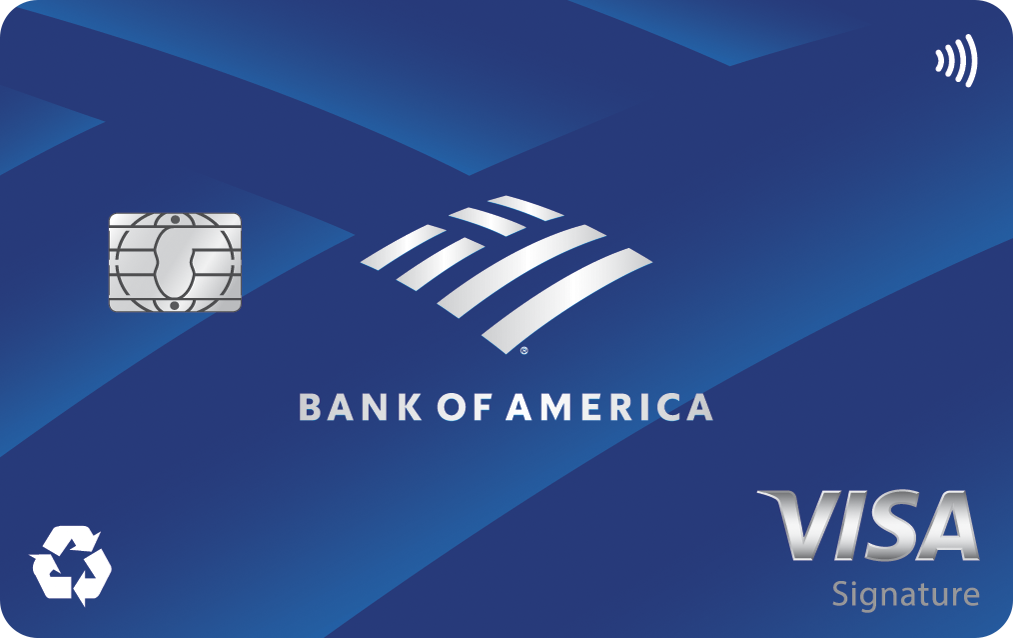
Rewards rate
Bonus offer
- 25,000 online bonus points after you make at least $1,000 in purchases in the first 90 days of account opening - that can be a $250 statement credit toward travel purchases.
0% intro APR on Purchases for 15 billing cycles and 0% intro APR on Balance Transfers for 15 billing cycles for any balance transfers made in the first 60 days
Ongoing APR
APR: 19.24%-29.24% Variable APR
Cash Advance APR: See Terms
Penalty APR: 29.99%, Variable
Balance transfer fee
3% for 60 days from account opening, then 4%
Foreign transaction fee
- Earn unlimited 1.5 points per $1 spent on all purchases, with no annual fee and no foreign transaction fees and your points don't expire as long as your account remains open.
- Use your card to book your trip how and where you want - you're not limited to specific websites with blackout dates or restrictions.
- Redeem points for a statement credit to pay for travel or dining purchases, such as flights, hotel stays, car and vacation rentals, baggage fees, and also at restaurants including takeout.
- 0% Intro APR for 15 billing cycles for purchases, and for any balance transfers made in the first 60 days. After the Intro APR offer ends, a Variable APR that’s currently 19.24% - 29.24% will apply. A 3% Intro balance transfer fee will apply for the first 60 days your account is open. After the Intro balance transfer fee offer ends, the fee for future balance transfers is 4%.
- If you're a Bank of America Preferred Rewards® member, you can earn 25%-75% more points on every purchase. That means instead of earning an unlimited 1.5 points for every $1, you could earn 1.87-2.62 points for every $1 you spend on purchases.
- Contactless Cards - The security of a chip card, with the convenience of a tap.
- This online only offer may not be available if you leave this page or if you visit a Bank of America financial center. You can take advantage of this offer when you apply now.
No annual fee
New cardholder bonus offer
No foreign transaction fees
Flexible rewards redemption
Intro APR period
Requires good/excellent credit
No bonus categories
Best rewards limited to certain customers
The Bank of America® Travel Rewards credit card is an excellent option for frequent travelers who want flexible rewards but just can't bring themselves to pay an annual fee for a credit card.
Cardholders earn an unlimited 1.5 points per dollar spent on all purchases. Rewards never expire as long as the account is open, but some of the redemption options have a time limit attached (more on that later). Points can be redeemed for credit against any travel or restaurant purchase. With no foreign transaction fees and a $0 annual fee, this card definitely travels light.
Note that this card is different from the similarly named Bank of America® Travel Rewards credit card for Students . For more information about that version of the card, see our full review .
» MORE: NerdWallet’s best travel credit cards
Bank of America® Travel Rewards credit card : Basics
Card type: Travel .
Annual fee: $0 .
Sign-up bonus: 25,000 online bonus points after you make at least $1,000 in purchases in the first 90 days of account opening - that can be a $250 statement credit toward travel purchases.
Rewards: 1.5 points per dollar spent.
Points are worth 1 cent apiece when redeemed for travel or restaurant purchases and a little over half a cent apiece for cash. Points can also be redeemed for gift cards at varying point values. Minimum redemption: 2,500 points for travel or cash.
Interest rate: 0% Intro APR for 15 billing cycles for purchases, and for any balance transfers made in the first 60 days. After the Intro APR offer ends, a Variable APR that’s currently 19.24% - 29.24% will apply . (A 0% APR period is relatively rare on a travel card.)
Foreign transaction fees: None.

Flexible rewards
The Bank of America® Travel Rewards credit card isn't tied to any particular airline or hotel chain. Book travel any way you want, with no restrictions and no blackout dates, and then use points to wipe out the cost on your statement. Bank of America® also has one of the broadest definitions of "travel" of any major issuers. You can use points to get credit for airfare, hotel stays, cruises and car rentals, of course — but also for things like campgrounds, art galleries, amusement parks, carnivals, circuses, aquariums and zoos. Add to that, points are good for credit on restaurant purchases, too.
Points don't expire, but the travel and dining purchases you can redeem them for have a time limit. You can redeem points for a statement credit toward travel or dining purchases made within 12 months prior to the date of redemption. And, these redemptions are limited to the most recent 2,500 qualifying travel and dining purchases.
Travel-friendly features
As part of the Visa network, the Bank of America® Travel Rewards credit card travels well internationally. Visa is widely accepted worldwide, meaning you're less likely to run into trouble using it abroad. You also don’t have to worry about paying foreign transaction fees, which typically cost 1% to 3% of every transaction.
» MORE: Benefits of the Bank of America® Travel Rewards card
Bank of America Preferred Rewards® boosts earnings
The Bank of America Preferred Rewards ® program allows certain Bank of America® credit card holders to earn bonus rewards. If you have enough money in combined balances in Merrill accounts, you can earn bonuses of 25% or more. There are three tiers to the program, determined by your combined balances in those bank and investment accounts:
Say you spent $10,000 on your card in a year. That would usually earn you 15,000 points, worth $150 at a penny a point. If you were a Gold member in Bank of America Preferred Rewards®, your bonus would push your earnings to 18,750 points ($187.50). If you were Platinum, 22,500 points ($225). For Platinum Honors, 26,250 ($262.50).
» MORE: Bank of America® credit cards mobile app review
Other cards pay higher rewards rates
The Bank of America® Travel Rewards credit card is a great $0 -fee travel companion, but depending on how much you spend and how you prefer to redeem, a different card might better suit you.
Bigger spenders will likely get more value from the Capital One Venture Rewards Credit Card , which earns 2 miles per dollar spent on most purchases. Like the Bank of America® Travel Rewards credit card , it allows you to redeem rewards for credit against travel expenses at a rate of 1 cent per mile.
The annual fee on the Capital One Venture Rewards Credit Card is $95 . But, if you spend more than $4,750 annually, the rewards will offset the annual fee. Once you spend more than $19,000 a year, your rewards exceed those on the Bank of America® card even after taking into account the annual fee (assuming you aren't a Bank of America Preferred Rewards® member). Reducing the sting of the fee even further, the Capital One Venture Rewards Credit Card also reimburses you for the application cost for TSA Precheck or Global Entry, and it offers a substantially higher sign-up bonus: Enjoy a one-time bonus of 75,000 miles once you spend $4,000 on purchases within 3 months from account opening, equal to $750 in travel.
You get a lower redemption value for cash
The Discover it® Miles has a lot in common with the Bank of America® Travel Rewards credit card : an unlimited 1.5 miles per dollar spent, a $0 annual fee and no foreign transaction fees. But a key difference is that the Discover it® Miles gives you the same value per point whether you redeem for travel or cash back. The Bank of America® Travel Rewards credit card has an edge over this card Visa's wider acceptance abroad, but the Discover it® Miles is worth considering if you want better cash-back value.
Premium perks can take your travel further
The PenFed Pathfinder Rewards American Express® Card offers premium perks without the premium cost. Cardholders get 3 points per $1 spent on travel purchases (4 points for those enrolled in the PenFed Honors Advantage program) and 1.5 points per $1 spent everywhere else. On top of rewards, the card offers a $100 annual air travel credit and up to $100 in the form of a statement credit for Global Entry and TSA PreCheck programs every five years.
This card comes with a $95 annual fee, but it's waived for PenFed Honors Advantage members. Even without qualifying for PenFed Honors Advantage, you can effectively cancel out the annual fee as long as you can take advantage of the full $100 air travel credit. You’ll need to be a credit union member to qualify for this card.
If you'd like to see how these cards compare with other potential travel card options, you can search NerdWallet's list of best rated credit cards .
The Bank of America® Travel Rewards credit card offers a solid travel rewards program for the fee-averse. If your deposits reside at Bank of America®, you can gain even more rewards.

If you're willing to pay an annual fee ( $95 ), this card gives you 2 miles per dollar on most spending. It has a big sign-up bonus, and miles are redeemable for statement credit against any travel expense.
Looking For Something Else?
Methodology.
NerdWallet reviews credit cards with an eye toward both the quantitative and qualitative features of a card. Quantitative features are those that boil down to dollars and cents, such as fees, interest rates, rewards (including earning rates and redemption values) and the cash value of benefits and perks. Qualitative factors are those that affect how easy or difficult it is for a typical cardholder to get good value from the card. They include such things as the ease of application, simplicity of the rewards structure, the likelihood of using certain features, and whether a card is well-suited to everyday use or is best reserved for specific purchases. Our star ratings serve as a general gauge of how each card compares with others in its class, but star ratings are intended to be just one consideration when a consumer is choosing a credit card. Learn how NerdWallet rates credit cards.
Frequently asked questions
The Bank of America® Travel Rewards credit card is a good choice for someone looking for simple rewards with a $0 annual fee. Cards with annual fees, however, typically offer more robust rewards and perks and may be a better fit for heavy travelers. With this card, you earn 1.5 points per $1 spent. (Bank of America Preferred Rewards ®customers earn 25%-75% more points.) Points can be redeemed for credit against any travel purchase.
Use your Bank of America® Travel Rewards credit card to book travel however you want, and then redeem points for credit on your statement against those travel purchases. You can use points to cover expenses like flights, hotels, vacation packages, cruises, rental cars, baggage fees and more.
Points are worth 1 cent each when redeemed for a travel statement credit.
Points don’t expire as long as your card account is open, but you will forfeit unused points if you close your account. While points don't expire, the travel and dining purchases you can redeem them for do have a time limit. You can redeem points for a statement credit toward travel or dining purchases made within 12 months prior to the date of redemption. And, redemptions are limited to the most recent 2,500 qualifying travel and dining purchases.
The more often you travel, especially if you travel internationally, the more value you can get out of a travel rewards credit card. However, if you don’t travel often, you may benefit from a cash-back card instead.
About the author
Melissa Lambarena

14 Best Travel Credit Cards of May 2024
Best travel cards main takeaways.
- Money has evaluated hundreds of credit cards, comparing their fees, benefits, welcome offers, travel insurance policies and more.
- The top credit cards for travel offer high rewards on travel purchases, which can be redeemed for airfare, hotel nights, cash back, statement credits or more.
- Our picks feature the best travel cards for every budget and include no-annual-fee, low-annual-fee, premium and business cards.
Why Trust Us?
Our editorial team has spent well over a thousand hours analyzing, evaluating and comparing the top credit card offers in the market. We carefully vet each card’s fine print in order to understand their features, limitations and potential benefits for consumers. We review cards independently, ensuring our content is accurate and guided by editorial integrity. Read our full methodology to learn more.
- 46 travel credit cards evaluated
- 10+ data points used, including ongoing fees, reward programs and welcome offers
- 100+ sources reviewed
Money.com has partnered with CardRatings.com for our coverage of credit card products. Money and CardRatings may receive a commission from card issuers. This site does not include all card companies or all available card offers. O ur top picks are listed strictly in alphabetical order.
Our Top Picks for Best Travel Credit Cards
Best no-annual-fee travel credit cards.
- Bank of America® Travel Rewards Credit Card – Best no-annual-fee travel card for flat rate rewards
- Bilt Mastercard® – Best no-annual-fee travel card for paying rent
- Capital One VentureOne Rewards Credit Card – Best no-annual-fee card for travel partners
- Chase Freedom Unlimited® – Best no-annual-fee travel card for domestic travel
- Discover it® Miles – Best no-annual-fee travel card for simple rewards
- Wells Fargo Autograph℠ Card – Best no-annual-fee travel card for everyday spending
Best low-fee-annual-fee travel credit cards
- Capital One Venture Rewards Credit Card – Best travel card for flat-rate rewards
- Chase Sapphire Preferred® Card – Best travel card for flexible rewards
Best premium travel credit cards
- American Express® Gold Card – Best travel card for dining
- Capital One Venture X Rewards Credit Card – Best low-cost premium travel card
- Chase Sapphire Reserve® – Best premium travel credit card
- The Platinum Card® from American Express – Best travel card for lounge access
Best business travel credit cards
- The Business Platinum Card® from American Express – Best business travel card
Best airline travel credit cards
- United℠ Explorer Card: Best airline credit card
Best Travel Credit Cards Reviews
Our top picks are listed in alphabetical order.
Best No-Annual-Fee Travel Credit Cards
- No annual fee
- No foreign transaction fees
- Earns 1.5x points on all purchases
- No bonus category for travel
- Few benefits compared to other cards
- Limited redemption options
Why we chose it: The Bank of America® Travel Rewards Credit Card is an easy-to-use card best suited for travel reward beginners or those who are already Bank of America customers.
Some cardholders can earn up to 75% more points if they are Bank of America Preferred Rewards members — that’s up to 2.62 points for every dollar spent.
However, the card doesn’t offer hotel and airline point transfer partners, travel insurance or extended warranty and purchase protection. Additionally, you can only redeem your points as statement credit to cover travel and dining purchases.
All information about Bank of America® Travel Rewards Credit Card has been collected independently by Money.com
- No annual or foreign currency conversion fee (Click herehttps://www.wellsfargo.com/credit-cards/bilt/terms/">here; for rates and fees)
- Use it to pay your rent and earn rewards without incurring any processing fees
- You can earn double points on all purchase categories (except rent payments) on the first of every month (up to 10,000 points)
- Earn 2x points on travel (when booked directly through an airline, hotels, car rental agencies and cruise lines)
- No welcome bonus or introductory APR period
- Points redeemed for statement credits are worth 0.55 cents each
- You must make at least five transactions in a statement period to earn points
- Rent payments can only be made to one rental property per month
Why we chose it: The Bilt Mastercard® lets you earn travel rewards on rent payments without incurring any processing fees — unlike most credit cards that typically charge around 2.5% to 2.9% per rent payment.
You can use the card to pay rent without worrying about surcharges. Once you get approved for the card, all you have to do is set up an account through the Bilt app or website and use your assigned routing and account number to pay rent through your usual payment portal. You can also use your card even if your landlord only accepts checks, and Bilt will send a check on your behalf.
Additionally, Bilt doubles the card’s rewards rates on the first of every month, which means you can earn 6x points on dining, 4x points on travel and 2x points on other purchases (up to 10,000 points per month). However, this bonus doesn’t apply to rent rewards.
On the downside, the Bilt Mastercard® doesn’t offer a welcome bonus, and points redeemed for statement credits are only worth 0.55 cents each.
- Can transfer your miles to 16 travel partners
- Earns 5x miles per dollar on hotels and rental cars booked through Capital One Travel
- Doesn't earn bonus points on airfare
- No domestic travel partners
Why we chose it: The Capital One VentureOne Rewards Credit Card is a great option if you’re looking for a no-annual fee travel credit card with a simple rewards structure.
You can use your miles to book travel through the Capital One Travel portal or as a statement credit to cover travel purchases made from airlines, hotels, rail lines, car rental agencies and more.
You can also transfer your points to one of Capital One’s 16 travel partners, which include international airlines such as Avianca and British Airways. This option is notable since travel credit cards with no annual fee don’t typically offer the option to transfer your reward to airline and hotel partners.
However, the card’s list of bonus categories is limited compared to some other no-annual-fee credit cards, and Capital One doesn’t offer bonus points on airfare booked through Capital One Travel.
- Includes trip cancellation/interruption and car rental insurance
- Features a high flat cash back rate combined and popular bonus categories
- 3% foreign transaction fee
Why we chose it: The Chase Freedom Unlimited® is the best credit card for traveling domestically. It offers a 1.5% flat cash back rate on most purchases plus it has several appealing bonus categories, including travel and dining.
This card charges a 3% foreign transaction fee, that is, on any transactions made in currency other than US dollars. However, if you mostly travel within the U.S., this card is an excellent option.
For one, you’ll earn an additional 1.5% on each of the card’s bonus categories during the first year of card membership (or up to the first $20,000 spent).
Also, although using this card abroad is not recommended, you can still use it to book international trips while you’re home, and you’ll earn 5% cash back if you book it through Chase Travel℠.
You can redeem your rewards for cash back, travel, gift cards and even transfer them to other cards that earn Chase Ultimate Rewards® points. It’s also worth noting that this card is one of the few no-annual-fee credit cards with rental car coverage and trip cancellation and interruption insurance.
- No annual or foreign transaction fees
- Discover matches the total miles you earned at the end of the first year
- Earns 1.5x miles on all purchases
- See your FICO score on the Discover mobile app, online and on statements
- Few benefits compared to other travel cards
- Doesn't include extended warranty or purchase protection
Why we chose it: The Discover it® Miles Credit Card is a no-frills card ideal for travelers who don’t want to keep track of bonus categories, earning caps or redemption values.
The card earns a flat 1.5x miles on all eligible purchases without any annual caps. You can redeem your miles for statement credits and account deposits at a rate of 1 cent per mile. You can also use your rewards through Amazon and PayPal checkout with the same value.
Also, the card’s welcome bonus is easily one of the best in the market: Discover matches every mile you’ve earned at the end of your first membership year — without any spending requirements.
However, while the Discover it® Miles Credit Card is a great starter travel card, its lack of bonus categories could hinder your reward-earning potential in the long run. Additionally, Discover cards aren’t as widely accepted internationally as Visa Signature and World Mastercard, for example.
All information about the Discover it® Miles Credit Card has been collected independently by Money.com.
- Earn 3x points on restaurants, travel, gas stations, select streaming services and cell phone plans
- Includes cell phone protection plan
- No airline or hotel transfer partners
- Doesn't include travel insurance
- Netflix and HBO are not eligible for streaming bonus
Why we chose it: The Wells Fargo Autograph℠ Card is the best travel reward card for everyday spending, offering high rewards on several popular spending categories, including travel, dining, gas, streaming services and cell phone plans.
Its travel bonus category is particularly noteworthy because you can earn points regardless of where you make your reservations, whether it’s directly with an airline or through a third-party travel site like Booking.com. (Most travel credit cards limit travel rewards to bookings made exclusively through the card issuer’s travel portal.)
The card also includes rental car insurance and a cell phone protection plan when you use it to pay your monthly bill.
All information about the Wells Fargo Autograph℠ Card has been collected independently by Money.com.
Best Low-Annual-Fee Travel Credit Cards
- Earn 2x miles per dollar on most purchases
- Up to $100 credit for Global Entry or TSA PreCheck(R)
- Includes travel accident and car rental insurance
- Fewer bonus categories than other cards with a similar annual fee ($95)
- Doesn't offer travel rewards for flights
- Car rental insurance is secondary
Why we chose it: The Capital One Venture Rewards Credit Card is the best credit card for travel miles if you want to earn a high reward rate and not worry about bonus categories.
The Capital One Venture Rewards is ideal for those who want to get the most out of their spending without worrying about tracking bonus categories and spending caps.
You can redeem your miles on the Capital One travel portal and as statement credits to cover travel purchases at a value of one cent per mile. Additionally, you may transfer your miles to more than 15 airline and hotel partners.
However, keep in mind that Capital One doesn’t have domestic travel partners, which can be a drawback if you mainly travel within the U.S.
- Points are worth 25% more when redeemed for travel purchases through Chase TravelSM
- Receive a point bonus each account anniversary
- Includes primary rental car insurance
- Earn 3x per $1 on dining, including eligible delivery and takeout meals, select streaming services and grocery purchases
- $95 annual fee
- Doesn't offer a Global Entry/TSA PreCheck(R) application fee credit
Why we chose this card: The Chase Sapphire Preferred® Card is the best travel credit card for frequent travelers who want to earn valuable rewards while paying a low annual fee.
The card features six reward categories that offer outstanding rewards on flights, hotels, restaurants and more. You can redeem your points for statement credits, account deposits, gift cards and more. But you can get the most bang for your buck by redeeming them for travel purchases through the Chase Travel℠ portal, which increases your point’s usual one-cent value by 25%.
You can redeem your points for statement credits, account deposits, gift cards and more. But you can get the most bang for your buck by redeeming them for travel purchases through Chase Travel℠, which increases your point’s usual one-cent value by 25%.
You can also transfer your points to one of Chase’s 14 travel partners at a 1:1 ratio (one Chase point equals one hotel point or airline mile). These include popular airlines and hotels like JetBlue, Southwest, United, Marriott and Hyatt.
Best Premium Travel Credit Cards
- Earns 4x points on restaurants worldwide, takeout and food delivery within the U.S.
- Up to $120 in annual dining credits, issued as a $10 statement credit per month for select restaurants (enrollment required)
- Up to $120 as Uber Cash annually ($10 per month) for food delivery orders and rides in the U.S. after you add the American Express(R) Gold Card to your Uber account
- Earn 4x points at U.S. supermarkets (on up to $25,000 per calendar year, then 1x)
- High annual fee ($250)
- Includes few travel perks and insurance policies compared to similarly priced cards
Terms apply. Please click here for applicable rates and fees.
Why we chose it: The American Express® Gold Card is ideal for foodies, offering a high reward rate at restaurants worldwide and U.S. supermarkets, takeout and food delivery. (Terms apply.)
The American Express® Gold Card also offers statement credits worth up to $240 combined — almost enough to offset the card’s $250 annual fee. These include:
- Up to $120 every year in dining credits ($10 per month) for select restaurants and food delivery services. The list includes Grubhub, The Cheesecake Factory, Goldbelly, Wine.com, Milk Bar and Shake Shack (Enrollment required)
- Automatically get $10 monthly in Uber Cash to use on Uber Eats or Uber rides in the U.S. (after you add the American Express® Gold Card to your account)
- $100 credit for dining, spa services and other activities when you book a two-night minimum stay at a hotel from The Hotel Collection through American Express Travel
- Terms apply
However, note that the American Express® Gold Card offers fewer travel perks than some other premium cards — for instance, it doesn’t offer trip cancellation and interruption insurance or TSA PreCheck® or CLEAR® Plus fee credits.
- 10,000 bonus miles every year
- Statement credit of up to $300 for bookings made through Capital One Travel
- Up to a $100 credit on Global Entry or TSA PreCheck(R)
- Skip the line and get car upgrades when renting a car with Hertz
- High annual fee ($395)
- Fewer bonus categories than other premium cards
- No domestic airline transfer partners
Why we chose it: The Capital One Venture X Rewards Credit Card is the best credit card for travel miles if you want to earn a high reward rate and not worry about bonus categories.
The Capital One Venture X also includes noteworthy perks such as:
- 10,000 bonus miles every year (starting on your first anniversary)
- $300 annual credit for bookings through Capital One Travel
- Up to a $100 credit for Global Entry or TSA PreCheck®
- Access for you and two guests to 1,300+ lounges worldwide with Priority Pass™ Select and Plaza Premium Group
- Authorized users at no extra cost (many cards have an annual fee of $75 or more for each additional user)
All in all, the Venture X is a solid option that can easily compete with other premium travel cards, especially considering its more affordable annual fee.
- Up to $300 in statement credits each anniversary year to cover travel purchases
- Transfer your points to 14 travel partners (including United, Southwest, JetBlue and Marriott)
- Points worth 50% more when redeemed for travel expenses through Chase TravelSM
- Comprehensive travel insurance coverage, including emergency dental insurance
- High annual fee ($550)
- Doesn't include a cell phone protection plan
Why we chose it: The Chase Sapphire Reserve® is the best credit card for travelers looking for a high reward rate on travel and additional benefits like comprehensive travel insurance and airport lounge access worldwide.
Your points are worth 50% more when you redeem them for travel through the Chase Travel℠ portal. This means each point is worth 1.5 cents per point instead of one cent, like most travel cards. Also, the Chase Sapphire Reserve® provides several high-end benefits such as:
- $300 annual travel credit to cover travel-related purchases like airfare, hotels, car rentals, rideshares, buses, trains, tolls and/or parking
- Access for you and two guests to 1,300+ airport lounges worldwide (after a one-time enrollment in Priority Pass™ Select)
- Statement credit of up to $100 every four years for Global Entry, TSA PreCheck® or Nexus
The Sapphire Reserve does have a $550 annual fee. But if you take advantage of the $300 annual credit and other perks, the benefits can definitely outweigh its cost.
- Access to the widest network of airport lounges of any card
- Complimentary elite status in the Marriott and Hilton hotel loyalty programs
- Hundreds of dollars in annual statement credits for travel, dining and more
- High annual fee ($695)
- Doesn't include baggage delay, travel accident and primary rental car insurance
- Limited bonus categories
Terms apply. Click here for rates and fees.
Why we chose this card: The Platinum Card® from American Express offers a list of premium benefits that no other travel card offers, including the widest network of airport lounges and room upgrades at Hilton and Marriott hotels. (Terms apply.)
The Platinum Card® from American Express features an impressive list of high-end travel benefits, including:
- Complimentary access to over 1,400 airport lounges, including Priority Pass, Delta SkyClub and Amex’s own Centurion lounges (enrollment required)
- Gold status in the Marriott and Hilton loyalty programs, which makes you eligible for room upgrades, free breakfast and late checkouts (enrollment required)
- $200 back each year on prepaid Fine Hotels + Resorts® or The Hotel Collection bookings made through American Express Travel and paid with your Platinum Card® (Hotel Collection bookings require a minimum two-night stay)
- Up to $200 per year when incidental fees, such as checked bags, are charged by the airline to your Platinum Card® (with one selected qualifying airline)
- Complimentary premium status in Avis Preferred®, Hertz Gold Plus Rewards®, and/or National Car Rental® Emerald Club (must enroll through your Amex online account using your card)
The Platinum Card® from American Express does have a hefty $695 annual fee. However, for people who travel often and will take advantage of its annual credits and travel perks, it might almost pay for itself.
Best Business Travel Credit Cards
- 5X points on flights and prepaid hotels booked through AmexTravel.com
- Around $1,000 in yearly statement credits for select business purchases
- Access to a wide network of airport lounges (terms apply)
- Around $600 in perks in Fine Hotels + Resorts(R) locations booked through American Express Travel (for stays of two nights)
- Secondary rental car coverage**
Why we chose it: The Business Platinum Card® from American Express features an extensive list of benefits that make it an ideal travel and business credit card.
With this card, you can access over 1,400 airport lounges worldwide, comprehensive travel insurance and extra amenities at hundreds of hotels, like daily breakfast and free internet access. Additionally, you get a $200 credit to cover baggage fees, in-flight refreshments and more and up to $100 for Global Entry or $85 for TSA PreCheck® every four or 4.5 years respectively. (Terms apply.) (Enrollment required.)
The card also offers several yearly statement credits for business-related purchases that include up to $400 per year ($200 between January and June and $200 between July and December) for U.S. purchases with Dell.
The Business Platinum Card® from American Express does have one of the steepest annual fees ($695) among travel credit cards, but its extensive list of benefits makes it a no-brainer for business owners who travel frequently.
Best Airline Travel Credit Cards
- Free first checked bag for you and a companion
- Up to $100 as a statement credit for Global Entry, TSA PreCheck(R) or NEXUS every 4 year
- 25% back as a statement credit on food, beverages and Wi-Fi on board United-operated flights
- Complimentary priority boarding for you and companions traveling on the same reservation
- $95 annual fee (after the first year)
- No intro APR period
- Rewards are only valuable when used with United
Why we chose it: The card_name has a low annual fee and gives you valuable benefits that make up for it, such as priority boarding for everyone on the reservation and a free checked bag for you and one companion.
Other perks the card includes are:
- Two one-time passes for United Club℠ airport lounges each account anniversary year
- 25% back as a statement credit on in-flight purchases like food, beverages and Wi-Fi
- Up to $100 every four years to cover the cost of TSA PreCheck®, Global Entry or NEXUS
- Comprehensive travel insurance (auto rental collision damage waiver, baggage delay insurance, lost luggage reimbursement, trip cancellation/interruption insurance and trip delay reimbursement)
The United℠ Explorer Card earns miles on United purchases, including tickets, inflight food, beverages, Wi-Fi and more. You also earn rewards at restaurants and select hotel stays.
You can use your miles to book flights on United Airlines or its partners, including Avianca, Lufthansa and Air Canada. You can also redeem them for seat upgrades, inflight Wi-Fi passes and more — although United miles are usually more valuable when used for airfare.
Travel Credit Cards Guide
The best credit cards for travel do more than offer high reward rates on flights and hotel stays. They also provide rewards for everyday spending and perks such as travel insurance , airport lounge access and annual statement credits.
Here’s a rundown of how these cards work:
What is a travel credit card?
Travel credit cards offer benefits and rewards geared towards individuals who travel frequently or want to earn travel benefits.
They provide high rewards for travel-related expenses such as flights, hotels, rental cars and dining. You can then use these rewards (in the form of points or miles) to book travel reservations. Some cards also let you transfer your rewards to hotel and airline partners or redeem them for statement credits, cash back, gift cards and more.
On top of the rewards, these cards often feature several travel-related perks, such as no foreign transaction fees, hotel discounts, travel insurance, free checked bags and airport lounge access.
How do travel credit cards work?
Travel credit cards give you a certain number of points or miles per dollar on eligible purchases. They often offer around 5x points or more for airfare, hotel rooms, rental cars and more. Some cards may also count parking, bus fares, taxis, tolls and ferries as travel purchases.
Besides travel, you’ll typically get bonus points in additional spending categories. For example, some cards may offer 3x points per dollar on dining, groceries, drugstores or streaming services. All other eligible purchases usually get at least one point (1x) per dollar.
You can then redeem your points for flights, hotels, car rentals, cruises and more. Card issuers also usually let you redeem your points for non-travel options like statement credits, cash back or gift cards.
How to use credit card points for travel
Travel credit cards have rewards programs through which you can earn points (or miles). Well-known point programs include Chase Ultimate Rewards®, American Express Membership Rewards® and Citi ThankYou® Rewards.
To redeem your points, go to your travel card’s rewards program portal. The process may differ across credit card issuers, but you’ll usually be able to access it through your online account on the issuer’s website or app.
Points are usually worth one cent each. However, some issuers increase their value if you redeem them for travel. For example, Chase Sapphire Preferred® Card points are worth 1.25 cents when used to book flights through the Chase Travel℠ portal.
Points may also be worth less than a cent, depending on how you redeem them. For example, some cards allow you to use your points at Amazon checkout. While this might sound convenient, this option may bring down the value of points to around 0.8 cents.
Some cards also allow you to transfer your rewards to select airline and hotel partners. Typically, you can transfer rewards to these loyalty programs on a 1:1 ratio, meaning that 1,000 credit card points are worth 1,000 loyalty program points.
Difference between points and miles
You’ll earn points or miles depending on which travel credit card you have. For example, Chase travel credit cards earn points, while Capital One travel cards earn miles. Miles and points typically have similar value (around one cent each) and redemption options.
However, keep in mind that several cards that earn miles are tied to a specific airline — like the United℠ Explorer Card. In this case, you can only use your rewards for purchases with the issuing airline such as flights, seat upgrades, inflight dining and more.
Pros and cons of travel credit cards
- Some cards offer up to 10x points per dollar on travel purchases.
- Many have additional bonus categories for dining, grocery shopping and more.
- They may include travel benefits like priority boarding, airport lounge access and late hotel checkouts.
- Points or miles can also be redeemed for cash back, statement credits, gift cards and more.
- Highest reward rates are usually limited to purchases made through the card issuer's travel portal.
- They might not offer high rewards on spending outside of the travel category.
- Some of the best ones can have steep annual fees and require good to excellent credit
- Redeeming points or miles for anything other than travel can reduce their value to less than one cent per dollar.
Types of travel credit cards
Here’s a rundown of the differences between the three main types of travel credit cards:
Airline credit cards
Airline credit cards are ideal for people who regularly fly with the same airline. These cards earn miles you can redeem for flights, seat upgrades, inflight dining, airport lounge access and other travel-related purchases but typically only with the issuing airline.
Some of the best airline travel credit cards include benefits like free checked bags, priority boarding and discounts on in-flight purchases.
Hotel credit cards
With hotel credit cards, you can only redeem your points for stays, discounts and other benefits with one particular hotel chain.
For example, the Hilton Honors American Express Surpass® Card earns points for Hilton’s loyalty program, which you can redeem for free nights in the company’s properties, including Hilton Garden Inn and Waldorf Astoria hotels.
Hotel credit cards may also offer complimentary breakfast, room upgrades, late checkouts and bonus points for purchases made during your stay.
General travel credit card
General travel credit cards are more flexible than airline or hotel cards. They aren’t affiliated with a single airline or hotel chain, so their points can be used to book flights, hotel stays, rental cars and more from different companies.
These cards may also offer useful perks for frequent travelers, like airport lounge access. They can also cover the cost of a Global Entry or TSA PreCheck® membership, which allows you to skip the long lines at airport security or customs.
How to choose a travel credit card
Picking the best travel rewards credit card boils down to how often you travel, which cardmember perks you’d benefit the most from and the categories you spend the most on.
Here are some factors to keep in mind when choosing the best card for you:
- Do you travel often? A travel rewards credit card offers high reward rates on travel spending, and you’ll get the most bang for your buck when you use their points on flights, hotels and car rentals. If you don’t take trips often but want to pile up rewards, a cash-back credit card might be a better fit.
- Assess your everyday spending. Many travel cards have additional bonus categories other than travel, like dining, supermarkets, streaming services and drugstores. Consider your day-to-day spending habits and pick a card with bonus categories that fit your lifestyle.
- Consider the card’s annual fees. No-annual-fee travel cards usually have few travel benefits. The best travel credit cards charge annual fees of at least $90 and can go as high as $700. However, these are often best for those that travel enough to take advantage of their benefits.
- General travel card vs co-branded cards. General travel cards have more flexible redemption options. On the other hand, co-branded cards are often tied to a specific airline or hotel, which can limit your options. Still, they do provide valuable perks like free checked bags, in-flight discounts and hotel upgrades.
- Compare extra travel perks. Some cards offer extras like annual statement credits for flights and hotels or upgrades when renting cars. Take the time to compare each card’s roster of add-ons and pick one that will best suit your travel plans.
- Compare insurance policies. The best credit card travel benefits include insurance policies that cover travel accidents, rental cars, trip cancellations and more. These policies can vary widely based on the issuer and the card’s annual-fee tier.
- Beware foreign transaction fees. Most travel credit cards don’t charge foreign transaction fees. Some cash-back cards may offer outstanding rewards for travel purchases but charge around 3% fees on purchases outside the U.S.
- Look beyond welcome offers. A 60,000-point welcome bonus can be enticing. However, it shouldn’t be your deciding factor, especially if you’ll end up paying a high annual fee without getting your money’s worth.
How get the most out of your travel credit card
To get the most out of your travel credit card, you need to use it as often and strategically as possible. This way, you can earn points or miles with each purchase, which you can then redeem for free or discounted flights, hotels and more.
Use your travel card to pay most of your purchases and bills and then pay your card off in full each month. This will help you earn points while avoiding interest charges and high credit card debt , which can impact your credit score.
Here are some other tips to maximize your rewards and benefits:
- Consider adding an authorized user to your account. They’ll earn points with every purchase they make, and those will get added to your overall total. However, make sure to pick someone who will use the card responsibly since you’ll be legally liable if they ever fail to pay their monthly bills.
- Redeem your rewards for travel through the card issuer’s website. This redemption option usually offers the highest value compared to gift cards or merchandise, for example.
- If your card offers travel protections (like travel accident or luggage insurance), use it to pay for your passenger fares. This way, you could be reimbursed in the event of an accident or lost luggage, for example.
- Use your airline or hotel card to sign up for the company’s frequent flyer or frequent guest loyalty program. You’ll often earn extra points or miles when you’re a member and use your co-branded card to pay for flights, hotel stays and more.
- If you can transfer points from other credit cards to your travel card, take advantage of this feature. This way, you can accumulate extra points for travel booking and sometimes even increase their value.
Best Travel Credit Cards FAQs
What is the best travel credit card, what is the best credit card for international travel, how to travel for free with credit cards, what is the best credit card for travel miles, what is a welcome bonus on a credit card, how we chose the best travel credit cards.
We ranked the best credit cards for travel based on their annual fees, benefits, reward rates and redemption flexibility.
Fees: We compared interest rates and foreign, cash advance and balance transfer fees for more than 50 credit cards. We also considered their annual fee, looking for those that offered the most for the money.
Ongoing benefits: Intro APR and bonus offers are attractive, but they can only get you so far. We focused on cards with year-round benefits such as travel insurance or cell phone protection plans.
Reward rates: We preferred cards that allow you to earn extra points from travel expenses, as well as those that provide significant bonus rewards in popular spending categories, like dining, supermarkets or streaming services.
Redemption flexibility: Our picks don’t limit your redemption options to just travel. Some let you use your points for Amazon purchases, for example. We also preferred issuers that allowed cardholders to transfer their points to airline and hotel partners.
Summary of Money’s Best Travel Credit Cards of May 2024
- Discover it® Miles Credit Card – Best no-annual-fee travel card for simple rewards
Money.com has partnered with CardRatings for our coverage of credit card products. Money.com and CardRatings may receive a commission from card issuers.
For Capital One products listed on this page, some of the above benefits are provided by Visa® or Mastercard® and may vary by product. See the respective Guide to Benefits for details, as terms and exclusions apply.
To see rates and fees for the American Express® Gold Card, visit this link . Terms apply.
To see rates and fees for The Platinum Card® from American Express, visit this link . Terms apply.
To see rates and fees for The Business Platinum Card® from American Express, visit this link . Terms apply.
* Insurance disclosures for American Express Cards on this page:
Trip Delay Insurance: Eligibility and Benefit level varies by Card. Terms, Conditions and Limitations Apply. Please visit americanexpress.com/benefitsguide for more details. Underwritten by New Hampshire Insurance Company, an AIG Company.
Trip Cancellation and Interruption Insurance: Eligibility and Benefit level varies by Card. Terms, Conditions and Limitations Apply. Please visit americanexpress.com/benefitsguide for more details. Underwritten by New Hampshire Insurance Company, an AIG Company.
Baggage Insurance Plan: Eligibility and Benefit level varies by Card. Terms, Conditions and Limitations Apply. Please visit americanexpress.com/benefitsguide for more details. Underwritten by AMEX Assurance Company.
Global Assist Hotline: Eligibility and Benefit level varies by Card. Terms, Conditions and Limitations Apply. Please visit americanexpress.com/benefitsguide for more details. Card Members are responsible for the costs charged by third-party service providers.
Extended Warranty, Purchase Protection, Eligibility and Benefit level varies by Card. Terms, Conditions and Limitations Apply. Please visit americanexpress.com/benefitsguide for more details. Underwritten by AMEX Assurance Company.
Car Rental Loss & Damage Insurance: Eligibility and Benefit level varies by Card. Terms, Conditions and Limitations Apply. Please visit americanexpress.com/benefitsguide for more details. Underwritten by AMEX Assurance Company. Car Rental Loss or Damage Coverage is offered through American Express Travel Related Services Company, Inc.
** Car Rental Loss and Damage Insurance can provide coverage up to $75,000 for theft of or damage to most rental vehicles when you use your eligible Card to reserve and pay for the entire eligible vehicle rental and decline the collision damage waiver or similar option offered by the Commercial Car Rental Company. This product provides secondary coverage and does not include liability coverage. Not all vehicle types or rentals are covered. Geographic restrictions apply. Eligibility and Benefit level varies by Card. Terms, Conditions, and Limitations Apply. Please visit americanexpress.com/benefitsguide for more details. Underwritten by AMEX Assurance Company. Car Rental Loss or Damage Coverage is offered through American Express Travel Related Services Company, Inc.
*** Car Rental Loss and Damage Insurance can provide coverage up to $50,000 for theft of or damage to most rental vehicles when you use your eligible Card to reserve and pay for the entire eligible vehicle rental and decline the collision damage waiver or similar option offered by the Commercial Car Rental Company. This product provides secondary coverage and does not include liability coverage. Not all vehicle types or rentals are covered. Geographic restrictions apply. Eligibility and Benefit level varies by Card. Terms, Conditions, and Limitations Apply. Please visit americanexpress.com/benefitsguide for more details. Underwritten by AMEX Assurance Company. Car Rental Loss or Damage Coverage is offered through American Express Travel Related Services Company, Inc.
© Copyright 2024 Money Group, LLC . All Rights Reserved.
This article originally appeared on Money.com and may contain affiliate links for which Money receives compensation. Opinions expressed in this article are the author's alone, not those of a third-party entity, and have not been reviewed, approved, or otherwise endorsed. Offers may be subject to change without notice. For more information, read Money’s full disclaimer .
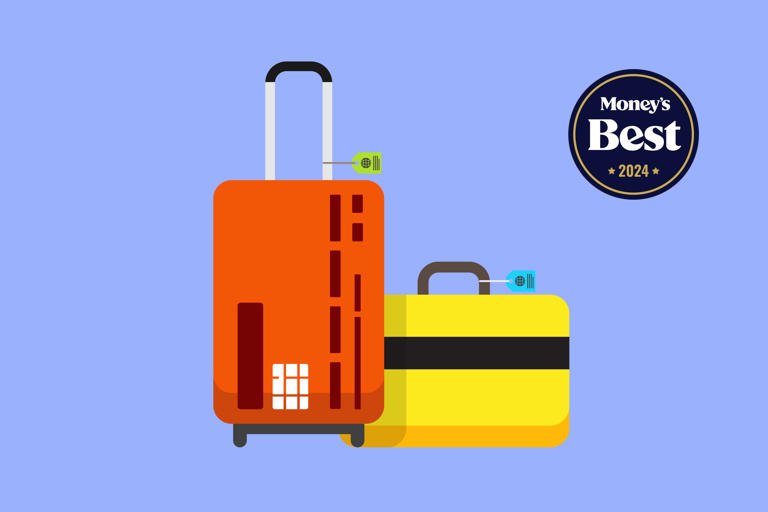
- Join CHOICE
Travel money cards with the lowest fees
We look at seven travel money cards from the big banks and airlines..
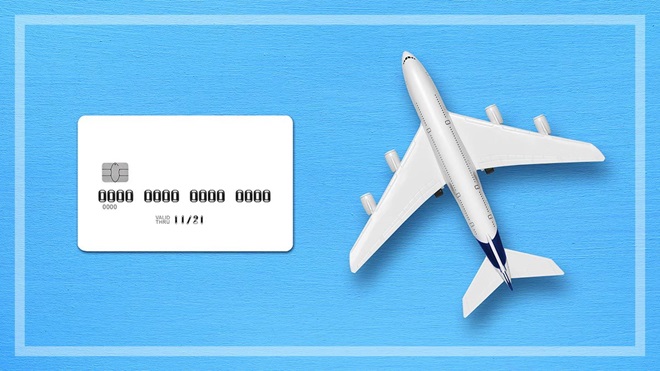
Prepaid travel money cards are offered by major banks, airlines and foreign exchange retailers like Travelex. Before travelling overseas, you load money into the card account, which locks in the exchange rate for foreign currencies at that time.
You can then use the card for purchases and cash withdrawals just like a debit or credit card, usually wherever Visa and Mastercard are accepted.
You can reload money on-the-go via an app or website, and if the card is lost or stolen, it can be replaced (usually at no cost to you).
Prepaid travel money cards also give you assurance that you're not handing the details of your everyday banking account to merchants you're not familiar with, and they provide easy access to cash when you want some, says Peter Marshall, head of research at money comparison website Mozo .
CHOICE tip: Travel money cards are best for longer trips. They're usually not worth your while if you're only taking a short trip, as some have closure, cash out and inactivity fees.
Travel money card fees
A major difference between prepaid travel cards and debit or credit cards is their fees. Some costs aren't immediately apparent, such as hefty margins built into the exchange rates.
And although fees have come down since we looked at these cards two years ago, you still need to watch out for:
- fees to load the card – either a percentage of the total or a flat fee
- ATM withdrawal fees
- a cross currency fee or margin when you use the card in a currency you haven't preloaded
- further fees if you close the account or haven't used the card for a period of time.
Travel money card with the lowest fees and best exchange rate
Westpac worldwide wallet.
Westpac closed its Global Currency Card in July 2021 and offers its new card in partnership with Mastercard. It's also available from Bank of Melbourne and BankSA.
Currencies: AUD, USD, NZD, EUR, GBP, SGD, THB, JPY, HKD, CAD, ZAR.
Key features:
- No loading, reloading, closing or inactivity fees.
- Free to use it in network ATMs in Australia and partner ATMs overseas in a range of countries including the UK, US and New Zealand.
- A charge applies at non-Westpac and non-partner ATMs in Australia and overseas.
- Best exchange rates for the US dollar, the Euro and GBP in our comparison.*
- The only card that lets you preload the South African rand.
Other travel money cards
Next to the Westpac Worldwide Wallet, there are six other travel money cards available.
Australia Post Travel Platinum Mastercard
Available online or at post offices.
Currencies : AUD, USD, NZD, EUR, GBP, SGD, THB, JPY, HKD, CAD, AED.
- Fee to reload the card via BPay, debit card or instore, but free via online bank transfer.
- Closure fee.
- Fees for ATM withdrawals in Australia and overseas.
Cash Passport Platinum Mastercard
It's issued by Heritage Bank and is available online and from a number of smaller banks and credit unions (like Bendigo Bank and Bank of Queensland) as well as travel agents.
- Fee to reload with a debit card or instore, but free via BPay.
CommBank Travel Money Card
CommBank Travel Money Card (Visa)
As NAB and ANZ have closed their travel money cards, this is the only other travel money card available from a major bank. This card has the largest variety of currencies that can be preloaded.
Currencies : AUD, USD, NZD, EUR, GBP, SGD, THB, JPY, HKD, CAD, AED, VND, CNY.
- Fee if you make a purchase with currencies not preloaded.
- Fee for withdrawals at overseas ATMs.
Qantas Travel Money Card
Qantas Travel Money Card (Mastercard)
The only travel money card offering from an airline. It can be added as a feature to your Qantas Frequent Flyer card, so you don't need a dedicated card, and you can earn points using it.
- Free to reload via bank transfer or BPay, but there's a reload fee if using debit card.
Travelex Money Card
Travelex Money Card (Mastercard)
Travelex is an international foreign exchange retailer. In Australia, it operates more than 140 stores at major airports and shopping centres, across CBDs and in the suburbs. It was the card with the best exchange rate for New Zealand dollars.*
Currencies : AUD, USD, NZD, EUR, GBP, SGD, THB, JPY, HKD, CAD.
Fees :
- Load fee instore, but free via Travelex website or app.
- Reload fee instore or via BPay, but free via Travelex website or app.
- Closure fee and monthly inactivity fee (if not used for 12 months).
Travel Money Oz Currency Pass
Travel Money Oz Currency Pass (Mastercard)
The Travel Money Group is owned by Flight Centre and is a foreign exchange retailer.
- Reloading the card via an online bank transfer or instore is free, but there's a fee if you reload via BPay, debit card or credit card.
- Cash out (closure) fee.
Travel money card tips
- Make sure the card allows the currencies you'll need, and also consider stopovers. For example, the South African rand is only supported by the Westpac card.
- Try to load your card with the right currencies and amounts on days with good exchange rates.
- Make sure you know how to reload your card if you run out of funds while overseas.
- It may be more convenient to choose a card that has an app that can be linked to your bank account.
- Avoid loading more money than you'll need as there may be fees and exchange rate margins to get the unused money back.
- Remember to cancel the card once you're finished your trip, especially if it has inactivity fees.
- Be mindful that you still may need a credit card, as travel money cards may not be accepted as security for hotels and car rental agencies.
Stock images: Getty, unless otherwise stated.
Join the conversation
To share your thoughts or ask a question, visit the CHOICE Community forum.
BMO Prepaid Mastercard Review for 2023
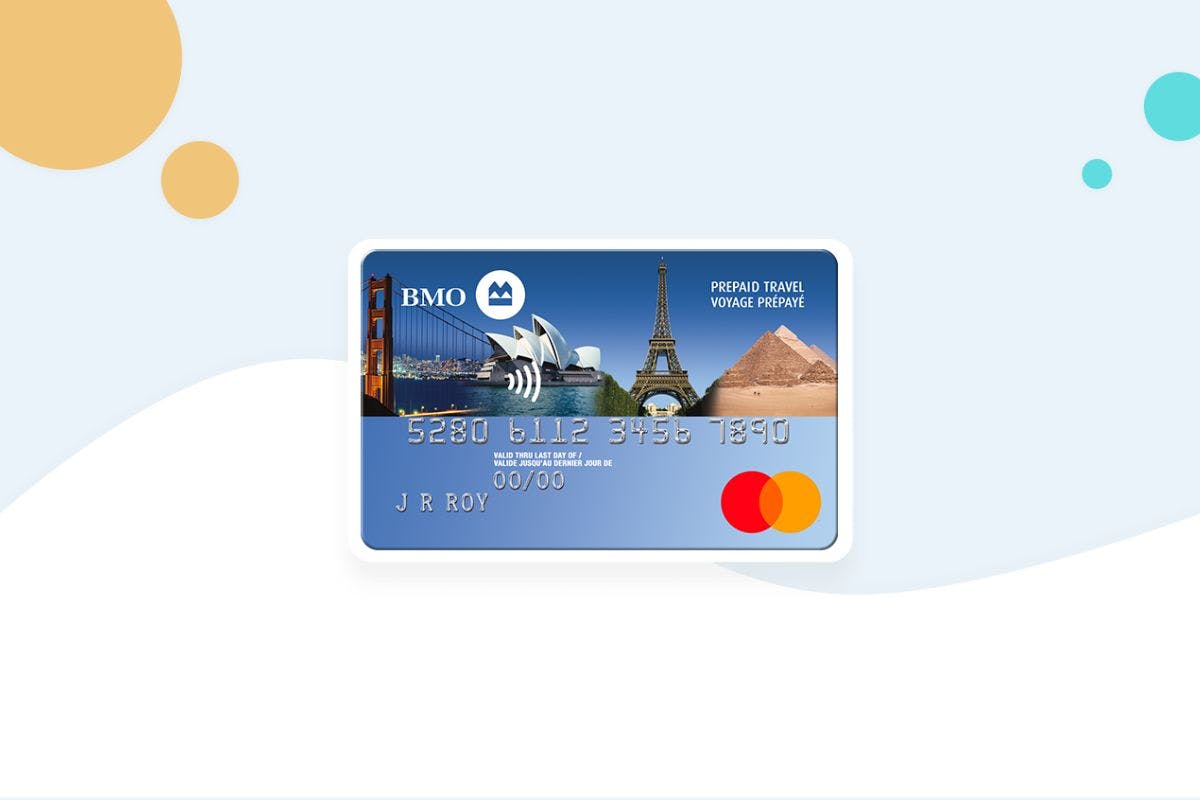
The BMO Prepaid Mastercard is a popular choice among Canada’s best prepaid cards . Why? Because more and more people are opting for prepaid cards as an accessible alternative to traditional credit cards. The BMO Prepaid Mastercard does just that, offering the convenience of a credit card without the hassle of credit checks, interest rates, or the risk of racking up debt. Instead, you can spend your own money everywhere that Mastercard is accepted. In this review, we’ll examine the BMO Prepaid Mastercard and weigh the pros and cons to gauge if it is worth a try.
What is the BMO Prepaid Mastercard?
Offered by The Bank of Montreal (BMO), the BMO Prepaid Mastercard, sometimes referred to as a BMO Travel Prepaid Mastercard, is one of the most well-known prepaid cards in Canada. Only five banks presently offer a prepaid Mastercard in Canada, which makes this BMO card a great option to have. It’s backed by the country’s fourth-largest bank and is considered a very safe option.
How does the BMO Prepaid Mastercard work?
The BMO Prepaid Mastercard works strikingly similar to your favourite credit card , but with one simple difference: you load it with your own money instead of owing a balance. Consider it a gift card that you give yourself. You can use it and reload it again and again. With a traditional credit card, every purchase is a loan and the card limit is the maximum you can borrow.
But with a prepaid card, you are not borrowing. It must be funded with money you already have before you can make purchases. The amount of every purchase is deducted from the card balance, just like how debit card purchases are deducted from your chequing account.
When you’ve spent the balance, you will need to reload it with more money if you want to continue using it. That’s why it is sometimes called a reloadable card. You will also not be able to withdraw more money than what your card contains as there is no overdraft option with prepaid cards.
So because you are using your own money, not borrowing from a credit card issuer, there is no credit check or minimum income required to qualify. However, it still works like a traditional credit card by allowing you to use it in physical stores, online, at bank machines, and abroad wherever Mastercard is accepted. Simply swipe it or enter the required details to use the card.
When you get your BMO Prepaid Mastercard it will display your name, the date of issue, the date of expiry, bank name, and a CSV code.
BMO Prepaid Mastercard features
The BMO Prepaid Travel Mastercard comes with several features. Unfortunately, this card does not reward your purchases at all, so if you were hoping for points or cash back, you’ll have to go elsewhere. Having said that, there are some benefits to explore:
Global Acceptance
The BMO Prepaid Mastercard is internationally accepted and will work at any location that accepts a Mastercard including physical and online stores. With this Mastercard, you will be able to shop at more than 30 million locations in Canada and abroad. And it works just like a regular credit card allowing you to book things like flights, hotels, rental cars, etc.
Purchase Protection & Extended Warranty
All BMO Prepaid Travel Mastercard holders enjoy complimentary Purchase Protection & Extended Warranty coverage to a combined lifetime maximum of $60,000. With Purchase Protection, most card purchases are covered against theft and damage for 90 days from the date of purchase. Extended Warranty protection covers most purchases by extending the original manufacturer’s warranty by up to 1 additional year.
No Interest Rates
You don’t have to worry about pesky interest charges because the BMO Prepaid Mastercard doesn’t lend on credit. Since there is no borrowing involved, there’s no interest rate to worry about. You will be able to use this card without having to keep an eye on the money owed and manage payment due dates . You can only use the money that you have deposited into your card.
The Bank of Montreal has a mobile app that can be used to manage your BMO Prepaid Mastercard. The app works on both Android and iOS devices, is very easy to use, and takes up very little storage space. With this app, you will be able to keep an eye on your card balance, payment due dates, transaction history and more.
It comes with BMO’s 100% Electronic Banking Guarantee and is safe to use. The app covers all BMO services and can even be used to pay bills, book appointments, and find nearby bank machines and branches. It is highly beneficial for users who want to manage everything online.
Quick & Easy Approval Process
There is no credit check or minimum income required to qualify. BMO is known to approve applications in only 5-7 business days. If approved, the card will be mailed to you. However, there may be some delays if there are issues with your application so make sure to double-check that all the information is correct before you submit.
Free credit score
This is one of the main features of the BMO Prepaid Mastercard. Once you sign up for a card, you will be able to keep an eye on your credit score through the app. This is a free feature designed to help BMO users understand their financial health and ensure their credit score doesn’t go below a certain point.
This feature can be of great help since finding your credit score can be quite tricky and involves several steps. As a BMO member, all you’ll have to do is log in into your mobile banking app and go to the Credit Score section. The score updates once a month and you can check it as many times as you want without impacting your score.
Financial insights
In addition to credit scores, BMO also offers valuable financial insights to BMO Prepaid Mastercard holders. You’ll be able to see your spending habits including where you’re spending most of your money. This information can help cardholders make the right call.
The system even sends tips on what you can do to improve your spending habits or what has to be done to boost your credit score . These insights are correct and highly valuable, especially for people struggling to stick to their budgets. They’re updated instantly and can be a great way to create a more reliable budget.
Security Features
It comes with Mastercard’s Zero Liability insurance that protects card owners against any financial loss due to fraudulent card use. In addition to this, there’s also Mastercard Identity Check protection to safeguard users when they shop online.
BMO alerts are sent instantly and are meant to help you confirm that transactions on the card are actually yours or if they’re fraudulent. If your card is lost or stolen, you can quickly lock it from the app. Moreover, there are also add-ons in the form of CREDIT ALERT and InfoProtector 360.
Fees & penalties with the BMO Prepaid Mastercard
The BMO prepaid Mastercard is an affordable alternative to a regular credit card, but it’s not entirely free to own. You will have to pay a variety of fees to ensure your card continues to operate smoothly. Here’s a breakdown of costs, penalties, and fees:
- Annual fee : $6.95
- Dishonoured payment : $40.00
- Copy retrieval request : $5.00
- Foreign transaction fee: 2.5%
- Card balance refund by Cheque : $10.00
- Card balance refund by direct/electronic deposit: $3.00
- Bill payments, cash advances, and cash-like transactions : $5.00
- Inactivity fee : $5.00 per month
These charges are revised every now and then. Have a look at the official site for the latest figures or get in touch with customer service agents to ensure you don’t end up paying more than expected. Also, you might be able to avoid some of these costs by being smart, i.e.: don’t let your card go inactive.
Furthermore, you may even find some prepaid cards in Canada that are more affordable and rewarding to own . These are also backed by reputable companies. Make sure to compare different options to find the best fit and don’t just look at annual charges but other costs as well.
How can I get a BMO Prepaid Mastercard?
It is very easy to sign up for a BMO Prepaid Mastercard. The first thing is to ensure you qualify for a BMO Prepaid Mastercard in Canada and meet the eligibility requirements:
- You must have a permanent Canadian address
- You must be of legal age in your province or territory of residence to apply
- You must not have filed for bankruptcy in the last 7 years
In some cases, you may be able to apply for a card even without a permanent address. In such cases, you will have to visit your nearest branch as applications without a permanent address cannot be filed online. You may be asked to submit certain documents when you visit a branch to get a new BMO Prepaid card.
Fortunately, there are no credit score requirements. Also, you are not required to have or show a source of income to apply for a BMO Prepaid Mastercard.
You can apply for a card even if your credit score is 300, which is the lowest possible score in the country. However, you cannot apply for a card if you have declared bankruptcy in the preceding seven years. You will have to wait for at least seven years to pass since you declared bankruptcy to be eligible for this card.
Assuming you’re eligible, you can go ahead and apply for the card. The process is very easy and only takes a few minutes. You will be asked to provide personal details including your full name, date of birth, and address. Next, you’ll have to provide your financial details and copies of your identification documents.
Acceptable documents include driver’s licences, passports, and resident cards. Moreover, you will also have to submit proof of address such as a utility bill. All documents must be valid and not expired. Also, proof of address must not be older than 90 days.
If everything’s right, the bank will send your card to your mailing address within 5-8 working days. In case there are some issues, you may be asked to submit additional documents that may delay the process. Those without a permanent address will have to visit the branch to receive their card.
Once received, simply follow the instructions that come with the card to activate it. You will have to call the number given on the back of your card and provide the required information to be able to use it. The process will only take a few minutes. Once activated, you will be able to use your card for as long as it has enough balance.
How to load your BMO Prepaid card with money
If you’re an existing BMO client, you can transfer money from your BMO chequing or savings account onto your BMO Prepaid card. To do this, simply sign into your online banking app.
If you’re not a BMO client, you can still load the card with funds from your account at another Canadian financial institution. To do this, you will need to add your BMO Prepaid card as a bill payment payee and treat it like a credit card payment. You will then be able to load the card by making a “bill payment” in the amount you wish to put on the card. The money will then be deposited onto the card in 2-5 business days.
Pros & Cons of the BMO Prepaid Mastercard
BMO Prepaid Mastercards come with several pros and cons. Just like any ordinary credit card, you have to weigh the benefits with the risks. We’ll discuss both here so you can understand why it may be a suitable option for you.
The biggest benefit of this card is the ease it offers. Anyone can apply for a BMO Prepaid Mastercard as it has no credit score requirements . Most users will receive approval within a day and a card will be mailed within a week.
It’s also very safe to use thanks to insurance protection. The company protects cardholders against unauthorized transactions and goes the extra mile to protect against fraudulent use.
Plus, you can shop at both physical and online stores as it’s accepted internationally at more than 30 million stores and over 10 million automated teller machines (ATM) around the world.
The biggest downside is that the money you deposit in your account will not earn you any interest and the card offers no cash back or rewards program. Plus, there’s an annual fee of $6.95 even though you don’t earn rewards or get any special perks.
Since the funds in your BMO prepaid account aren’t CDIC guaranteed, they cannot be used to support pre-authorized recurring payments.
The maximum balance is only $10,000, which can be a problem for users who like to spend lavishly. You may have to keep loading your card, again and again, to ensure it meets your requirements. This can be an issue for some users.
How to add money to your BMO Prepaid Mastercard
It is important to not let your card have little to no balance as it is only as good as the amount it carries. The bank gives several options to deposit money into a card. The easiest method is to use your BMO chequing account .
BMO allows users to directly transfer money from their BMO account to their prepaid card. You can do this online through the website, through the app, by visiting a branch, or a nearby ATM. The amount will appear on your card within 24-48 hours. The maximum amount for this method is $10,000 and the minimum is only $100.
Another option is to use the bill payment feature. You can register your BMO Prepaid Mastercard as a bill to be paid via mobile banking, telephone, ATM, online or a physical branch. Supported banks include BMO, Scotiabank, BC Royal Bank, CIBC, PC Financial, Laurentian Bank, Alberta Treasury Board, and TelPay. The maximum amount for using this method is $1,000. It can, however, take about 2-5 days for the money to appear in your account.
The bank currently does not support cash transfers. You must have a bank account with BMO or any other financial organization to be able to deposit money into your account. Do not go for this option if you have no bank account at a supported bank.
BMO Prepaid Mastercard expiry
BMO prepaid cards expire after three years of issuance. You will not get a new card automatically. You will have to request a new one before your existing card expires.
If your card has already expired then you will have to apply for a new card by getting in touch with the bank. Any balance remaining on your card when it expires will be refunded to you. You can choose to get the amount transferred to your new card or have BMO use TransUnion Credit Bureaus or Equifax to clear your dues.
The BMO Prepaid Mastercard is among the best prepaid cards in Canada . It is easy to apply for and can be used to shop at any store that supports Mastercard. It works like any other card and can help manage your finances. However, it will not improve your credit score or be helpful in applying for a loan.
Alternatives to the BMO Prepaid Mastercard
The BMO Prepaid Mastercard, while offering notable features, may not cater to everyone’s needs. For those seeking different advantages or broader functionalities, various alternatives are available. Let’s delve into some other cards that could better align with your preferences.
KOKO Prepaid Mastercard
The KOHO Prepaid Mastercard offers a fresh approach to spending and saving by giving you up to 2% cash back on groceries, dining, and transportation as well as up to 4.5% interest on deposit. The unique app ensures you stay on track with budgeting tools, and automatic savings features. Plus, you can only spend what you load onto the card.
As part of the vast Mastercard network, the KOHO Prepaid Mastercard promises acceptance at millions of locations worldwide, catering to both online and physical store purchases. One standout feature is the Round-Up Savings, where each transaction is automatically rounded up to the nearest dollar, with the difference transferred to your savings—a seamless way to save without even thinking about it. Plus, the real-time notifications ensure you’re always in the know about your spending habits and account balance, enhancing security and awareness.
Neo Money Card
Designed for the modern spender, the Neo Money Card stands out for its digital-first approach. It seamlessly integrates with the Neo app, providing tailored rewards of 1% interest on your account balance and an average of 5% cash back based on your spending patterns.
Plus, you’ll get up to 15% cash back on every first purchase you make across a network of over 10,000 partner merchants. Cash back offers near you can be found within the app ensuring you always get the best deals from your favourite brands and local stores. Enjoy instant transaction notifications so that you’re always updated about your expenditures and account balance.
EQ Bank Card
The EQ Bank Card redefines the traditional banking experience allowing you to quickly access the money in your EQ Savings Plus Account. Simply move money from this high-interest savings account to your EQ Bank Card account at the tap of a button.
Not only does it serve as a gateway to a competitive 2.50% interest rate for your savings, but it also offers 0.5% cash back on all your card purchases, no foreign transactions, and all Canadian ATM fees reimbursed to you. The app offers robust online banking features too, helping you manage your money on the go.
What makes the EQ Bank Card even more enticing is its fee-free structure. Like the account, the card comes with no monthly or annual fees or transactional charges. It’s an ideal choice for those who want their money to work harder for them, without any of the traditional banking hassles.
What is the Bank of Montreal
The Bank of Montreal has a very rich history. It was founded in 1817 and has been going strong since then with its head office located in Montreal. The bank, however, opened its operational headquarters in Toronto in 1977.
The bank is globally recognized and made it to the Forbes Global 2000 List, ranking at number 131. It is looked at as a reputable bank as it hasn’t missed a dividend payment in nearly two centuries , since 1829. This makes it a good option for people who are looking to get a prepaid card.
Owned by The BMO Financial Group, the bank provides a variety of services including debit and credit cards, trusts, insurance, securities, deposits, investments, and loans. It is a member of a variety of national and international organizations including the Canadian Bankers Association, Interac, the Canada Deposit Insurance Corporation (CDIC) , Air Miles, Cirrus for Mastercard card users, ATM Industry Association, Mastercard International, and Diners Club North America.
This is very important because these memberships make the BMO Prepaid Mastercard more reliable. Thanks to such partnerships, users can enjoy greater benefits and usage. We’ll look at this and several other aspects of owning a BMO prepaid card in 2022.
Still have questions about the BMO Prepaid Mastercard? We’ve got you covered. Checked below for some of the most commonly asked questions:

Michael Wight

Revolut Travel Card Review: Is Revolut Good For Traveling?
by Melissa Giroux | Last updated Dec 5, 2023 | Travel Finances , Travel Tips
If you haven’t been living under a rock, you’ve probably already heard about the Revolut card. Revolut is a digital bank that was launched in 2015.
One of the main reasons it has gained so much popularity in such a small window of time is primarily due to the fact it has everything you would need from an online bank in a simple, modern, and easy-to-use app.
Before we do a complete Revolut review and how travelers can use the Revolut travel card abroad, let’s first look at the basics.
KEY TAKEAWAYS
- Revolut is good for traveling, especially if you choose a paid plan.
- You can use Revolut safely abroad, and you can block and unblock your card as much as you want. This can be helpful if you think an ATM or a shop seems a bit dodgy.
- The Revolut Premium and Metal plans offer travel medical insurance options and discounts on airport lounges, which are ideal for travelers.

Revolut Card: The Basics
Revolut has three different card types and four main plans, including Standard, Standard Plus, Premium, and Metal.
The Standard card has no fee and offers some basic benefits.
However, the Premium and Metal cards provide some exciting features, especially if you are a frequent traveler.
Here is a quick breakdown of the main benefits/prices of each of the cards:
**Revolut also has Revolut Business for companies, big and small, that do business beyond borders.
Get Revolut Now
Another major advantage of the Revolut card is that it takes minutes to open an account.
All you need is a working phone number, and with that, you’ll be able to open an account and get a virtual bank card.
To get a physical card, you’ll need to order one, and it takes around 14 days to deliver. You will also need to veri f y your identity .
One of the disadvantages of Revolut is that, at the moment, it isn’t available to residents of all countries.
Currently, only legal residents of the European Economic Area (EEA), Australia, Singapore, Switzerland, Japan, and the United States can download the online bank.
Once you have your card and your identity is verified, you are ready to take full advantage of your Revolut card. This is where the fun begins.
If you are a meticulous traveler who loves planning and budget travel , then the Revolut travel card is the perfect solution for you.
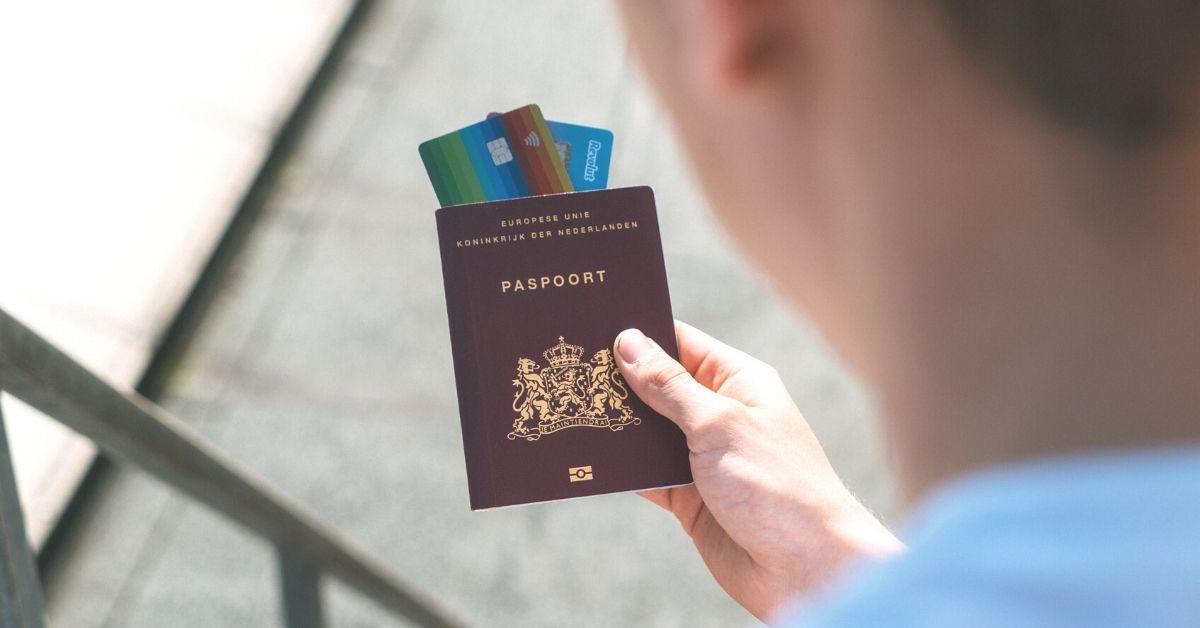
Revolut Travel Card: Spending, Budgeting & Saving
The best part of the Revolut card is that the account section grants you the ability to look at all of your transactions by day, week, and even month.
You can also group transactions into specific categories. So, for example, if you budgeted 200 dollars for restaurants at X location for June, you can track all those costs in the app.
You can also download statements, upload receipts and add notes to each transaction to keep track of your spending.
You can even split the bill if you are traveling with someone or send them money by scanning their QR code.
If you are traveling abroad, the app allows you to create multiple accounts in various currencies.

This means that you can exchange your US dollar for Euro and have two separate accounts in two different currencies.
This also means that whether you are traveling in France or the US, you can pay in the local currency. Be aware that not all currencies are currently available.
Nevertheless, if you are paying for something in a different currency, Revolut converts your account balance into the local currency using the real interbank exchange rate.
This allows you to avoid being charged a fee and a mediocre exchange rate set by the ATM provider or merchant acquirer.
Another great feature is that the app sends you a notification the second you pay with your card, even before the receipt has finished printing (as long as you are connected to the Internet).
The app also has vaults, where you can save money for travel . You can create multiple vaults, like a “travel to Egypt” vault or a “weekend spa getaway” vault.
You can fund the vaults with a one-time transfer, recurring transfer, or something the Revolut card calls spare change.
Spare change means the app will round up the spare change from your Revolut card spending and place it in this vault.

Using Revolut Abroad
Can Revolut be used abroad? Yes!
Now, you may be wondering “Is Revolut good for traveling?” It is!
I’ve been using Revolut abroad for a few years now, and it’s my go-to card.
So, how does Revolut work abroad?
With the Revolut travel card , you can transfer money abroad in 30+ currencies with the interbank exchange rate , with a small 0.5% fee for anything above €1,000 each month during the weekdays.
However, one disadvantage is that when markets are closed on the weekend, fees are charged at 0.5% and 1% on currency exchange rates no matter the transfer amount.
Revolut also charges an international fee, which will be listed in the payment breakdown when you are sending your money.
The major advantage of Revolut is that it offers the ability to send money around without hidden fees and provides fast and secure money transfers.
The foreign exchange rate can be viewed on the Revolut app before exchanging currency or making a bank transfer involving foreign exchange.
The Revolut travel card also allows you to withdraw cash from an ATM using your Revolut card without fees.
The disadvantage of this is that if you have the standard plan, that means that you’ll only be able to take out 200 dollars per month.
That being said, using a Revolut card abroad is fairly easy and safe.
Security: Preventing Fraud
One of the worst feelings in the world is realizing that your main travel card has been lost or cloned.
What usually ends up happening is a mad dash to call your main bank abroad to freeze the card and ask for a replacement.
Don’t worry, we’ve all been there. The problem is that some banks can take up to 3-4 weeks before they can send you a replacement card, which can ruin your time abroad.
Revolut claims that it is 7x better than a regular bank in stopping card fraud. This is due to their anti-fraud system that helps keep fraudulent transactions under 0.01%.
But that’s not all. Revolut allows users to freeze and unfreeze their cards easily in the app, it takes seconds.
You can also enable location-based security to reduce fraudulent transactions, disable contactless, online, swipe payments or even choose a monthly card spending limit for extra peace of mind.
And, if you do lose your card, you can order a replacement card in the app and ask for express delivery, which usually takes around 2-3 days, depending on your location.
Also, if you lose your phone, Revolut has an automated phone line to block your card instantly.

Extra Perks When Using Revolut Abroad
Although there aren’t many perks with the Standard and Standard Plus plans, if you are a frequent traveler, then you might consider opting for the Premium or Metal Plans.
These plans have perks like pay-per-day travel medical insurance, which means that you can get location-trigger coverage and only pay for the days you use.
You can also upgrade for the delay and lost baggage insurance, emergency dental, and medical coverage, and even insure up to three adults and all your children.
These plans also have lounge access to +1000 airport lounges globally and SmartDelay, which allows you to get an airport lounge pass if your flight is delayed more than an hour.
Get Revolut
Revolut Sign-Up Bonus Promotion
Upgrade to a global lifestyle with Revolut. Transform your finances when you level up to Premium with Revolut’s Premium trial .
You’ll get features to help you save, spend and invest smarter than ever.
Get a 3-month Revolut Premium subscription trial, effective today.
Note that this promotion work everywhere except for Australia and Singapore, where the offer is a cash bonus of $15 AUD in Australia and $15 SGD in Singapore.
All new Revolut customers are eligible.
Final Thoughts On Revolut Travel Card
It seems as if the Revolut card is the travel card of the future.
Not only can it be one of the best cards to use while you are abroad, but it also can be a great day-to-day bank card.
Although the card has a lot of advantages, it is also important to note that there are still some countries where the card might not work.
For example, Revolut users have noted in previous years that the Revolut card didn’t work in many establishments in Rio de Janeiro, Brazil.
Also, be wary that their online support service is not always the best, unlike your local bank.
If you do run into problems, there isn’t a physical location where you can go and talk with a manager. You’ll need to use the chat feature on the app, which can be better than having to call from abroad.
All in all, the Revolut card is a great card to travel with, but it shouldn’t replace your main bank card and instead might be a great backup card that you can use when abroad or if you’re a European expat.
If you’re American, read our Revolut USA review .
Read more about the best banking options for expats .
If you’re not sure if Revolut is the right card for you, you may want to open a multi-currency account with Wise . Learn more about Wise here or compare both Wise and Revolut .
If you want to keep cash flowing even while abroad, you must check out these ways to make money while traveling !

MY TOP RECOMMENDATIONS
BOOK HOTEL ON BOOKING.COM
BOOK HOSTEL ON HOSTELWORLD
GET YOUR TRAVEL INSURANCE
LEARN HOW TO START A TRAVEL BLOG
LEARN HOW TO VOLUNTEER ABROAD

- Argentina
- Australia
- Brasil
- Canada
- Deutschland
- España
- France
- India
- Italia
- Magyarország
- Malaysia
- New Zealand
- Polska
- Portugal
- România
- Singapore
- United Kingdom
- United States
- 繁體中文 (香港)
The 6 Best Prepaid Travel Cards for Australians 2024
Here is a list of the 6 best prepaid cards you can take with you on your travels and the positives and negatives for each one:
- Wise - our pick for prepaid cards
Revolut - low fees
- Citibank - good for use at home
- Travelex - no fees for ATM withdrawals
- Australia Post - lock in exchange rates
HSBC - no international transaction fees
Prepaid travel money cards let you load money - either in AUD or the foreign currency you need - in advance, which you can then use as you travel , for spending and withdrawals. Lots of cards let you top up and manage your account through an app, which means you can always keep up with your money, even when you’re away from home.
Picking the right prepaid card can mean you get more convenient ways to spend and withdraw when you’re abroad - and lower overall costs, too. Let’s look at some of the best prepaid travel cards for Australians , so you can pick your perfect match:
Wise - our pick for prepaid travel card
- Top up for free in AUD using PayID or bank transfer
- No annual fee, hidden transaction fees or exchange rate markups
- No minimum balance requirements
- Allows you to make payments and withdrawals wherever you are in the world in over 40 currencies
- Local bank account details in Australia (AUD), the UK (GBP), the USA (USD), Europe (EUR), Canada (CAD) and New Zealand (NZD)
- Available in the US, UK, Europe, Australia, Singapore, Japan and New Zealand
Find out more about the Wise card .

With this card:
- It's very easy to set up and order
- Available as a virtual card
- You can receive foreign currency into a multi-currency account linked to the card
- Pay with your Wise card in most places overseas where debit cards are accepted
- You can transfer money to a bank account overseas
It's not all good news though
- There is a 2% ATM withdrawal fee when you withdraw over $350 during a month
- It takes 7-14 days for delivery
Go to Wise or read our review .
- No hidden fees or exchange rate mark-ups (except on weekends)
- Very easy to use app
- Free to set up account and top up
- You can use it to transfer money to a bank account overseas
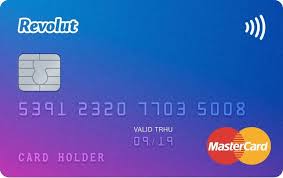
Read the full review
- No purchase fee, load fee, reload fee, exchange rate margin or minimum balance requirements
- Unlike other Travel Cards, its free and easy to use the balance of your currency or convert it back to AUD
- The exchange rates are unbeatable. They use the same rate you see on XE or Google with no hidden mark-up
- For the free Standard account, there is a 2% ATM withdrawal fee when you withdraw over $350 during a month
- The premium account costs $10.99 a month, which can really add up if you are not using it often
- Additional fees for using the card on a weekend
- 2% ATM fee once you withdraw more than $350 in any 30 day period
- 3-4 business days before you receive your card
Click here to see the full list of cards and how Revolut compares
Australia Post Prepaid Travel card - lock in exchange rates
- Load up to 11 different major world currencies
- Spend and withdraw easily around the world
- Get access to extras like free wifi when you travel
- Manage your card in online and via an app
- Transfer instantly to another Travel Platinum Mastercard
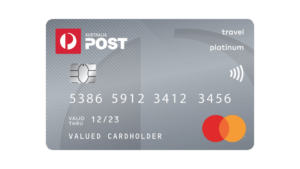
- Load up to 11 different currencies for easy spending and withdrawals
- Lock in exchange rates so you know what your travel money budget is in advance
- Get extra perks like free wifi when you load 100 AUD or more
- Get fraud protections from Mastercard
- 3.5 AUD international ATM fee, or 2.95% domestic ATM fee
- Exchange rates to add money in a foreign currency or spend a currency you don’t hold are likely to include a markup
- Some fees apply depending on how you top up your account
Travelex - no fees for international ATM withdrawals
- Load up to 10 major currencies at a time
- Spend and withdraw anywhere Mastercard is accepted
- Contactless payments so you can just tap and go
- No Travelex fees for international ATM withdrawals
- Free to spend currencies you hold in your account
- Order online and have it delivered to your home - or collect in store
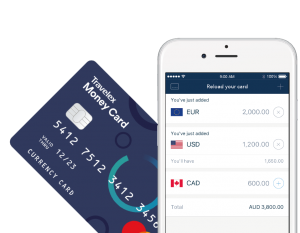
- Top up and hold up to 10 currencies at a time
- View and manage your account online
- Spend online and in person, and make withdrawals as you travel
- No membership or account fees to pay
- Get exclusive Mastercard discounts and perks
- Inactivity fees apply if you don’t use the card for a year
- Not all major currencies are supported for holding - double check they have the currency or currencies you need
Go to Travelex or read our review .
Citibank Saver Plus - best for use at home
- No international ATM or transaction fees
- Fee-free international money transfers to any account worldwide
- SMS notifications through Citi Alert
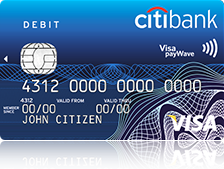
With this card you can:
- withdraw money for free at over 3000 ATMs Australia-wide and overseas
- take advantage of no foreign transaction fees, monthly fees, or minimum opening balance
- transfer money to friends and family anywhere in the world for free
- Cash deposits available within 24-48 hours
- Can’t have two cards active at the same time
- $5 account closure
- Hold and exchange 10 currencies: AUD, USD, GBP, EUR, HKD, CAD, JPY, NZD, SGD, and CNY
- No account opening or annual fees to pay
- No foreign transaction fee and no HSBC ATM fee at home or abroad
- Some cashback earning opportunity on local spending
- Easy online overseas transfers - 8 AUD fee and exchange rate markups apply
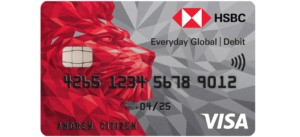
- Hold and exchange 10 currencies
- No account opening fee, no ongoing fees
- Get up to 2% cashback on eligible card spend
- No HSBC ATM fee
- No international transaction fee
- 8 AUD fee for sending money overseas
- Cashback on low value transactions made in Australia only
- Limits apply on how you can use CNY within your account
Read our HSBC Everyday Global Account review .
What are Prepaid Travel Cards?
Prepaid travel cards are a good international card alternatives to carrying cash. They look like credit or debit cards, but they function differently.
You're able to load the card with a set amount of money in the currency you need and can use it to make purchases online, in stores and to withdraw money at ATMs.
Most travel cards allow for multiple currencies to be loaded onto the card. So it's important to know what currency you'll be using on your travels. Airlines also offer prepaid cards so the money you spend can earn you reward points.
Find out how our 5 best prepaid travel cards for Australians compare in our best and worst travel cards article .
Looking for something different?
Read our guides on:
- The best travel debit cards
- The best travel cards for Europe
- The Wise debit card review
- Best virtual debit cards for Aussies

How does a prepaid travel card work?
Order a prepaid travel card online, through a provider app , or - in some cases - pick one up at a physical location or store. Generally to get your card you’ll need to show or upload some ID documents for verification - this is to keep your account safe and is a legal requirement.
Once you have your card account open , you can load funds . Different cards have their own supported methods for topping up, which usually include bank transfer, PayID, credit and debit card, and which may also allow you to deposit cash in some cases. Once you have funds on your card, you can switch to the currency you need for overseas spending. In some cases you can also leave your funds in AUD and just allow the card to convert for you - but do check that no additional fees will apply in this case.
Prepaid travel cards can then be used to tap and pay , make withdrawals and shop online . You can often also add them to mobile wallets like Apple Pay for convenient spending. Because your card isn’t attached to your everyday account it’s secure, and you can only spend the funds you’ve loaded, which means there’s no chance of accidentally blowing your budget.
Advantages and disadvantages of prepaid cards
Prepaid cards can be a handy addition when you’re abroad, as they are secure and convenient to use for payments and withdrawals. However, they’re not the only option. If you’re not sure about whether a prepaid card is right for you, check out these advantages and disadvantages to help you decide:
Advantages:
- More convenient than carrying cash, with easy access to ATMs to withdraw when you need to
- Not linked to your primary day to day account, which can be more secure and make budgeting easier
- Some accounts let you buy currency in advance to lock in exchange rates when they’re good
- You may be able to access better exchange rates and lower fees compared to using a regular bank card
Disadvantages:
- Some prepaid cards have fairly high fees - including charges when you add money to the account. Read more on how to find the best travel cards with no foreign transaction fees
- Not all prepaid cards support a broad range of currencies - check the currencies you need are covered
- Prepaid cards aren’t always accepted for things like paying security deposits - so it’s safest to have a credit card as well
Who is a prepaid debit card for?
A prepaid debit card is handy for many different customer needs. For example, you may choose a prepaid debit card in the following situations:
- You’re planning travel and want to set your budget in advance with no chance of accidentally overspending
- You want to be able to hold and exchange a selection of foreign currencies all in the same account
- You want to increase security by using a payment card that’s not linked to your main everyday account when you travel
- Some cards also offer other perks like ways to receive foreign currency payments conveniently, or cashback
How can I get a prepaid travel card?
Different prepaid cards have their own order and activation processes. However, to comply with local and international law, providers will usually need to see some ID before you’re able to get a card - this verification step may be available online by uploading images of your paperwork, or in person by visiting a branch.
Here’s an outline of the basic steps you’ll take to get a prepaid travel card:
- Pick the right card for your needs
- Visit the provider’s website or app - or call into a branch if you’d prefer a face to face service
- Complete a travel card order from, which will include your personal information
- Get verified - usually this involves showing or uploading ID like a passport or driving licence
- Add money to your card, which could be in cash, with a bank card, or by bank transfer
- You can now get your card, and manage your account online or in the app
If you’re ordering a card in person you’ll be able to start using it right away. If you’ve ordered online for delivery, you’ll need to wait a few days, to a couple of weeks, depending on the provider you’ve picked, for your card to be available. You might be able to access virtual card details in the meantime, to start spending right away.
How to choose a prepaid debit card
There are many different prepaid debit cards on the Australian market - so picking the best one for you will require a bit of research. Starting with this guide, compare a few different prepaid debit cards based on features and fees. Here are a few pointers to think about:
- Make sure you know about any opening or card delivery fee which will apply once you order your card
- Check how long it’ll take to get your card if you’re ordering online for home delivery
- Make sure the card you pick can hold a broad selection of currencies, so you can use it for more than one trip away
- Check the fees for adding funds, making ATM withdrawals and converting currencies
- Look to see if there are any account close, cash out or dormancy fees that apply once you stop using the card
- Make sure the card is well rated by other users, and from a trustworthy provider
Where can I get a prepaid debit card?
Generally you can order your prepaid debit card online or by downloading your preferred provider’s app. Some cards, like the Auspost card, can also be collected in physical branch locations.
FAQ - 6 Best Prepaid Travel Cards
Are prepaid cards free.
Prepaid cards may be free to order, or you may pay a small one time fee, depending on the provider and card you pick. Once you have your card you may also pay transaction fees such as exchange rate markups when you switch currencies, and ATM withdrawal charges. Read the card’s terms and conditions carefully so you’re aware of the costs involved.
What are the best prepaid debit cards for international travel?
There’s no single best prepaid debit card - it’ll come down to your personal preferences, where you’re travelling, and the type of transaction you need to make. Pick a prepaid card which is easy to use, which supports the currency you need, and which offers a good balance of low fees and good exchange rates.
What is the best reloadable prepaid card?
There’s no single best reloadable prepaid debit card. Use this guide to compare a few options to pick the one that’s right for you, thinking about features, fees and the range of supported currencies you’ll need.
Should I use a Mastercard or Visa for overseas?
Both Visa and Mastercard are very broadly accepted globally. It’s often a good idea to have a prepaid, debit or credit card on each of these networks, so you’ll always have a backup if for some reason one network isn’t available wherever in the world you are.
Are prepaid currency cards worth it?
Picking the right prepaid currency card can help you save money on currency exchange and access low fee international transaction services. You might also get extra perks like easy ways to lock in exchange rates in advance, so you can get a good deal and fix your travel budget before you go away.
Your currency knowledge centre

5 Best Debit Cards for Australians Travelling Overseas
Travel debit cards are a good alternative to carrying cash. They also offer the convenience of a credit card, but work differently. Here is a list of the 5 best travel debit cards you can take with you on your travels and the positives and negatives for each one.
- Read more ⟶
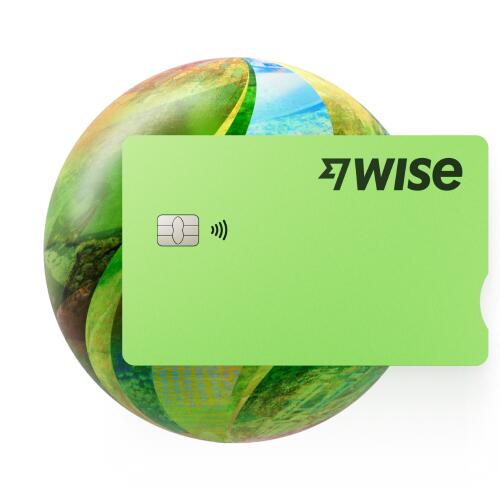
Wise Debit Card Review
The Wise Debit card give customers an easy way to spend their balances in multiple countries. With interbank rates and low fees, this product is available in Australia for both personal and business customers.

8 Travel Traps to Avoid If You're Heading to Europe
To help you avoid spending money unnecessarily, here are some pretty important travel money traps you want to avoid if you travel to Europe.
Should You Use a Credit Card or Cash on Vacation?
Consider your spending, destination and flexibility when choosing cash or credit card for vacations.
Cash or Credit on Vacation?

Getty Images
It may be best to bring both cash and credit cards on vacation for different types of transactions or if one form of payments gets lost.
Key Takeaways
- You'll be best prepared if you plan to use both cash and credit cards on vacation, as either payment type can function as a backup.
- Consider your spending habits, destination and trip duration when choosing whether to use cash or credit cards as your primary method of payment on vacation.
- Take steps to keep your cash and credit cards safe while traveling by dividing cash into multiple stashes and using tap to pay for credit cards.
Cash is king, but credit can offer greater security when you travel. Before you head out on vacation, make plans for whether you'll pay for expenses such as meals, souvenirs and local transportation with cash or credit. Consider how you plan to spend, where you're going and how flexible your money needs to be as you choose between cash or credit as your preferred payment method.
Pros and Cons of Using Cash on Vacation
Cash can offer flexibility and help you avoid fees, but it can be risky to carry on vacation.
According to Travis Cormier, chief operating officer of credit card rewards travel site 10xTravel, using cash largely depends on your destination, as you won't always find vendors who take cards in every destination. "Consider the remoteness of where you're going, as well," Cormier says. "Many card transactions require the internet to process, so if you're traveling somewhere like Egypt or Morocco where you'll be out of the city centers, expect to need cash."
Pros of Cash
Budgeting: When you pay in cash, it's easy to keep up with spending because you can see how much is left every time you open your wallet.
Avoiding fees: You may have to pay a foreign transaction fee when you use a credit card, and some establishments charge a fee on top of that for you to use a credit card instead of cash or debit.
Flexibility: Cash works almost everywhere, especially if you're leaving tips or buying food from a street vendor. You might have an easier time haggling with cash, too.
Cons of Cash
Theft or loss risk: Once cash is lost or stolen, there's no way to recover it. Also, it could be dangerous to travel with all of the cash you need for your trip.
Planning required: You'll need to plan ahead and get enough cash for your vacation just in case you can't find an ATM that works with your bank.
Less acceptance: Although cash is often widely accepted, businesses that have gone cashless and only accept debit or credit cards are increasing. Hotels and car rental companies may require you to have a card on file even if you're paying cash.
"The downside of paying with cash when traveling is that you have to carry around large sums of money with you, and you run the risk of misplacing it or theft," says budgeting expert Andrea Woroch. She suggests carrying a debit or credit card as a backup to cash.
Cormier says using cash in countries with a volatile currency may eventually make your cash less valuable. "If you don't use all the cash and you're saving it for a future trip, it may not be worth as much next time you travel."
Pros and Cons of Using Credit Cards on Vacation
Credit cards can offer greater protections than cash, but you may experience fees or issues with acceptance depending on where you're traveling.
Pros of Credit Cards
Expense tracking: You can keep track of what you've spent by logging into your online account.
Rewards and benefits: Many credit cards earn cash back you can use to offset travel expenses, or others may earn points to use toward your next trip. Some may offer travel protections such as trip cancellation coverage, and your benefits may include travel perks such as airport lounge access.
Easy replacement: If your card is lost or stolen, it's typically easy to lock your card with an app or phone call, remove fraudulent charges and get a new card sent to you. However, you should have a backup payment method to use while you wait to get a new card.
The security of credit cards can't be understated. "If you lose your cash, then that money is gone," says Cormier. "If you lose your card, it may be an inconvenience, but you can at least cancel it and get a new card reissued and you're not liable for any unauthorized purchases on the card."
Your card may also offer travel protections that can save you money and offer reassurance, says Spencer Howard, founder of points travel site Straight To The Points.
"Beyond earning points, miles or cash back, many credit cards come with a variety of travel benefits such as trip delay and cancellation protection and bag delay protection," says Howard. "Delays and cancellations are stressful enough, so knowing that you can cover some necessary expenses provides a little peace of mind."
Cons of Credit Cards
Foreign transaction fees: Some credit cards charge a fee for purchases made abroad or in foreign currency. However, there are numerous cards with no foreign transaction fees if you'd prefer not to pay this when you travel.
Unexpected declines: Credit card issuers use advanced algorithms to detect fraud, but may erroneously flag your account for fraud and not allow charges when you make purchases that don't follow your usual pattern.
Acceptance issues: Although the major credit card issuers are widely accepted, there are exceptions. Discover and American Express are accepted at fewer locations than Visa and Mastercard, so you should bring a Visa or Mastercard as a backup.
How to Choose Between Cash or Credit Cards on Vacation
Choosing between cash or credit cards on vacation isn't an either-or situation, as you should be prepared to use both. Consider your spending habits, the destination and how long you're traveling.
You might prefer to primarily use credit cards but bring cash as a backup in case your cards are lost or compromised, a merchant doesn't accept cards or you want to tip in cash. Alternatively, you might prefer cash but still bring a credit card or two along as a backup if you lose your cash, need to put a card on file for a hotel or rental car or encounter a cashless business.
Also think about the types of transactions you'll make. Cash may be a good choice for small transactions such as meals or souvenirs, while a credit card is better for hotel accommodations or tours.
Consider the trustworthiness of where you're spending money before you hand over cash. "If a merchant fails to provide the service or product you've purchased, using a credit card gives you the option to file a (dispute) so your bank can investigate," says Howard, who notes if a merchant accepts credit cards, that's always his preferred payment method.
Look ahead to your destination and understand whether you'll need to convert your cash, how easy it is to access ATMs that connect to your bank and how widely your credit cards are accepted. Trip duration matters, too, as carrying enough cash to cover a long trip may not be practical.
"Travelers deciding on cash or cards for vacation spending need to consider the benefits of their card and the accessibility of card payments in the country they're traveling to," says Cormier. "Additionally, if you don't get cash in advance, your bank may charge you a foreign ATM fee to get cash in a foreign country, and ATMs can set their own conversion rates that don't match the market rates."
6 Best Vacation Loans
Dawn Papandrea May 6, 2024

Tips for Using Cash and Credit Cards on Vacation
A few things to keep in mind when spending on vacation:
- Divvy up the cash. Keep cash safe by dividing it into stashes in multiple locations, such as in your wallet, money belt, hidden pocket and in your hotel safe. Only carry what you need for the day's expenses and be discreet about handling cash in public.
- Do your research. When exchanging currency, only visit reputable banks or currency exchange offices, and compare exchange rates to find the best place to convert your cash.
- Avoid fees. Use a credit card that doesn't charge foreign transaction fees.
- Alert your bank before you leave. Some credit card issuers ask you to set up a travel notice to avoid having them errantly flag your account for fraud. You may be able to set up the notice online or by phone.
- Shop like a local. If a merchant offers the option to pay with your home currency, decline it and pay with the local currency, as the exchange rate you'll get from your card should be better than what's available at the register.
- Tap to pay when available. Whenever possible, use tap to pay with your phone or watch. It's the most secure way to pay because you don't need to pull out your wallet and it reduces the risk of card skimming and fraud.
"Rather than choose one or the other, consider utilizing cash and cards to be sure you're fully covered," says Cormier, who recommends taking out about $100 to $200 and planning ahead for foreign currency. "Most major U.S. banks can order cash for you for any country, but you'll often need to reach out a few weeks before your trip for them to get it in time. If you need more cash, you can get more at your destination."
Tags: credit cards , Vacations
Comparative assessments and other editorial opinions are those of U.S. News and have not been previously reviewed, approved or endorsed by any other entities, such as banks, credit card issuers or travel companies. The content on this page is accurate as of the posting date; however, some of our partner offers may have expired.

COMMENTS
Travelers looking to make purchases in Euros also have a range of prepaid card options to help make purchasing easier, many of which charge the same low fees as offered by cards for U.K. travelers. Here are some of the best deals on prepaid cards for travel around Europe: 1. FairFX Currency Card.
A prepaid travel card can offer fraud protection, with your liability limited to $50 if you report it within two business days of learning of the theft. Whether you're planning a trip to Bali or ...
Prepaid travel cards are convenient and easy to use, but they also have fees and limitations. Learn how they work, what are the benefits and drawbacks, and how to avoid common pitfalls. Find out the best prepaid travel cards for your needs and budget.
Information in the table was updated on 25 April 2024. The Post Office Travel Money Card and Travelex card can load the most currencies, however, charges apply for some cash withdrawals at an ATM wth the Post Office deal. Asda Money, Caxton, EasyFX, Sainsbury's and Travelex had similar offers with free ATM withdrawals.
Like a Prepaid travel card, you can't spend more than the balance you have in your current account with N26 or Monzo, but you can activate an overdraft (between €1,000 or €10,000 for N26 or £1,000 for Monzo) if you need it, for a fee though. ... Travelex Money Card Review. August 25, 2022 - by Jarrod Suda. The Best Way to Buy Euros in the ...
Prepaid travel cards enable you to preload currency ready to spend when you're overseas. You can load one, or multiple currencies in advance - depending on the type of card you have. With a ...
Top-pick prepaid travel cards. Top prepaid travel cards. Revolut - top rates on weekdays. Wise - top rates with low fees. Zing - third party rates but lowest fees. Top cards for under-18s to use abroad. HyperJar - fee-free spending, can't use ATMs. Nationwide - fee-free spending & withdrawals. GoHenry - free for two months + £5 ...
Bank of America® Unlimited Cash Rewards Credit Card Review: $200 Bonus Offer and 1.5% Cash Back on All Purchases Read More; Reviews. Reviews. 5 minute read Bank of America® Travel Rewards Credit Card Review ... Prepaid travel cards don't have any bearing on your credit score or history.
A prepaid travel card, also known as a 'travel money card', is a debit card that you preload with money and take on holiday. It's a good way to stick to your holiday budget and avoid carrying a lot of cash. Prepaid travel cards can be used at cashpoints, in shops and restaurants, or anywhere that accepts Mastercard or Visa debit or credit cards ...
Best prepaid cards. Best for no monthly fee: Bluebird® by American Express. Best for cash back: American Express Serve® Cash Back. Best for cash reloads: American Express Serve® FREE Reloads ...
The biggest disadvantage of this card are the fees that come along with it. Each time you use the card, the AAA Visa TravelMoney card charges a 3% transaction fee and a $3 international ATM fee — typical for most credit cards. The benefit of the TravelMoney card is that because it's your money, you won't pay interest on your purchases.
The Wise travel card is specifically designed for spending money outside of your home country, so as you would expect, it is pretty easy to use abroad. All you need to do is order your card, activate it, create a PIN, add money to your account, and you will be all set to use the card in a different country! 💡.
The Chase Sapphire Preferred card has a variable interest rate with no foreign transaction fee to pay. However, you'll need to pay a 95 USD annual card charge to get your card in the first place. Currency conversion uses the network exchange rate - plus there are benefits and rewards available for cardholders.
They are available in many stores or online. You'll see cards with catchy but unfamiliar brand names as well as cards from traditional banks, including BB&T, Chase, and U.S. Bank. Our ...
The Bank of America® Travel Rewards credit card is a good choice for someone looking for simple rewards with a $0 annual fee. Cards with annual fees, however, typically offer more robust rewards ...
Best Travel Credit Cards Reviews. ... $200 back each year on prepaid Fine Hotels + Resorts® or The Hotel Collection bookings made through American Express Travel and paid with your Platinum Card ...
CHOICE compares seven travel money cards from the big banks and airlines, including Westpac, Australia Post, CommBank, Qantas and Travelex. Find out the best exchange rates, fees, loading and ATM withdrawal fees, and tips for using a prepaid travel money card overseas.
The BMO prepaid Mastercard is an affordable alternative to a regular credit card, but it's not entirely free to own. You will have to pay a variety of fees to ensure your card continues to operate smoothly. Here's a breakdown of costs, penalties, and fees: Annual fee: $6.95. Dishonoured payment: $40.00.
The Revolut travel card also allows you to withdraw cash from an ATM using your Revolut card without fees. The disadvantage of this is that if you have the standard plan, that means that you'll only be able to take out 200 dollars per month. That being said, using a Revolut card abroad is fairly easy and safe.
Here is a list of the 6 best prepaid cards you can take with you on your travels and the positives and negatives for each one: Wise - our pick for prepaid cards. Revolut - low fees. Citibank - good for use at home. Travelex - no fees for ATM withdrawals. Australia Post - lock in exchange rates. HSBC - no international transaction fees.
1. Chase Ultimate Rewards. I'll be honest, I went back and forth on who gets first and second place. I'm a bit of an Amex enthusiast, so my bias leans me that way.
According to Travis Cormier, chief operating officer of credit card rewards travel site 10xTravel, using cash largely depends on your destination, as you won't always find vendors who take cards ...